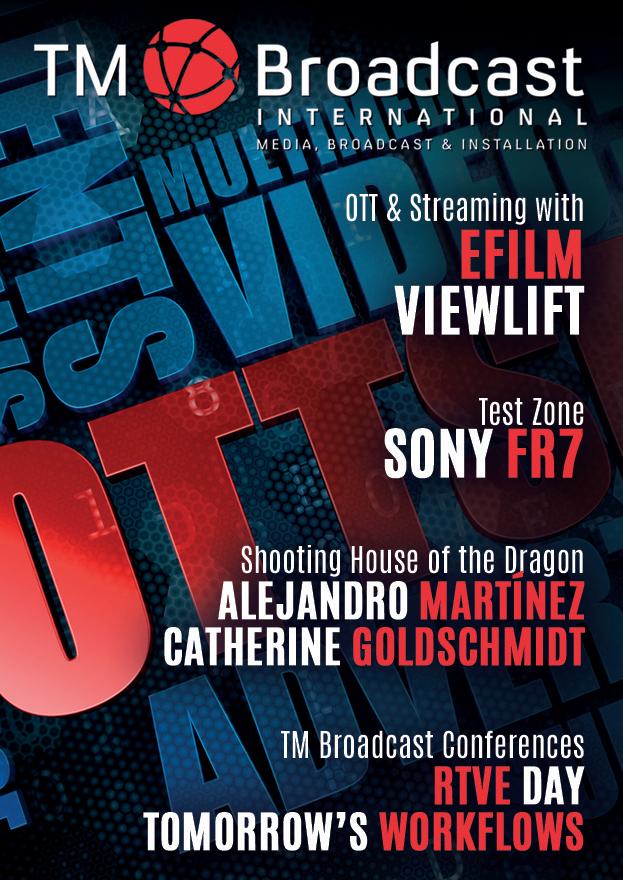
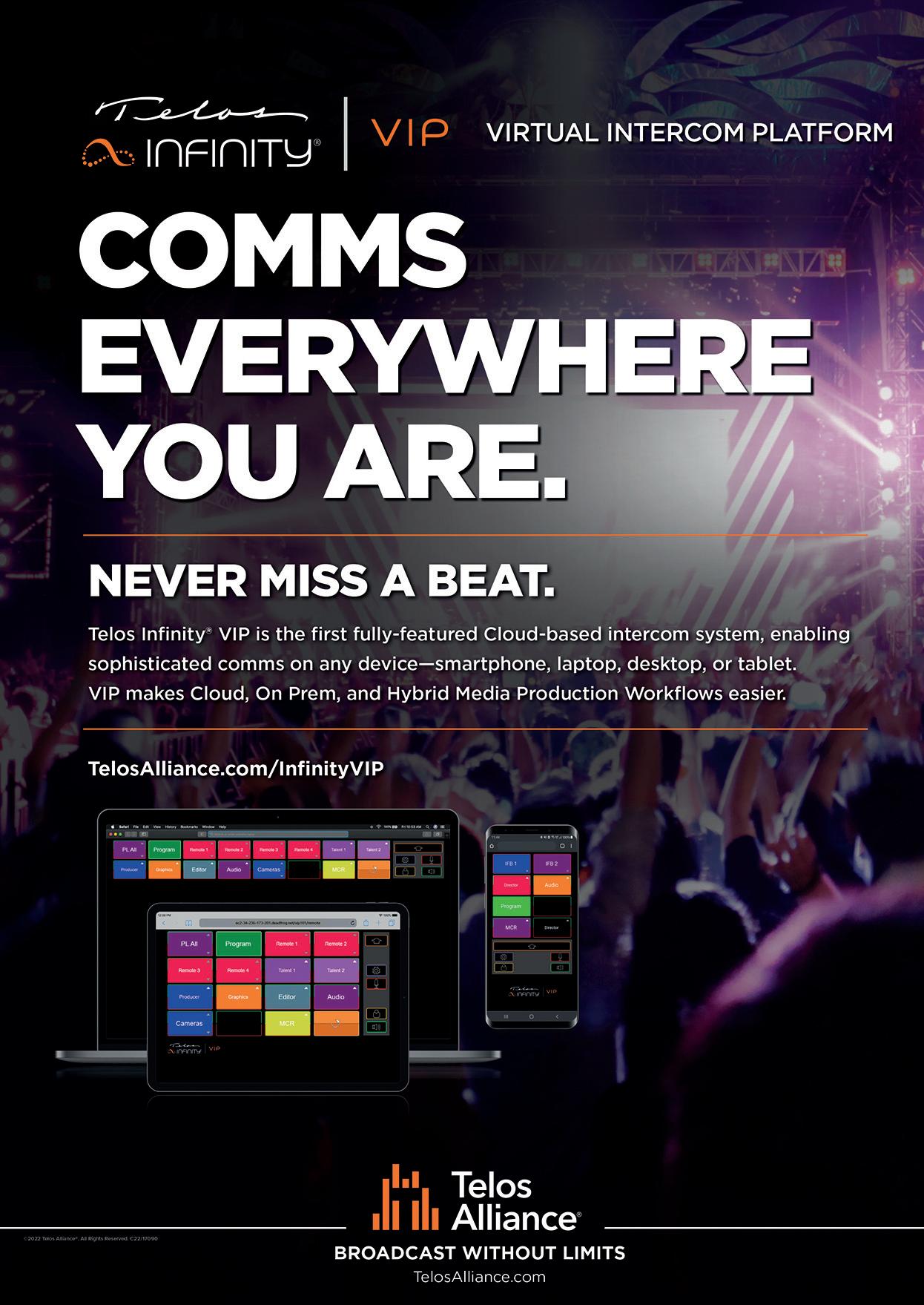



The OTT scenario is growing all the time. The business opportunities, even after we have all seen that the industry has exploded significantly, still exist. Technologies such as artificial intelligence still have a lot to contribute in the race to grab the largest share of on-demand content viewers. The key will be how platforms manage to attract their attention and offer a truly personalized service.
In these terms we have talked to Rick Allen, former cabinet adviser to President Clinton and current manager of the company Viewlift. Mr. Allen is an expert in technology, the industry and the OTT platform market. His vision is to put technology at the service of the customer. The user is the center of the service and the experience they receive from these digitized environments must be the best possible. We offer you directly the words of this professional about the future of on-demand audiovisual, do you want to discover them with us?
As part of our special “OTT Platforms”, we want to share with you a special case. The Spanish platform eFilm has found a specific business opportunity that has brought them great profits and promises of expansion. Currently, eFilm is already in the US and Latin America. Its roadmap goes through Europe. In these pages you will find the keys to their business. But first, a hint: it has to do with libraries.

BITAM Show is a Spanish trade event that brings together the AV and Broadcast sectors. The Spanish version of this magazine organized, in the recent edition of 2022, a series of conferences with the most representative managers of the broadcast industry in the Mediterranean country. We offer you, in these pages, the technological plans for the future of the main Spanish broadcaster: RTVE; as well as an advantage to face all that is to come: the keys to the conference “Workflows of tomorrow”. Representatives of Vizrt Group and the Spanish public broadcasters took part in it.
The FR7 is Sony’s latest major contribution to the market. This hybrid brings PTZ camera functionality to the most demanding cinematographic applications. Our experts have conducted an in-depth analysis of its capabilities. You will read more about it below in this issue of TM Broadcast International.
Finally, we want to share with all of you, the deep research we have done on the technical and creative processes, the technological challenges as well as the details of the shooting of one of the great television productions of this season: Game of Thrones. House oftheDragon. Alejandro Martínez and Catherine Goldschmidt are two of the professionals who have formed the cinematography team of the series. We invite you to discover everything behind this unique production.
How to serve free content to users on an ad-free OTT? The OTT’s future
From the perspective of Rick Allen, CEO of Viewlift
We find for the first time ever a series of elements that had never been present together in the same camera, all of them familiar to us, and whose benefits are projected in many more areas than we had first imagined.



GatesAir has recently announced a new transmitter. The Maxiva PMTX-1 outdoor transmitter was released last year and now it has been enhanced to support VHF TV and DAB Radio broadcast.
The Maxiva PMTX-1 integrates a low-power transmitter or transposer/ translator to support VHF and DAB use cases. Its enclosure makes the PMTX1 impervious to weather elements, with adaptability to any climate or outdoor environment thanks to its sealed protective shell. The VHF version covers channels 7 through 13 and is mainly marketed for use in North America and the Asia-Pacific (APAC) region.
The DAB version is viable for countries that have adopted DAB/DAB+ as its digital radio standard. In Europe, the PMTX-1 simplifies DAB broadcast service for tunnels, complex terrain that limits coverage, and areas shadowed
by buildings and other obstacles.
“We work with many TV broadcasters in the western half of the United States and Canada that rely on signal hops between multiple sites to cover broadcast markets challenged by mountainous terrain or widely dispersed territories,” said Ted Lantz, Vice President, Product Line Management, GatesAir. “If you look at DAB networks in Europe, we have many customers seeking better ways to add low-power transmitters to road tunnels to ensure uninterrupted service for travelers. They also want cost and powerefficient options to install low-power transmitters and gap fillers outdoors in
very remote, often harsh climates to cover small villages and populations. The PMTX-1 provides a host of new deployment options to simplify network coverage and penetrate these very hard-to-reach areas in ways that make financial sense.”
The PMTX-1 VHF and DAB version is almost analogous to the UHF version in design characteristics and componentry, with the mask filter and power amplifier as the only exceptions. The PMTX1’s optional RF receiver input supports flexible options for translator and transposer configurations. Broadcasters can add optional inputs to support DVB-S/S2 receivers and IP transport streams. Field operations are also simplified through the Maxiva PMTX-1’s clever one-piece design, which removes all moving parts and air filters to eliminate most maintenance requirements.

GatesAir launches VHF TV and DAB radio versions of Maxiva PMTX-1


Ross Video has launched its new Voyager Trackless Studio solution, a virtual graphics tool that uses Epic Games’ Unreal rendering engine to provide photorealistic environments.
“We are excited about the launch of Voyager Trackless Studio because it enables photorealistic environments in a single studio or simply using a green screen,” says Manesh Patel, manager of Product Management and Business Development, Virtual Graphics at
Ross Video. “Plus, it’s an incredible entry point for those who have limited technical experience while setting up equipment to prepare for the future as they grow and expand.”
The tool supports workflows such as: specialized sports segments; enhanced weather broadcasts; election sets; on-budget news studios; mobile/ OB production; corporate communications; and distance learning.
It offers a range of predesigned sets that come pre-installed; an intuitive user interface designed specifically for trackless virtual scenarios; full support for a variety of formats, including HD/ UHD/4K production, 12G and IP workflows, HDR and a wide color gamut; reduces virtual graphics complexity and simplifies processes and workflows; and enables full integration with the company’s other products.
EditShare has supplied a storage platform to Chinese television and production company BKW. This solution was developed and implemented by dealer and system integrator ThinkTone.
This implementation has been made to attend the needs of the reality show Love Actually. The idea of it is twelve people living in the same house during a month. The show tracks their relationships as they develop.
The nature of the production means there are more than 100 cameras shooting simultaneously. This means great amounts of content that demands a lot of postproduction needs.
The system, developed by ThinkTone and EditShare, is built on the EFS450 storage solution, with 13 nodes and around 2 petabytes of storage, all available online. There are 56 edit workstations across three production rooms.

Kiloview and YouKu, part of Alibaba group, have jointly completed the first full-NDI Outside Broadcast truck.

It is an all-electric truck that has been built as
the result of four years of cooperation between the two companies. The solution has also recently debuted in live video caster and remote production systems.
NDI OBV provides the ability to produce 20 channels of 4K video or 70 channels of HD video over a single Ethernet cable. Kiloview has implemented its wide ecosystem of
Kiloview implements its solutions in the world’s first fully NDI OB
video encoding/decoding, transmission, routing, monitoring, recording, and content management solutions. Specifically, it has CubeX1 for NDI multiplexed distribution; Cube R1 for NDI recording; LinkDeck for the whole ecosystem management; and Kilolink server for the platform management.
“I’m extremely excited and proud to say that
our completely IP-based solution is now fully mobile and that we are covering all the elements and processes of video transmission within the confines of this new NDI OBV truck,” sentenced Jacob Zuo, CEO and cofounder of Kiloview.
“Until now, single teams weren’t able to finish an OB truck project, covering the whole workflow with NDI tech alone; that’s the
whole video production process from the encoding, production, recording, and post-production, even with effects like slo-mo,” commented Zeng Wei, Senior A/V Technician at YouKu. “But now we’ve integrated all the NDI and IP-based tech into one vehicle, and we believe this is the first one of its kind in the world.”
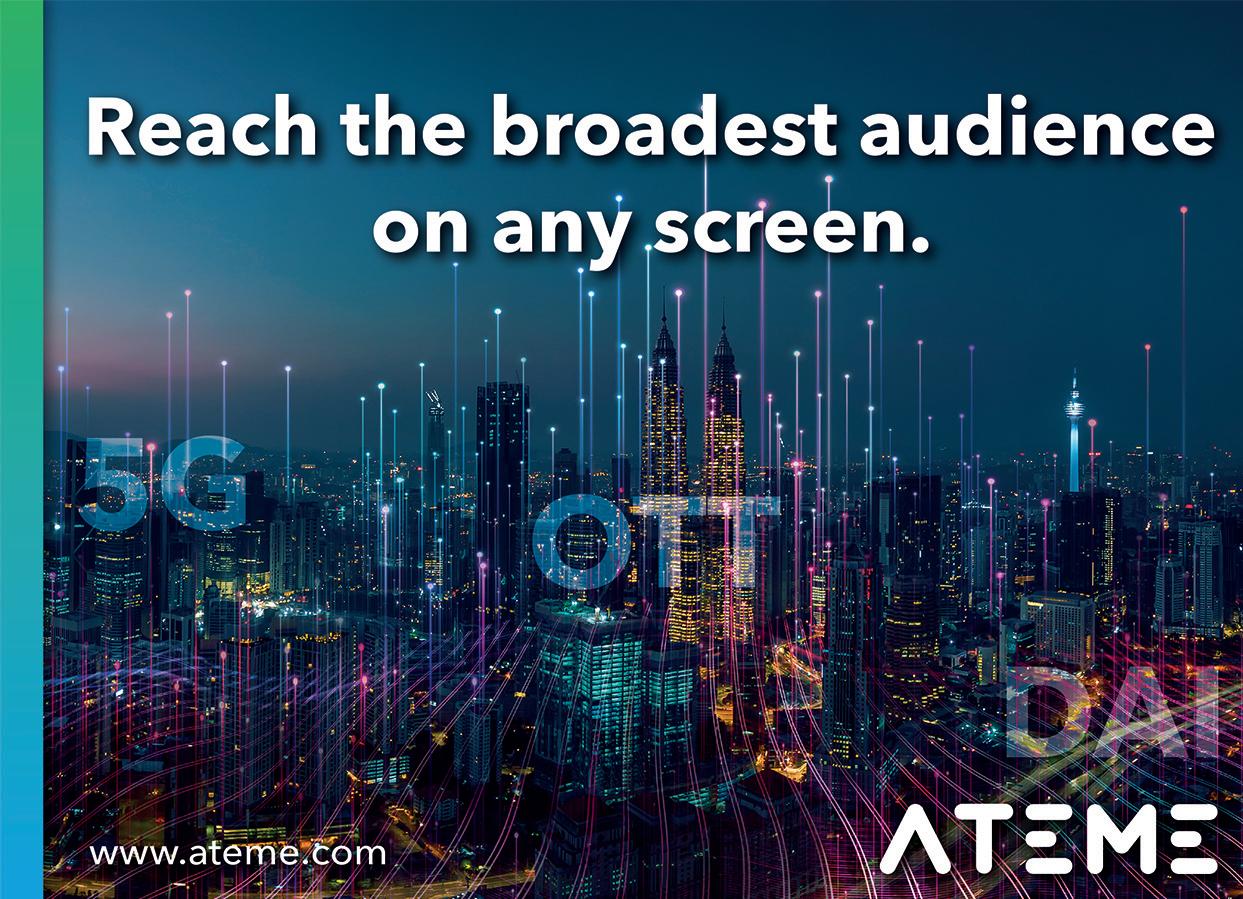
The Brazilian media company Globo has created a MPEG-5 LCEVC enhanced channel for its broadcast of the World Cup in Qatar. They have created this workflow by trusting in V-Nova’s compression solutions.
It consists of a live broadcast channel that leverages the LCEVC enhancement layer to convert an existing TV 2.0 signal into a 10-bit high dynamic range (HDR) channel for enabled receivers.
Transmission happens over the existing ISDB-Tb system, so this use case enables the inclusion of LCEVC in the TV 2.5 specification.
It also features the first end-2-end trial over DASH streaming of an LCEVCenhanced VVC video. This is an example of the capabilities that are developing to support the upcoming TV 3.0 standard, Brazil’s next-generation
DTT system that is being specified by the Brazilian SBTVD Forum and is due to be deployed in 2025.
It is the first time these technologies are being used in a complete end-to-end production to provide 4K HDR video with immersive and personalized audio. The system will facilitate the distribution of current and future formats, including 8K resolution, HDR and NextGeneration Audio (NGA) to over-the-air broadcast (OTA) and over-the-top (OTT) streaming platforms.
The two LCEVC trials are the outcome of a long project that saw the collaboration of companies such Ateme and V-Nova.

“TV 3.0 will require a wide ecosystem push to bring over-the-air and over-thetop deliveries together and
unlock its unprecedented monetization potential.” assured Mickael Raulet, CTO, Ateme. “Ateme is proud to do its part. Providing the VVC compression for the Globo World Cup showcase is a key milestone in this longstanding effort.”
“These two showcases with Globo in Brazil are extremely exciting. As part of a TV 2.5 trial, we were able to put on-air the first broadcast channel with LCEVC during the football World Cup. As part of the TV 3.0 trial, we are showcasing LCEVCenhanced VVC live for the first time on an end-2-end system. This would not have been possible without Globo and the dedication of several technology partners,” highlighted Guido Meardi, CEO, V-Nova.
Globo creates an MPEG-5 LCEVC channel for Qatar World Cup broadcast with Ateme and V-Nova technology
Amazon Studios has recently announced the opening of Stage 15. This studio is a virtual production stage and it has promoted of the new Amazon Studios Virtual Production (ASVP) department. The virtual scenario combines two former stages to accommodate a LED wall that is 80 feet in diameter and 26 feet tall.

The stage volume wall is composed of over 3,000 LED panels and 100 motion capture cameras. The Virtual Production set includes a full LED ceiling with drop-out panels, so that productions can rig up to 350,000 pounds of lights and production gear to its truss.
In addition to the LED volume wall, the stage will include a virtual location-scouting volume, a performance-capture volume, a tech-scouting volume, a green screen simulcam stage, and a client-facing VIP viewing area for visiting executives,
filmmakers, and guests. This space will also feature a second, smaller LED stage, with a completely mobile LED wall, camera-tracking system, and control cart, along with an engineering workshop, scanning, 3D-printing, production workspace, and equipment storage.
The first feature film to shoot on the new Stage 15 will be family holiday comedy Candy Cane Lane, directed by Reginald “Reggie” Hudlin and starring Eddie Murphy.
Stage 15 is fully connected into the AWS cloud, and is an integrated part of the production-in-the-cloud ecosystem. The facility
provides a camera-tocloud workflow, with direct connection from Stage 15 to AWS S3 storage.
The ASVP team is also developing a VFX and virtual production asset management system that lives on the AWS cloud, allowing production teams to catalogue, search, preview and repurpose production assets.
“With the combination of AWS and Amazon Studios innovation is inevitable,” said Chris del Conte, global head of VFX, Amazon Studios. “When you mix the worlds of entertainment and technology, it allows us to take everything to the next level.”
in various video formats. At the same time, the EVS setup allows for transition path to IP. These serves support standards like ST 2110 and NMOS.
ProSiebenSat.1 Media SE is a media and digital group that is currently in the process of building new studios. In the new infrastructure, the company has implemented EVS solutions for asset management — MediaCeption Signature— and live production, replays and highlights — LiveCeption Signature—.
The new broadcasting studio will be part of the new campus, consisting of three buildings designed to accommodate approximately 1,700 employees from mid-2023 onwards.
“The move to our new
campus is an opportunity for us to completely revamp our day-to-day operations,” said Holger Schwenk, Vice President Playout & Production Solutions at ProSiebenSat.1 Tech Solutions.
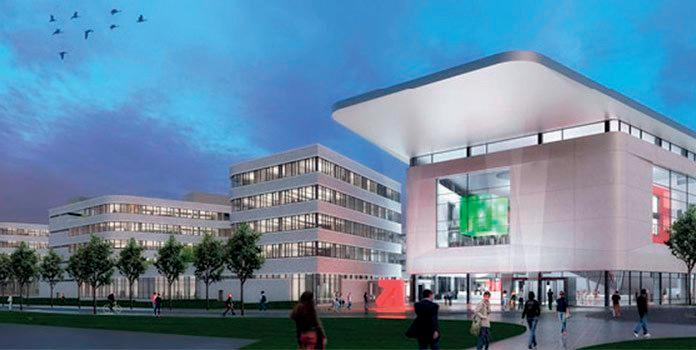
Offering a deep insight of this movement, Holger continues, “We were looking for a rock solid, fail-safe solution that would help us maximize our live production workflow with the ability to easily scale up to support our future growth.”
EVS’ XT-VIA and XS-VIA production servers will allow the production team to ingest multiple live feeds
For the live PAM, ProSiebenSat.1 has chosen to rely on MediaCeption Signature solution. LSM-VIA systems will offer advanced functionalities for replay operators and access to content. Replay operators will also benefit from transfers of content thanks to the XNet-VIA 10-Gbps bidirectional Ethernetbased network.
Nicolas Bourdon, Chief Marketing Officer at EVS concluded: “With our comprehensive solutions, ProSiebenSat.1 will benefit from a simplified production architecture that will help them increase the speed and flexibility of their operations as well as ramp up the value of their productions as it begins its new phase of growth and development.”
NinetNine content provider and Arabsat have recently announced the launching of live linear entertainment TV channel Helwa TV. It will be available free-to-air on satellite TV broadcast BADR-6, which reaches 550 million people in the Middle East and North Africa.

Helwa TV is operated by NinetNine and co-owned with BluTV. The channel broadcast with BluTV. The content proved to be successful on European cable networks and on Dish Network’s OTT service, Sling TV in the US.
Commenting on the partnership, Arabsat CEO Alhamedi Alanezi said, ‘’Following Arabsat new strategy expanding our cooperation with key partners, we succeeded in creating an ecosystem of international media partners that allows us to build strong ties with our clients. NINETNINE’s innovative media distribution approach aligns with our vision and strategy. This partnership is the first brick of more projects to be announced in 2023.”
“This is an incredible
opportunity for people across MENA to have free access to Helwa TV and to enjoy a range of premium shows and local content that has been entertaining the Arab and North African diasporas living in Europe and North America,” explains Samir Zehani and Adel Hamla. “We’re delighted to announce this latest expansion of our media services and to partner with a leader like Arabsat to monetize our content differently.”
NinetNine operates Helwa TV: a new linear channel launched by Arabsat services
GO, Malta’s communications services company, has implemented a playout and media management architecture from Imagine Communications.
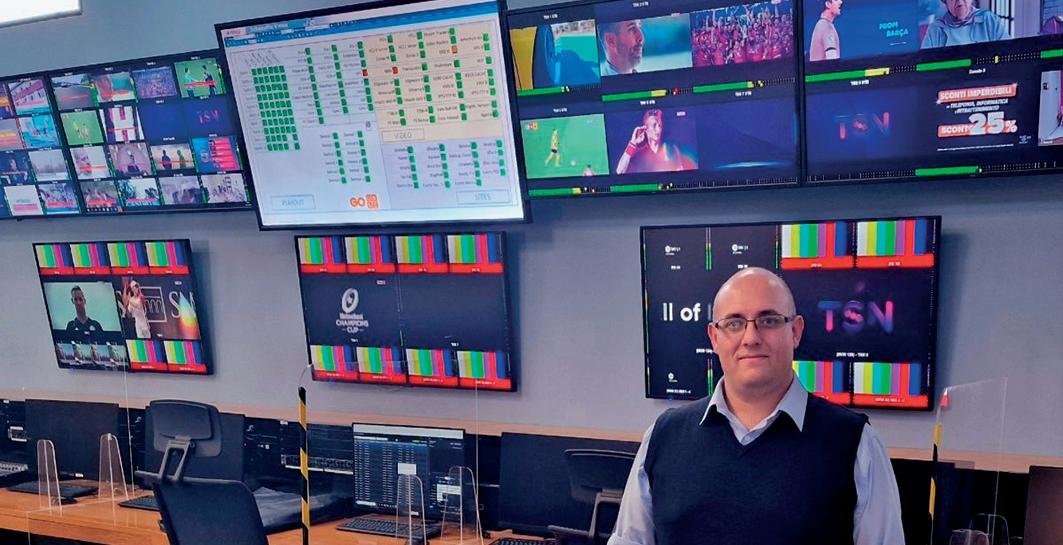
The new system has enabled GO to serve and manage multiple channels by maximizing operational efficiencies and ensuring a good user experience.
“The playout solution that Imagine proposed not only addressed the challenges we had defined, but delivered
more benefits than we expected,” said Martin Abela, senior manager of video operations for GO. “Imagine’s playout architecture efficiently supports multiple channels, so we are able to operate our channels with fewer servers. Their client-server approach gives us far better control and easier playlist management, particularly during live events. We also benefit from enhanced graphics and animated pop-ups, automated archiving and retrieval, and much better redundancy
management.
GO thoroughly reviewed the market before choosing the wellproven architecture from Imagine Communications, built on the company’s widely deployed Versio™ integrated playout platform and ADC™ automation. Material is managed and workflow control is provided by Versio Content Portal, including the capture of live programming onto the Nexio® video server. Also included in the new system is SDI routing via an
Imagine Platinum™ router.
To provide the optimum balance between capital cost and resilience, the new system is designed with 10+4 channel redundancy, where four backup Versio channels protect the 10 main program outputs. The two most important commercial channels each have their own dedicated backup, with the remaining two redundant Versio engines capable of automatically taking
over any of the other services should it become necessary. Intelligence in the playout automation synchronizes the playlist so the backup channel takes over within just a few seconds, seamlessly and with minimal disruption.
“What the GO project demonstrates is that even broadcasters serving a small community the population of Malta is little more than half a million expect to be able to deliver
premium experiences for their audiences, with the most efficient of modern, automated workflows,” said Mathias Eckert, SVP & GM EMEA/APA at Imagine Communications. “With the Imagine philosophy of supporting our customers with their technology transitions at their own pace, we were able to supply GO with proven technology that meets their requirements today and provides a platform for future growth.”
Riedel Networks has announced that the company has been named connectivity partner of Dyn Media. It is a streaming platform for sports.
From the summer of 2023, the intercom’s company will provide the connectivity services for national leagues and cup competitions such as the LIQUI MOLY Handball Bundesliga, DHB Cup, the easyCredit Basketball Bundesliga and the BBL Cup.
The Dyn Media commitment is to put previously underrepresented sports in Germany’s media spotlight and to bring their TV production to a new level.
The streaming service has already secured
the media rights for other national leagues such as the Table Tennis Bundesliga TTBL and the Volleyball Bundesliga VBL and is scheduled to go live in June 2023.
The production of more than 700 matches per season has been entrusted to NEP Germany.
Riedel Networks will bundle all audio and video signals from over 70 venues across Germany at the Dyn sites in Cologne and Munich to be processed in two Virtual Production Units (VPU). These are connected via Riedel Networks’ own network in a redundant 10-gig fiber ring to the cloud platform Amazon Web Services (AWS) and the Dyn Operations Centre (DOC) in Wuppertal.
Riedel will support the remote production of more than 700 sports games on the Dyn Media platform
Recently, the annual summit of the connected TV industry was held in Prague. It is known as HbbTV Symposium and Awards 2022. It was developed by the HbbTV Association and the Czech Association of Commercial Television (AKTV). The event was attended by some 200 participants from 18 countries in Europe, the United States and Latin America.
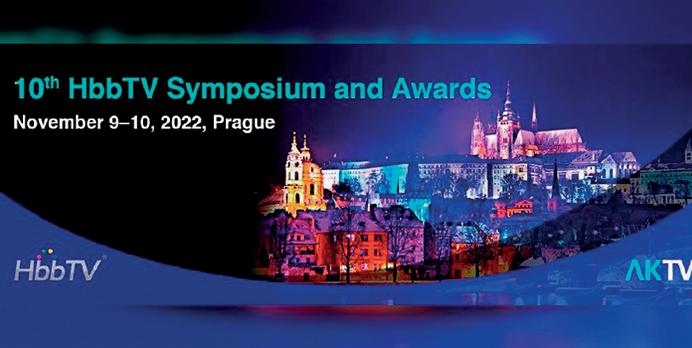
The industry has given strong support at this meeting for the implementation of the HbbTV specification for targeted advertising: HbbTV-TA. The objective is to promote new monetization possibilities for broadcasters, advertisers and manufacturers.
The Addressable TV Initiative (ATVI), founded by the German media companies RTL Deutschland and Seven.
One Entertainment Group, aims to achieve full technical interoperability of the HbbTV-TA and ADB2 specifications in smart TV sets and set-top boxes across Europe. Other topics discussed at the conference include the involvement of HbbTV in the new DVB-I standard, which combines linear TV channels and streaming services in a unified channel list, the important topic of conformance regimes and interoperability, which ensure that reception devices fully comply with the HbbTV specifications, and technology trends such as the opportunities
for broadcasters in the metaverse and HbbTV beyond classic broadcast environments.
“One important trend which surfaced at the Symposium is the engagement by industry players in various initiatives to better use and implement the HbbTV specifications and make the HbbTV ecosystem more practical and efficient, as HbbTV is now a true business enabler for many companies and not just an innovation area. The foundation of ATVI is the perfect illustration of that,” said HbbTV Chairman Vincent Grivet.
HbbTV association promotes standard for targeted advertising (HbbTV-TA) at latest HbbTV Summit
The Sky Group has recently opened its new Innovation Centre located on its Osterley campus. The inauguration has been performed by the Secretary of State for Digital, Culture, Media, and Sport, Rt Hon Michelle Donelan MP. The company’s CEO, Dana Strong, was also present at the ceremony. This is the latest addition to Sky’s headquarters in West London. The new campus is home to over 8,000 staff, including its dedicated studios for Sky News and Sky Sports.
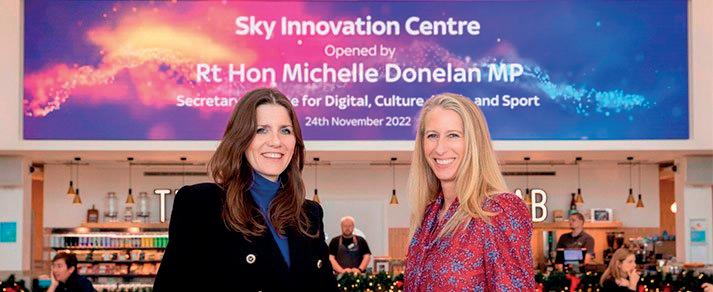
The center houses
600 tech engineers, and software and app developers creating the next generation of Sky’s technology and platforms, and is also Sky’s first fully net zero carbon building with over 473 sqm of solar photovoltaic panels.
Dana Strong, Group CEO, Sky, said: “I’m delighted to welcome the Secretary of State to open Sky’s new Innovation Centre on our London campus. Sky is part of the UK’s thriving cultural economy. We employ tens of thousands of people here and our new Innovation Centre shows
that our commitment to UK technology and talent has never been stronger.”
Michelle Donelan MP, Secretary of State for Digital, Culture, Media, and Sport, said: “It is my mission to give people the skills they need for the highquality, well-paid jobs of the future – so it is great to see companies like Sky investing to train up our next generation of software and app developers and tech engineers. Innovation is what Britain does best, and it is at the heart of the government’s priorities for growth.”
Sky Group inaugurates the Innovation Center that will mark the group’s technological evolution

eFilm is a unique VOD platform. It deals with a very specific market niche that could potentially be the entire population of a country. This way of offering audiovisual content to the entire population without doing so directly is achieved through libraries. eFilm has been able to move the traditional lending service associated with these centers to a digital environment. In Spain they already have got the whole sector, and right now they are expanding throughout the United States and Latin America. Europe comes next. Do you want to know what is the technological infrastructure and business model behind a free OTT service for users that is not based on advertising? Xabier Ordiales, the company’s CTO, offers you all the answers.
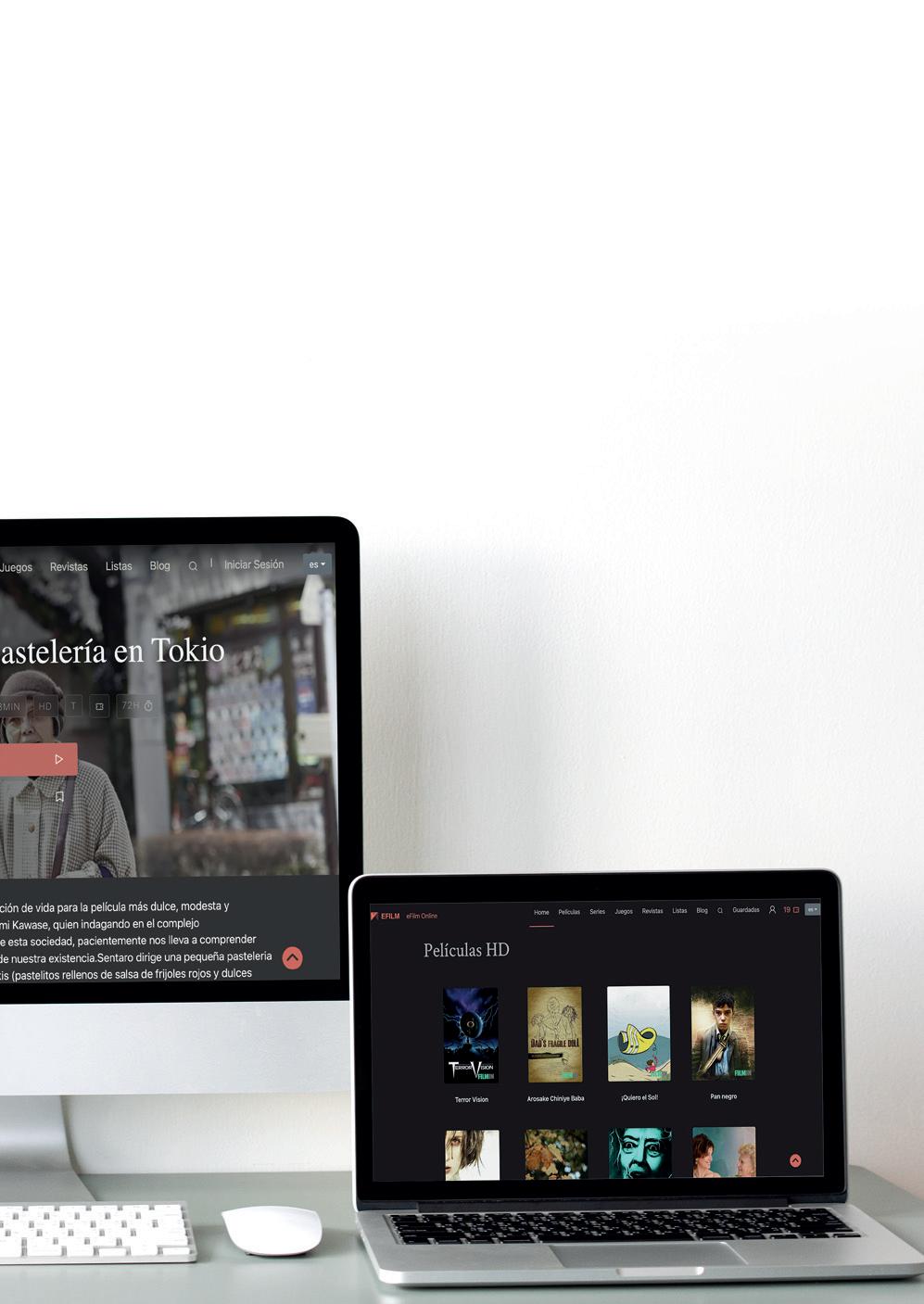
The origin of the idea behind eFilm dates back to 2009 in the company Infobibliotecas. This company has focused on offering library services. Apart from offering physical books, it also continues to serve physical DVDs, music and other services. On that date, a new future began to emerge. Audio-visual streaming platforms were already playing music. In 2011 we began development by contributing models and ideas. We concluded the pilot with Filmin in 2016. However, it was not until 2018 that we made the leap to larger customers. The first was the Government of Murcia and very soon afterwards the Basque Government.
What was your collaboration with Filmin about?
At first we made sure that Filmin was the aggregator that had most of the contents from the libraries. Originally, we developed a platform to serve this
content. Therefore, we were intermediaries. Since then and still today we have Filmin as the main content provider for our platform. The user is viewing the content of Filmin on our platform, but it still remains content of this company that is distributed on another platform, ours in this case. The main difference is that it is consumed through the pay-per-view model.
The library is the one purchasing the content, just like with the lending of a physical DVD. It is the library that pays for it and the user that enjoys it for free. Libraries have had
Filmin is a Spanish VOD platform whose distinct feature is taking care of the film product in a delicate way and by offering its subscribers films and independent, cult series and, above all, ones that are often unknown to the general public.
Its ambitions, in addition to offering a very exclusive content, are also to cater to the demands of an audience accustomed to respect for all aspects of cinema. Therefore, they also strive to offer video and sound quality in the playback of all their titles.
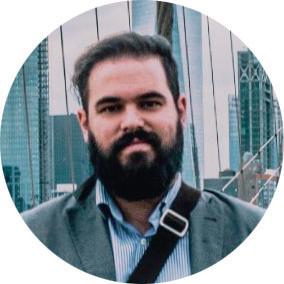
digital services for years; this would be one of them. We work only with libraries because we acquire the rights only for libraries. This makes things much easier for us Should we want to acquire the rights for the general public, the investment and effort would be much greater.
Apart from Filmin there are more content providers. How does your network operate?
We have different models. There are providers that supply us with content to be consumed from their platforms, as could be the case with Filmin or Rakuten.

But we have also released another model just this year that allows us to host the content. The development of this capability is now three years old, and we have completed it so that we can work with other providers that do not come through large aggregators.
The reason for this expansion is that we have opened a counterpart platform in the US and Latin America. In these places Filmin has no presence. In this way, we make sure that we deliver content through other means.
To achieve this, we have had to implement a technology in line with that used by the majors. The process is being slow because there are a number of drawbacks
associated with this adaptation. But our goal is to have an OTT.
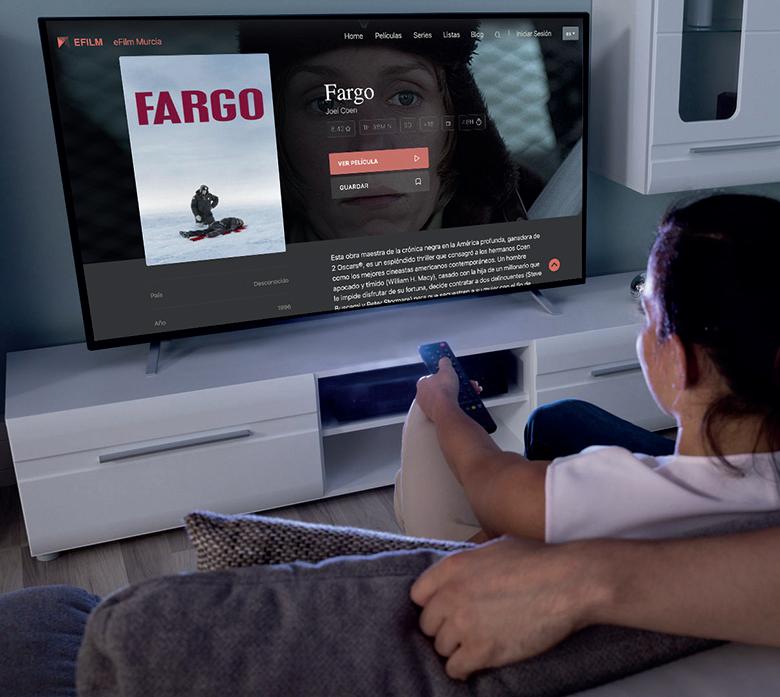
On the other hand, we also work with RTVE and Antena 3 to distribute content outside Spain. In the case of these suppliers, our business model is different from the usual one. We work with them through subscription.
What is your usual business model?
The model is very simple. We pay a fixed price to providers for each view and the library pays it to us with a margin. We charge per each view. For users, it’s really free to watch movies. However, playback is limited. The library is the one that sets the limit by using the lending model. It is usually set by regional communities; for example, Catalonia has a limit of two a day. If not, it would be a bottomless pit in which users could enjoy uncontrolled content. Do similar platforms in Latin America and the US have the same technology as the Spanish platform?
No, they do not. In the end, that depends on the agreements in place with content providers. For example, in the US we work with Edye from HITN: with them we provide a channel for children’s content. We also work with Trebble: they provide music; or with Teatrix for performing arts content.
The US model is more complex, as you can see. Depending on all these providers, we adapt so
as to be able to host and offer the content or let them host and serve it themselves. The aim of this adaptation is to try to offer as much content as possible. For users, this process is and should always be completely opaque.
What is the business model of these different agreements?
We work with VOD models and also with subscriptions
for certain content. This is the US model. In Spain it is all VOD. Distribution rights here are purchased directly from providers or aggregators.
What are your goals in the area of technological development?
We expect to have the TV apps up and running by the end of January. We have selected Samsung, LG and SmartTV. On all other devices, the technology is
ready to work anywhere in the world.
To work anywhere in the world, you must also pay attention to rights management. How do you work in this regard?

Each content has certain rights associated with the territory. To adapt to this fact, the truth is that we do not have a platform, we launch one platform per customer. However, there is a two-tier security. For example, the Madrid platform has content only in Spain. At the same time, these audiovisuals are secured by IP so that they can only be viewed in the country for which rights have been granted. This is a feature demanded by customers themselves. Nowadays, we are working to achieve these kinds of rights in other countries. We could say that the greatest non-technical challenge is precisely this.
Is the infrastructure of this redundancy of territory-dependent platforms the same? Is there a basic template
that serves as the foundation for the infrastructure?
Yes. Madrid has its particular needs, Catalonia has its own. In the US, it really is a single platform such as Hoopla or Kanopy, which are our counterparts there. But in Spain we had to adapt to the needs of each library in order to access the market. For example, the connection of libraries is usually different in each of them. We need to integrate with both their user management system and their catalogs. In sum, what we have developed is the same back, but with different fronts.
What are the details of the adaptation to libraries?
When a person logs on one of our platforms what they do is connect to the library’s platform. That is, they connect with their management system. In the end the idea is that the user who comes from the library already has his/her login on the eFilm platform.
Another of the integrations concerns the catalog. The goal of libraries is the creation of large collections. All of them have a platform on which they upload their catalogs. It is always a challenge for us to share references between the eFilm system and the library system, categorize the collection for our standards and manage the catalog so that the files are also updloaded. Added to this is the complexity that all these catalogs are mobile. Additons and deletions take place all the time. This is one of the biggest challenges we have at a logistical level. For example, Filmin communicates to us the films that are written off every day and they also let us know what the additions are. Our job is to automate these processes.
The platform is in the cloud. We’ve done a job with Amazon Web Services. They helped us define the whole structure.
One of the problems we have faced is that we have a lot of referral traffic. Google’s robots give a good score to the platform because it is referred to by public bodies. For this
reason, when a user runs a search on Google for “How to watch a movie online?” one of the first results that the search gets is our platform. This may sound like very good news, but the

vast majority of people who make this request are not library users. We have autoscaling in place for traffic peaks, especially in regard to the visual part.
We’ve got this all figured out. We have implemented tools such as a load balancer, we work the fronts with cloud front in order to have high availability worldwide at low
speeds, etc.
As for streaming, we also work with Amazon. Apart from these delegated services, it has been years now since we decided to carry out the technical development ourselves. It was not possible to outsource everything, as prices would have skyrocketed. We risked doing it ourselves. For example, nine years ago we went for Python. So, it was a move that had to be made and time has proved that it was a winner. Today this is the language used by the most significant OTTs. After all this development time, we can say that the version we are finishing will be the final one for the next few years.
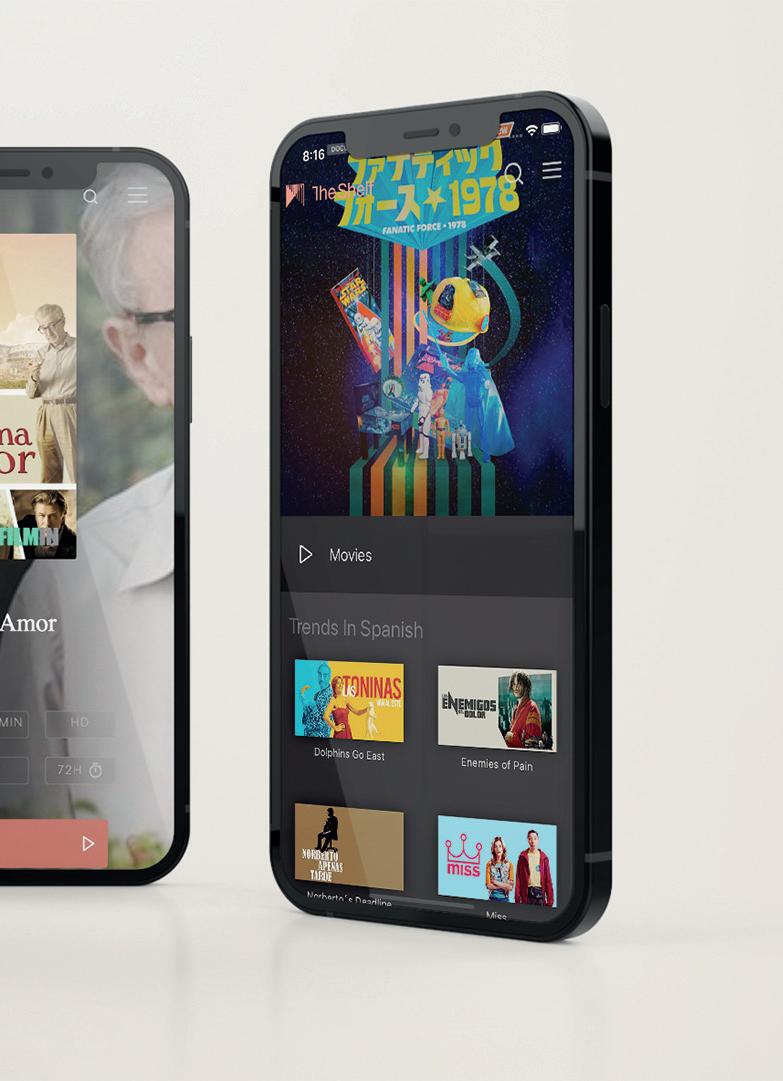
You commented before that you work to automate many of the integration processes that you must comply with. In what stage are you in this regard?
It’s all fully automated already. On the one hand, we automate the catalog with the relevanr provider.
Every day we get an XML file with the additions and deletions that we run for our platform. In the same way, we generate another file for each library, because they have different systems, in order to upload the catalog. The library sees the film’s tabs and what it gets is a resource to the eBiblio platform. This is their content discovery tool. If a new provider were to arrive, we would have to add it to that automation system. If a small one, it would normally be done manually.
automation?
The same operation as Just Watch. They generate some URLs by means of an XML file, where all the information is. We have a Celery queue that reads those files and makes the relevant modifications in the database. A file is generated with a specific format for each provider.
Depends on the contract. If it includes DRM, we adhere
to Amazon’s procedure. All content is converted to M3U8, which then splits the content into microfragments to secure the content in the player.
We rely on Amazon’s services. We also work with several player providers, and we also outsource the service to them.
Given the fact that we work under the on-demand model, in each price per view we include the cost of streaming, and also the costs relating to security. The case of subscription platforms is different. They really do have to do calculations to make these details profitable.
Besides, we perform an IP control. Our platform also has security in terms of cyberattacks, logins, etc.
In Spain, in the library area, we practically control the entire market. Libraries that do not have this service in place is because they do not have the money for it. We are now working on obtaining rights for private
libraries, that is, universities and private colleges.
We’re also trying to get more rights to keep expanding. Our idea is to access the territories of France, England, Italy and Germany. To do this, we work with current and new providers in order to expand into those new territories.
Once we have the applications for TV sets, having already the applications for mobile devices in place, we will have the complete pack to access the entire audience.
We are also exploring the possibility of including direct links on our platform. For example, today we work on a model of content consumption that mimics a movie theatre. A massive showing of a content is made and the right to watch the audiovisual is charged as if you purchased a ticket for a movie. This is because there are certain theathers in Latin America that have exhibition rights both locally and online. To avoid problems in regard to security, only the content is
allowed to play on a screen simultaneously.
Regarding content, we are looking to add new titles and also new formats. At present have movies, games, magazines, music, podcasts, etc.
Another point we want to emphasize is working with libraries to make promotions. We have been working with communities such as Madrid and Barcelona for five years and there are users of libraries who do not know the platform yet. We believe, however, that the marketing of this product by libraries has not intensified because they are afraid of becoming victims of their own success. Keep in mind that it is such a juicy, free-of-charge service for potentially all citizens, that if it grew a lot in terms of audience it might not be able to meet so much demand.
The technology is ready for
competition. Right now, we are moving fast to take it to France, this is our most immediate step.
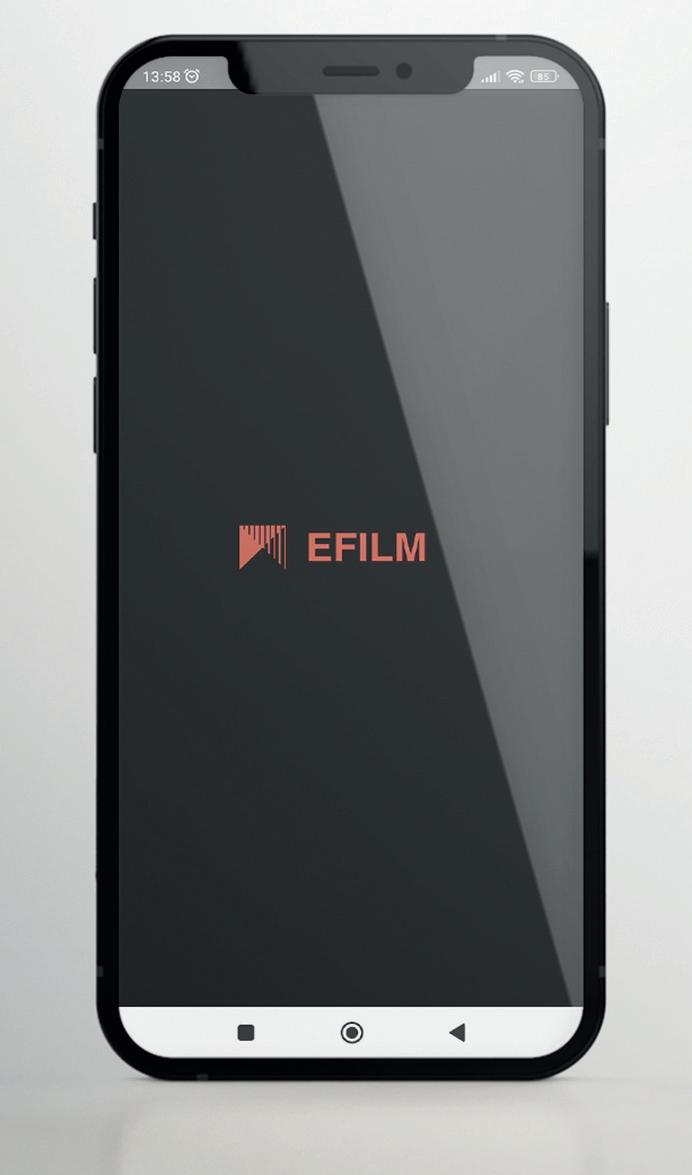
The future of OTTs raises many questions and uncertainties: What new content consumption experiences will the user live? What will be the idiosyncrasy of the market: will it be made up of a few big fish or millions of fish trying to survive? How do we respect the user without overwhelming them with a huge excess of supply?
Many of these questions are still unanswered, but we can offer an approach where today’s cutting-edge technology has a lot to contribute to the resolution of these doubts. In the context of the OTT Summit 2022 held in Madrid, we talked to Rick Allen, CEO of Viewlift and industry guru. He helped us to understand the fundamental role that technology will play in the development of digital consumption modes, as well as in the creation of experiences that we can’t even dream of today. Will you join us on this journey into the future?
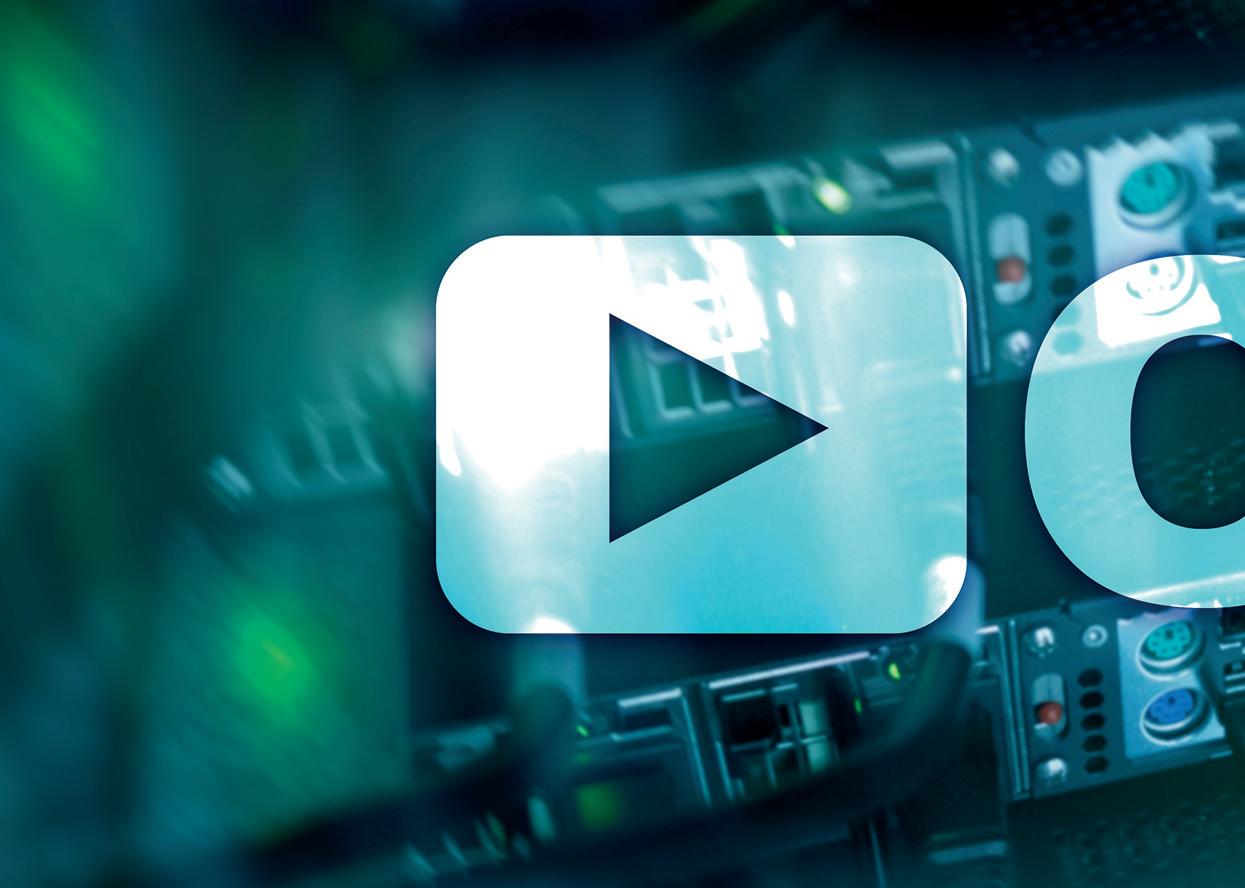
Who is Rick Allen? Can you tell us about your background?
I started as a practicing lawyer, and went into business very early. I ran a big group of companies in Los Angeles that did a whole range of things, such as real state, fashion, technology, transfers, etc. After that, I went back to Washington DC to work in the Clinton administration. There I put together the AmeriCorps: young people serving in communities and doing good work
for non-profit programs. Then I went to Discovery and help the founder of the Discovery Channel to expand his business into other areas. Next, I ran National Geographic, launched the cable channel and got them into feature films. After this stage, Paul Allen, the former cofounder of Microsoft, asked me to do a turnaround on something called Sporting News, which was America’s oldest sports media company. After selling the company to Condé Nast, Ted Leonsis and I started
what became ViewLift. It has been in media and technology for almost 30 years. Now we are down to the future.
We are an end-to-end streaming platform. We stream and monetize our client’s content across all the web and over-the-top devices. We create channels for our clients so they can serve their content to the devices their consumers want.
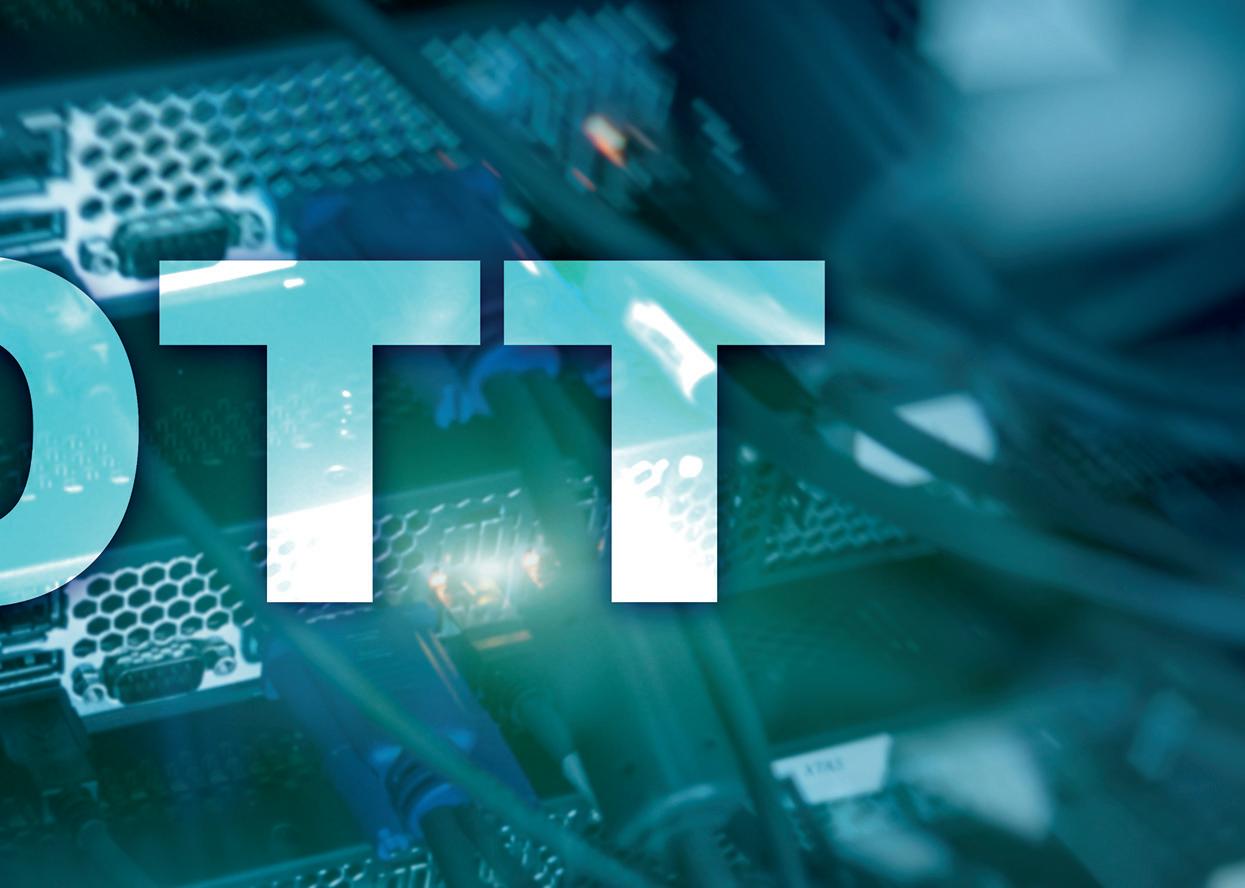
What is the technology behind all these capacities?
Everything is streaming over Internet protocol. We create OTT platforms for production companies, cable channels and news organizations. We have a lot of software development that supports this platform so that all the features and functionality are comprehensive, scalable as needed, cost-effective and keep that system running.
Is all this software development made in house?
We have worked closely with AWS since their very beginning. We have always operated in the cloud because we knew that that was the most efficient way to spin up and operate these channels.
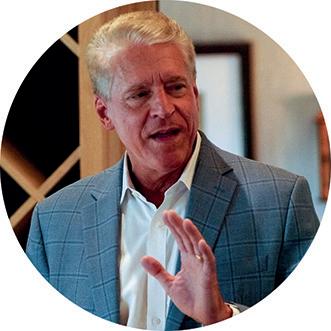
We are now beginning to move to being cloudagnostic, meaning we can put up your channels utilizing a variety of providers in addition to Amazon. That is the newest development in the business.
How
Viewlift differentiate itself from the competition?
There are many differences, but I would point to two.
One is how comprehensive our solution is. We are what we call end-to-end. If a hypothetical customer came to our door saying “I’m a sports league and I have 64 games a year” or “I’m a production company and I have 2000 hours of TV and movies”, everything from there could be done in our system. That means distributing the content across the Internet on all devices, monetizing it and tracking the business.
The second one is speed to market. We were the eleventh developer on iPad. We were one of the first Roku channels. We
have been launch partners for almost every device platform. We understand this ecosystem very well as well as what each device needs to deliver the best consumer experience. We have done full global operation in 172 countries in a matter of days. Very few operators have the capacity to deploy all these solutions so quickly.
In addition to that, we have the capacity of helping our clients strategically. That is because we know the world they are operating in. We can advise them how to differentiate themselves in the marketplace, How to deliver great customer service, how to build beautiful products digitally.
We have been doing a lot of work in the sports area. We are now working on a very large project in Washington DC. This is the first time that a multi-professional team owner, operating in the single market, has brought together its traditional linear
broadcast rights, which it has now bought back and controls. They control a television broadcaster and they control their digital network, which we have been operating for many years, and now they have the ability to do something that very few organizations have had: to think linear and digital simultaneously. Today we are working on a digital service for this customer that operates in conjunction with a linear broadcast entity. It will be launched next fall.
We’ve been doing some very interesting things with other sports providers. They are specialized in short-form content, and they use personalization tools to make sure they have the right content to deliver to the fan on the right device and when the fan wants to watch it.
Do you think that pandemic has changed the OTT environment?
I will answer this question with something we have experienced. One of our clients is a Bollywood studio, Hoichoi. They did
tremendous business when the pandemic hit because people wanted to be entertained by watching their movies. What this client has learned, is to spread that growth over a period that already looks more like the life we were used to. So the pandemic did change their business, but they were able to extract what gave their business value and perpetuate it over time.
The pandemic has also changed the world of sports. Sports operators had a very hard time when the various games were played without spectators in the stands. Now they are back to playing in front of the fans and, in addition, they have grasped the idea that through the entertainment media developed during the pandemic, they can reach much higher market levels. Their concern now is to reach parts of the world where the particular sport is not offered.
For us it has also changed because now and after the pandemic there is a need to make the products good
and very accessible. That is where we are currently making a push.
You mentioned that everyone is trying to offer content on multiple devices. Is it necessary to adapt the content as well?
Not really, the content should not be adapted. What should really happen is that the content should be accessible and really correspond to what the fan wants to see.
In the world of sports, one of the main areas we have been working on is how to offer interactive experiences with the live game itself. We can take this learning from the world of streaming or betting. In the latter case, sports fans want to know the players’ statistics. We are creating experiences for users in which key statistics are integrated into the main screen through which they are accessing the content or on secondary screens as well.
All of these things are not necessarily changes in the
content. The key is on how do you personalize the offer.
I will illustrate it with an example. I live in Washington DC. Our hockey team is fabulous. It’s called the Washington Capitals. I am a big fan. Two nights ago, one of my favorite players scored a shot skating through three defenders. They knocked him down and he made the shot as he was falling to the ice. Completely astounding! I wanted to show my sons this amazing highlight.
With a good service, the given platform broadcasting that game would have
offered me that particular content directly. It could be through a direct notification on my smartphone alerting me that that play had happened and that it was now ready for me if I wanted to watch or share it.
With a good service, the given platform broadcasting that game would have offered me that particular content directly. It could be through a direct notification on my smartphone alerting me that that play had happened and that it was now ready for me if I wanted to watch or share it.
That facility is very important for fans, because
as leagues and teams offer their rights in different ways, you don’t know where to go to watch the game tonight. Last night, it might be on this channel, tomorrow it might be on another. As a fan, it’s critical that everything is easy to find.
Yes, and actually they’ve all done it in one way or another, but the big broadcasters are still used to trying to figure out what product appeals to the widest possible market.

They can say, well, “the biggest audience in Spain is only interested in soccer and they don’t want to watch your motorsport events.” That’s not true. It may not be 20 million viewers, but there is still a huge fan base around the sport.
How do you deliver content that an audience is really passionate about, but may not be a huge mass consumption audience? That’s where digital is particularly effective because you can gather your fans all over the world at once and you don’t have to have 20 million people in one country.
Is the technology ready to provide all this capacities?
Yes. The keys are what your CDN is, your streamer, who you use and what features and functions you incorporate into your offering. Engineers are constantly expanding the possibilities. How can artificial intelligence engage fans?
We use artificial intelligence in our personalization engines, for example, because the machine can detect very quickly what your preferences have been, what content you have watched, and they can make more and more in-depth assumptions.
Not only that you watch a lot of movies, but you like to watch a lot of action movies. You particularly like certain action movie stars. It can detect that in your behaviour and suggest to you what you want to watch next and offer you a selection of related titles.
What we think is more appropriate is to combine this capability with editorial functions. As an editor I can tell —or have the given platform or social network to tell— you that I’ve seen an action movie recently that you’re going to love. This is how machine learning works.
In these terms, Amazon had a project, for example, where they wanted to screen the resumes of software developers. They said to the machine: “Here are 10,000 candidates.
I can only interview 50. Here are 10 things that are particularly important to me. Grind the data. Give me just the 50.” What Amazon found, and this is actually true, that, although they had never programmed it, the machine, learning from actual hiring practices, valued men’s resumes more highly than women’s resumes. Actually, they had to abandon the project because they obviously did not like the results, despite the amount of software they had developed.
This kind of thing will continue to happen in the future. Currently, it is very difficult to have 100% perfect AI software. Until now, it has been necessary for humans to control the work in order for it to succeed. However, there will come a time when that will no longer be the case. We will do a technological job better and better.
So eventually humans will no longer be needed in these technological developments?
Human beings will always be necessary, but I think the question is, necessary
for what? We no longer have to grow our own food. We no longer hunt our own meat. This is the evolution of society over time and, similarly, what we hope to do is to take those functions that can be repeated and automated and transfer them to technology to perform. With a little luck, human beings will be able to push their boundaries further and further and offer something more beautiful, more interesting and more effective.
How far are we from that point?
I really think that it is already happening around
us all the time. When we started this company by the end of 2007, Ted Leonsis, who is our chairman and founder, said that we are going to be watching content on our phones, not just on a TV set. In 2007, Netflix was still mailing out DVDs. So the technology was not ready at that time.
His idea was: How do we make it easy for people to see what they want to see when they want to see it and on the device they want to use? I would say that we have come a long way and we still have a lot of room for improvement. But we have come a long way in making more and more tools available to more and

more people. Just as we have made progress in the ability to allow everyone to set their own expectations about what they want to see and how they want to see it.
In this context, even the ways of visualizing content have changed. For example, few people watch an entire game anymore. We have a client, Buzzer, which has developed a model for delivering sports content in a very interesting way. This company sends me a message that says: “Your Washington Capital field hockey team is up by one goal right now. There’s only two minutes left in the game and the other team
is pushing hard. Want to watch the last two minutes of the game right now?” This means that I am offered to watch the most exciting moment of the game for a micro-transaction. This is another way to access content that the fan might otherwise have missed.
In your opinion, how will the OTT market evolve? Will it be based on a few large platforms or will it be made up of a broad landscape of platforms?
I believe part of this answer answers the question of how to give consumers lots of choices without overwhelming them. I think each of us, in our own
lives, has experienced the moment of, “Oh my God, I wanted to see a movie and I’m faced with 10,000 choices. This is too hard.” This should not be so complicated for people and technology has the ability to make it much easier.
In these terms, I expect that there will be more options to get content. The big guys like the Netflix, the Apple or the Amazon of the world will remain, but at the same time smaller operators will grow to offer content through their platforms to address global scales of fans. For example, where can I watch rugby if I am in a community that is not a fan? This means I won’t be
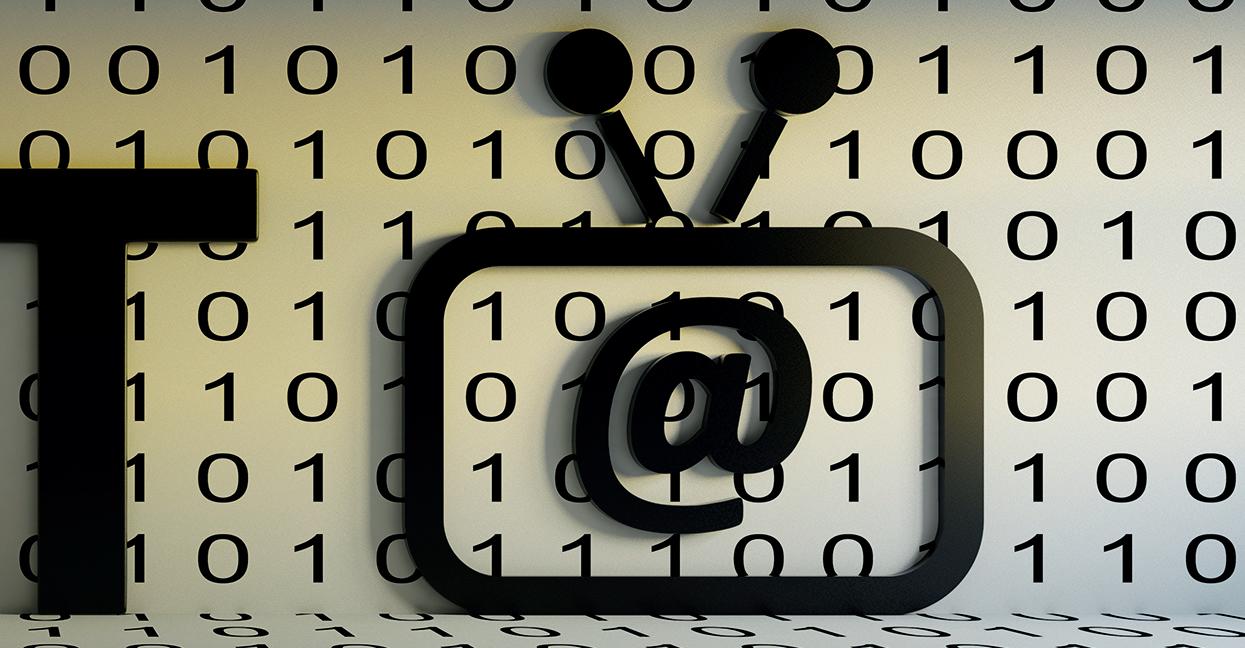
able to access the sport in the traditional way because the broadcasters in my community are not going to offer that content if they are not going to reach several million viewers.
Technology will help content owners find the fan who wants to watch it. It will also provide content consumption experiences that we are not yet able to imagine. There will be all kinds of activities that will be merged into one experience. We know that the ability to transport data will get faster and faster. We will have a sharper, more realistic, better experience in more places.
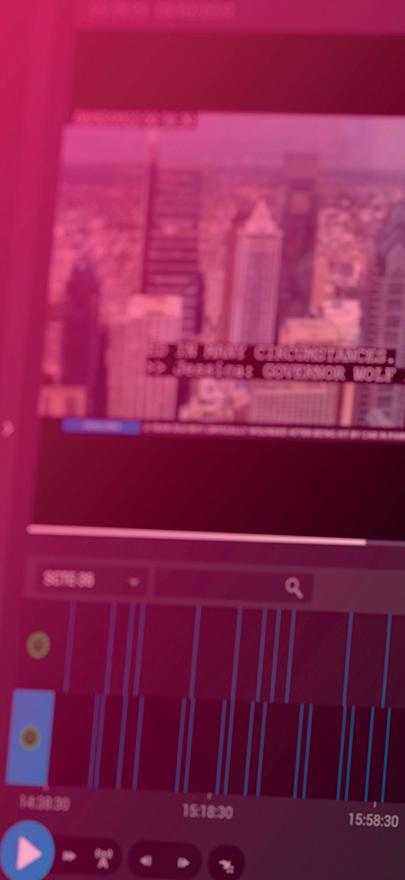 By Erik O o, CEO, Mediaproxy
By Erik O o, CEO, Mediaproxy
OTT has become the media success story of the last decade, offering a wide variety of content and challenging the dominance of terrestrial, cable and satellite television. It has also posed new technical issues that need to be addressed. Erik Otto, CEO of Mediaproxy, looks at the various challenges facing the OTT/streaming sector from a compliance and monitoring perspective.
Streaming has made a profound and lasting impact on how people watch films and TV shows at home. It has not only changed the traditional, linear model of broadcasting but also led to the original streamers, notably Netflix and Amazon, moving into production and making both feature films and mini-series.
The growth in OTT has also necessitated technological changes, not least in the
way the multiple streams are monitored and analyzed to ensure that the content both complies with regulatory standards and also distributed efficiently to the wide range of platforms and devices now being used by viewers. To achieve this, streamed video services are employing sophisticated compliance logging systems to ensure the quality of service (QoS) and quality of experience (QoE) their viewership expects.
Audiences today not only want the same picture and audio quality as linear channels but the higher resolution and immersiveness that the likes of Netflix and Amazon have made their key selling points through Ultra HD/4K and Dolby Atmos. This has put further pressure on playout facilities to ensure that not only does the output meet the necessary
standards at source but also maintains a high level of quality as it travels along the distribution chain and passes through different stages along the way, including cable head-ends and ad insertion points.
The modern playout center has to be flexible and adaptable, with the ability to scale up - or down - as channels are added or removed. While technical operation staff are still important to the running of things, they can no longer be expected to physically monitor every channel being played out. As a consequence, master control rooms (MCRs) are increasingly moving to the use of multiviewers, rather
than relying on banks of displays each dedicated to showing only one output. This new way of working is underpinned by the concept of monitoring by exception, which enables operators to get on with other tasks until a problem is actually detected. Instead of having to sit and view multiple screens, they only need to bring a channel up on a display when alerted. They can then isolate, analyze and deal with any
faults using specialist tools offered by the compliance system.
With this kind of capability, facilities are able to futureproof their operations, which will be crucial both technically and financially because it is likely that the number of channels will only go up, not down. This increase might not be permanent, with more channels being created for a set period of time during major events such as the
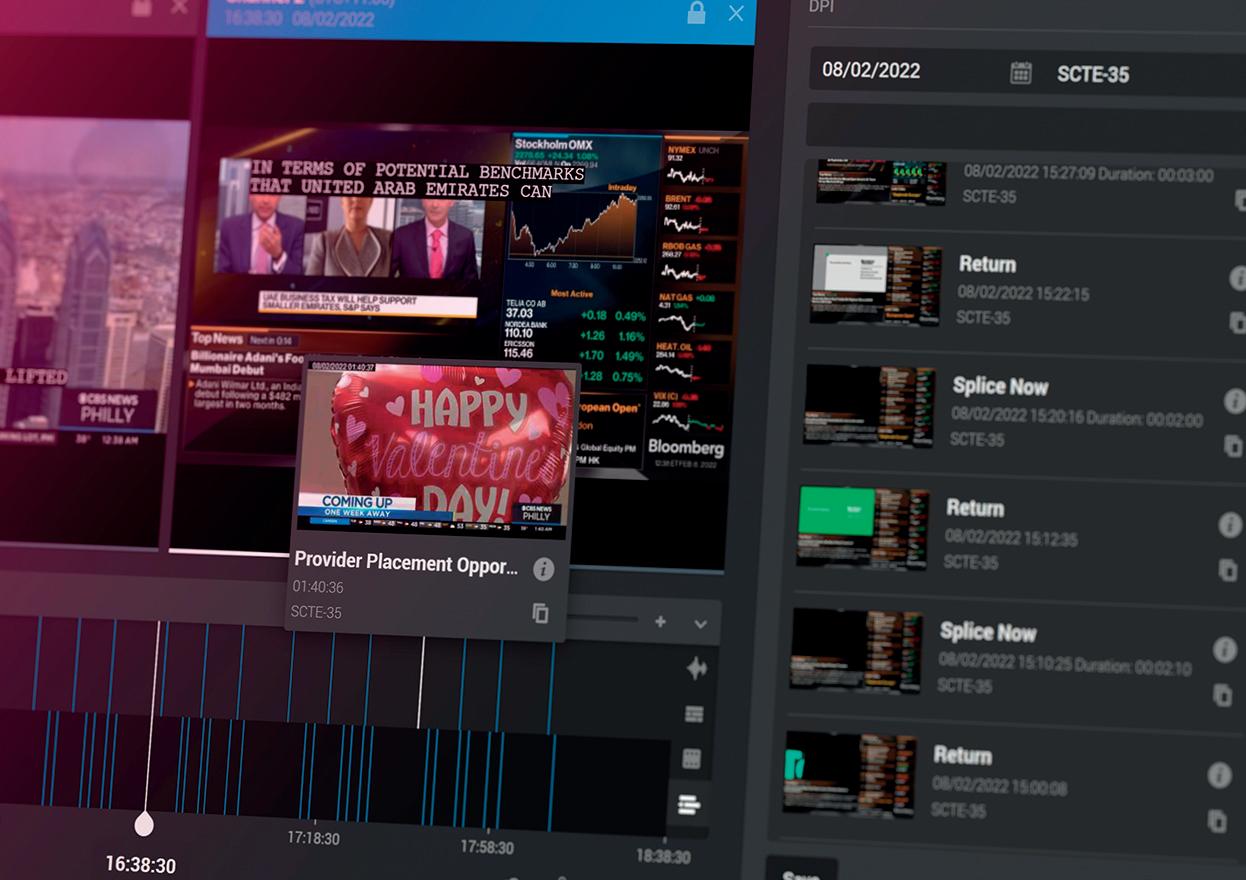
Olympic Games and the World Cup, but playout companies and streaming clients need to have the capacity to not only add additional services when necessary but monitor them efficiently and comprehensively.
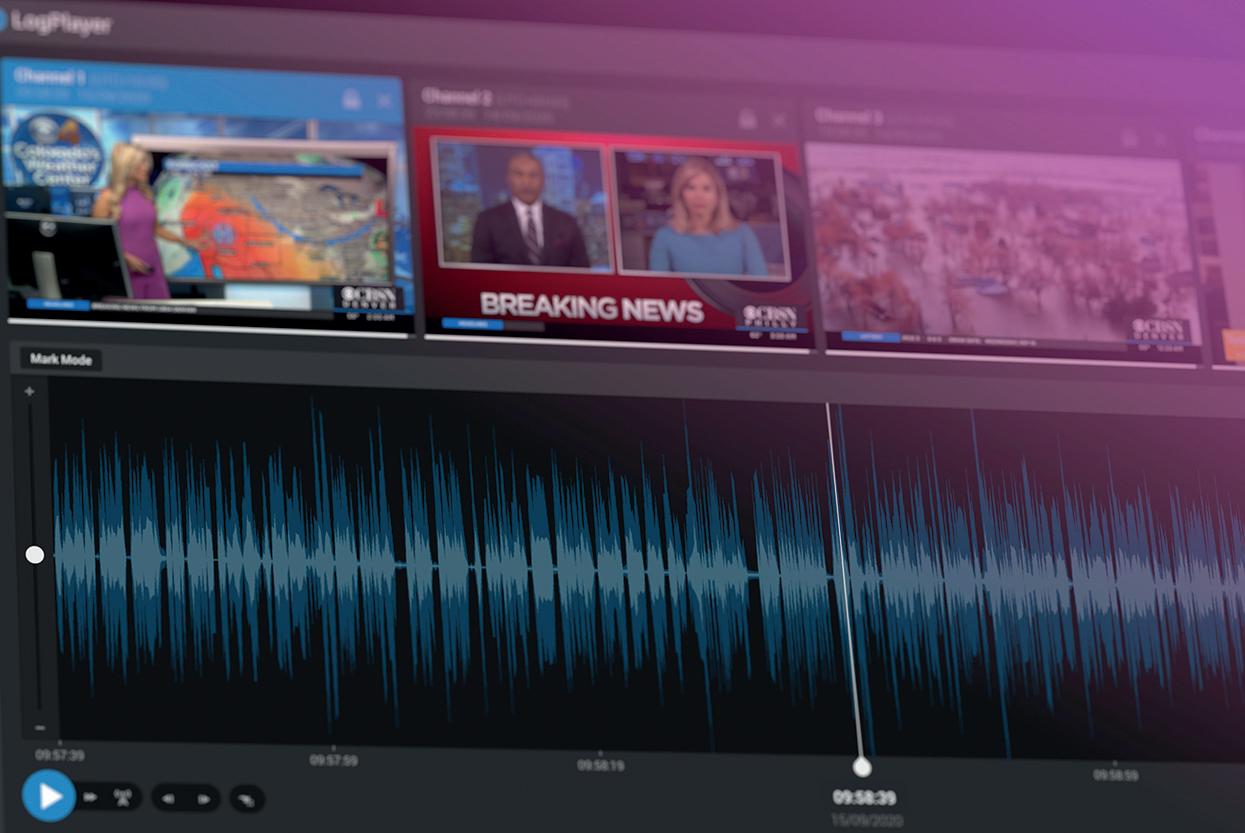
Streaming has been an incredibly successful technology. In the last ten years it has moved on from
being a way for viewers to catch up with programs they missed on their initial terrestrial transmission to being the way that an ever-increasing number of people watch films and TV shows. Although the number of subscriptions increased dramatically during the Covid pandemic, the leading companiesNetflix, Amazon, Hulu and Disney+ - have seen those
figures drop significantly in the last year as people cut back due to the rise in the cost of living.
While streaming services in general, and Netflix in particular, championed the subscription model over advertising, there is now a swing towards the established, old fashioned practice of selling ad slots as a way to
maintain revenue levels. In compliance monitoring terms, this has increased the reliance on dynamic ad insertion (DAI) to guarantee that the right ads are shown at the correct times on a specific platform.
Automated DAI systems can create streams combining video and ads without needing a web
page or app to manage the procedure. This reduces the possibly of technical problems when a stream reaches the receiving device, which could be a smart TV, computer or laptop, smartphone or other mobile device. DAI is also able to deliver targeted advertising, with a higher degree of personalization that reflect a viewer’s interests and preferences.
As this is similar to how commercial linear TV channels are organized, it is imperative that the OTT service does not suffer any latency or buffering between the video content and ads, instead presenting a continuous, seamless output.
Streaming has also embraced another core element of linear TV, the live broadcast. The most obvious example of this is sport, with both Amazon and specialist streamer DAZN showing live football, rugby and boxing, but concerts and coverage of major public events are also proving
popular. As any break in the broadcast of, for example, a football match would be unacceptable, comprehensive monitoring of live streams is now absolutely essential.
Live broadcasting additionally demands there are no delays on either the feed from the venue or the stream to platforms and devices. As a result, monitoring systems have to support low latency formats such as Apple HLS (HTTP Live Streaming), MPEG-DASH, Microsoft Smooth Streaming, Zixi and SRT. This is imperative if streaming services are to deliver lag-free signals that match linear terrestrial TV broadcasts.
Streaming is now a major part of how people watch and enjoy video. Compliance monitoring should be a major component in how these streamed services are distributed to ensure the highest possible quality and enjoyment for the viewing audience.
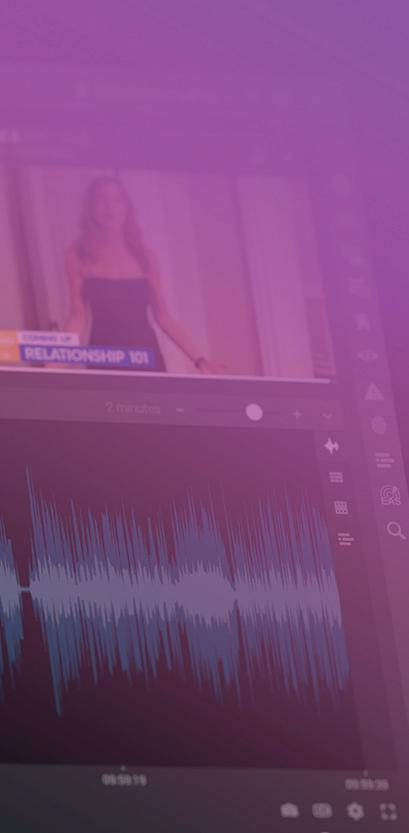

We find for the first time ever a series of elements that had never been present together in the same camera, all of them familiar to us, and whose benefits are projected in many more areas than we had first imagined.
By Luis PavíaIntroduced a few weeks ago and probably available by the time when these lines see the light, its statement has already aroused a lot of interest and curiosity: “SONY ILME-FR7: Cinema camera, with full-frame sensor and interchangeable optics, in a PTZ structure”. Each of these features, separately, would result in just another camera to analyze by assessing its performance, results and possibilities.
But all of them together in the same piece of equipment are something completely innovative and unknown until now. Yes, we insist: unknown until now. Because this camera is more than a PTZ camera with a large sensor and an excellent image quality. It is more than a cinema camera mounted on a robotic head. It is more than a camcorder with a full-frame sensor. And it’s more than a studio camera with RCP controls.
We don’t know of any camera that brings together all these features in a single body. Because to all these big headlines a few more features must be added. It has SDI, HDMI, and Ethernet outputs, being able to work as a studio camera in SDI and carry out streaming. It comes with a genlock and time code input to get synchronized in multi-camera broadcast environments. It laso includes a variable neutral density filter. Allows internal recording on memory cards. It can be powered via PoE++ Ethernet, or by a power supply. The body is extremely compact, as a large part of the electronics is housed in the fixed base. And a few more features that we will explain in more detail here.
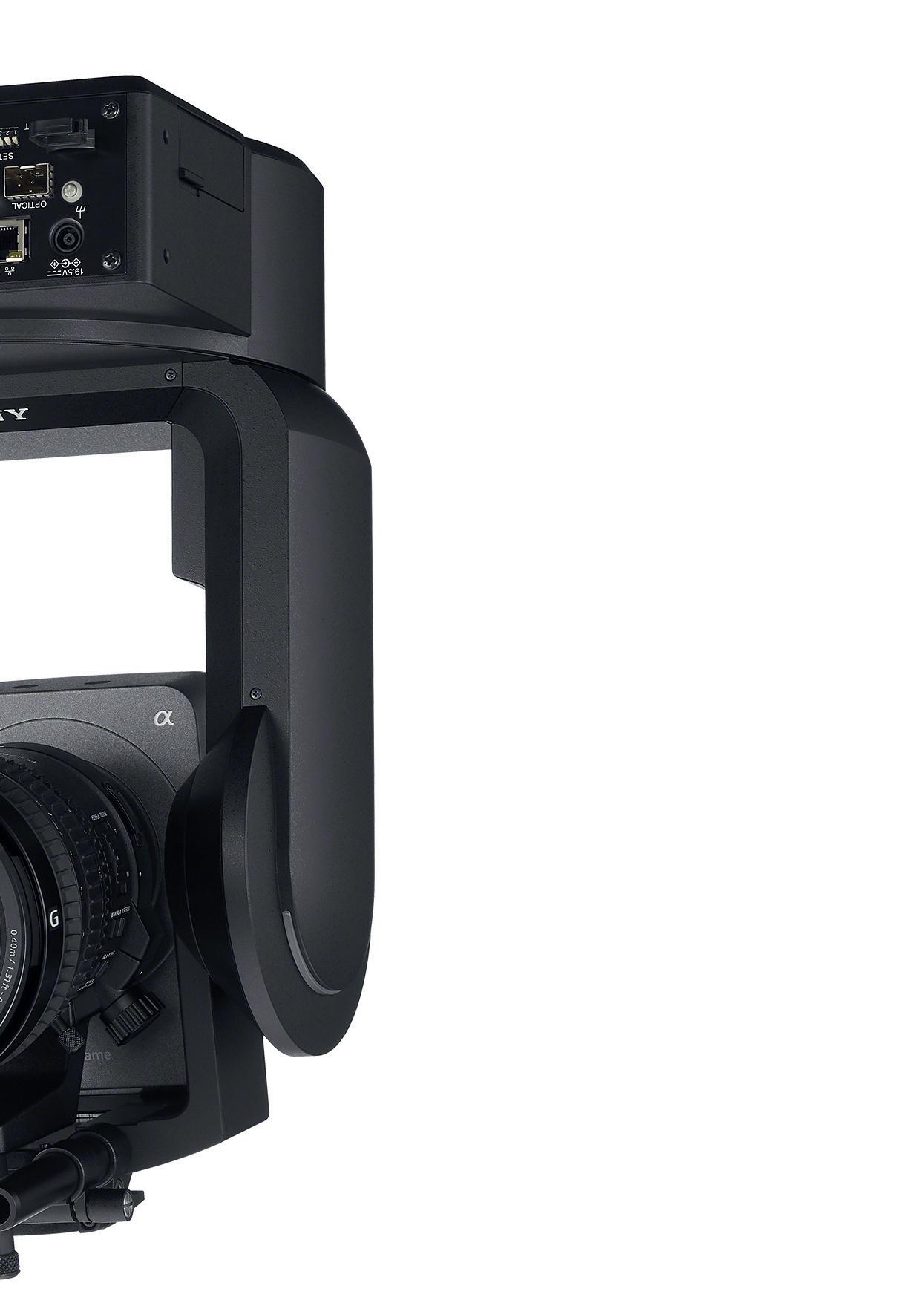
To do this, we are going to make a clear distinction of our content in two parts, a first one in which we will carry out a description and analysis of all the functionalities of a technical nature, and a second part in which we will look for all areas of application and new uses in which it seems to us that this camera can show outstanding performance.
Let us begin by clarifying what a PTZ camera is, in case someone is still unfamiliar with the term. PTZ is the acronym for Pan-Tilt-Zoom (horizontal rotation – vertical inclination – change of focal distance) that generically comprises the cameras that integrate the movement system and the control of the optics within the same body. They are the ones that are commonly and frequently used in fixed installations for auditoriums, videoconferencing rooms, etc.
On this occasion, the technical analysis of the camera part can be summed up in two words, literally: Sony FX6. Indeed, the body of our FR7 has the sensor, electronics, processing and practically everything related to image generation -including cinema modes, gamma curves, etc.- identical to those of an FX6. Which also includes its extraordinary autofocus capabilities with facial recognition and eye tracking.
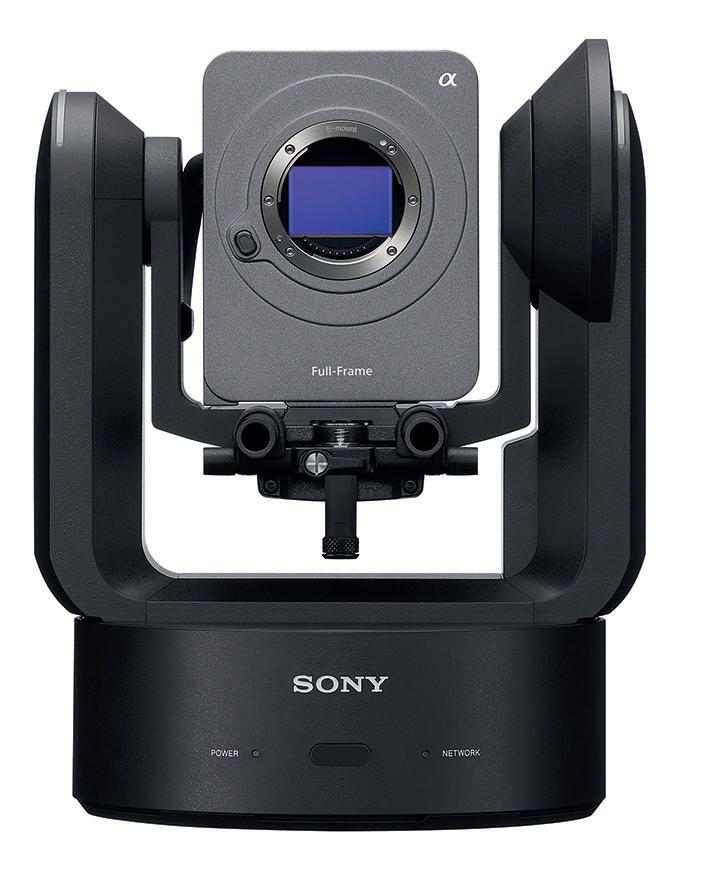
Going into more detail, as for numbers we begin with a backlit full-frame 4K HDR Exmor-R CMOS sensor of 12.9 Mpixels (10.3 effective), BIONZ XR processor, interchangeable optics with E mount, filter of variable neutral density from 1/4 to 1/128, equivalent to a continuous range between 2 and 7 f-stops.
That the sensor, in addition to being large, has comparatively few megapixels, contributes to increase the sensitivity and avoid a rolling shutter, due to the lesser amount of information to convey in the recording process.
Recording up to DCI 4K (4096x2160 at 60p, plus UHD and HD) with a whole range of frame rates up to 120fps in 4K and 240fps in HD, allows slow motions up to 5x in the 4K 120p mode, for example. Managing bit rates of up to 600Mbps. It features a list of formats, frame rates and bit rates combinations that would fill up an entire page.
It is also important to note that while it does not allow
internal RAW recording, it does provide this 16bit signal to be recorded on external devices, such as certain Atom models, via the SDI-12G port.
As we already know, this limitation by a large number of cameras from multiple manufacturers, is not caused by a technical limitation, but a legal one.
With more than 15 latitude stops, double ISO 800 and 12,800 base sensitivity
-expandable up to 409,600, support for S-Log3/SGamut3, Cinema EI modes with S-Cinetone and HDR in Hybrid Log Gamma, 627 focus and AF tracking points with facial recognition and eye tracking, there is no doubt that we have here a true Sony Cinema Line range camera, a label reserved for those that meet the highest image quality standards.
Although at the same time, it can provide high efficiency
of use. Remember that the S-Cinetone curve allows a simple approach to what would be a post-production color grading in order to be able to broadcast live or make very fast edits of content that already have a quality well above what could be achieved without this workflow.
Selecting conventional video modes and working with gains instead of ISO values, we have a control range from -3 to +30db,
white balance from 2,000ºK to 15,000ºK in addition to automatic, as well as SDR and 709 color modes among others.
If we take into account that the ND variable filter supports auto function, to control exposure levels without altering iris, speed or ISO -that is, without altering basic elements in the visual narrative-, we reach a list of features which more than cover the needs for use in cinema and first-class productions. But no, it’s not a VENICE. Although it is an FX6, with all the benefits that this implies.
Turning to connectivity, SDI video outputs up to 12G and HDMI support 4K 60p, UHD 120p and HD 240p, in 10-bit 4:2:2. We have Genlock connectors, time code input (TC In) and a specific one for options in RJ45 format, in addition to the Ethernet LAN that allows, for example, to share the signal of the tally light with external devices.
As we said, the Ethernet network connection has its own connector, thus
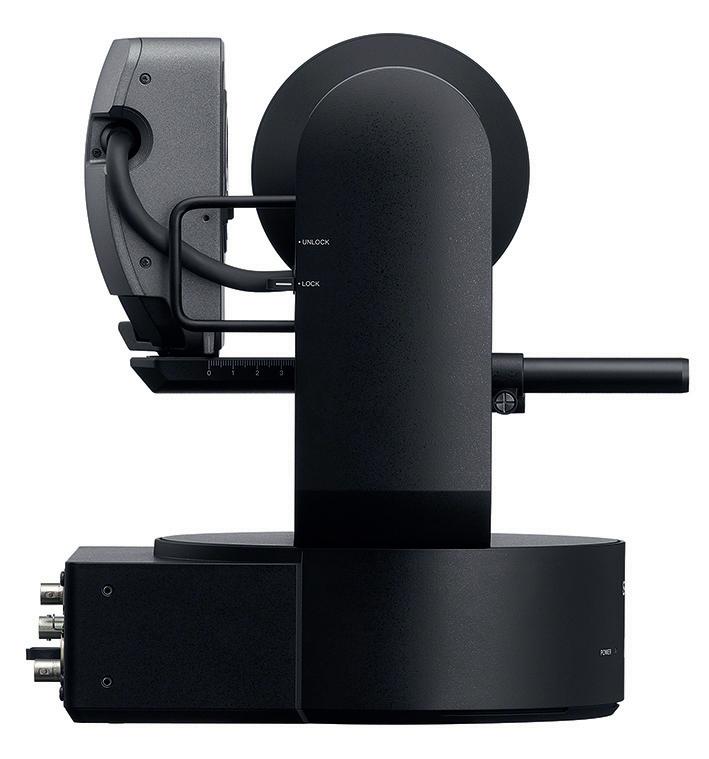
allowing remote control of all PTZ functions, remote control of all RCP functions and IP video output. Furthermore, there is an additional socket for optional SFP+ type fiber optic network adapters.
In streaming mode, RTSP distributes the signal to up to 5 recipients simultaneously, while the SRT allows broadcasting over less stable networks. It is also possible to use the NDI/HX protocol to connect to mixers and servers, although for this we must obtain an optional license. The range of supported protocols is truly wide, and compatible with TCP, UDP, ARP, ICMP, HTTP, HTTPS, DHCP, DNS, mDNS, RTP/ RTCP, RTSP, VISCA-IP, SRT, NDI HX, FTP, and FTPS on IPv4. And most of them, but not all, on IPv6.
As for audio, we find a 5-pin XLR connector, to allow the input of two audio channels, that can be configured as line, micro or micro input with power supply.
If we consider that all this connectivity is in the fixed

part of the body, which supports installation both in floor/tripod/column and inverted in roof mode, coupled with the fact that the 2 two-tone tally lights are arranged in such a way that they are always visible from the optical axis line, it turns out that the camera is not only suitable for conventional PTZ installations, but it also integrates in broadcast environments with all ease and excellent performance.
The power is obtained by an adapter that supplies 19.5V CC, the type used for most camcorders. Too bad it’s not the same 14.4V CC that supplies power to a lot of cameras. Although probably the most interesting option in a significant number of cases will be to use the PoE++ power supply. In this way in a great deal of situations we will have the IP video output, all the PTZ and RCP controls and the power
supply in a single Ethernet cable.
And while it does not have a specific socket for batteries, it would be possible to use some of the existing systems on the market that provide power from batteries to a camera connector. And this detail is important because, at least with this firmware version, it is not possible to record to internal memory cards while using PoE++ power supply.
We continue to analyze novel features in the PTZ environment, considering the two A-type SDXC/ CFexpress memory card slots that allow the usual modes: simultaneous and relay. They record in XAVC format, both intra and long, and allow internal recording up to 4:2:2 at 10 bits, the same signal available on the outputs. Naturally, depending on various parameters, such
as resolution and data rate among others, the available capacity varies enormously. To give us an idea of the extremes that can be reached, on a 160Gb card we can store from 30 minutes of 4K at 59.94p DCI video in 600 Mbps XAVC-I, up to 430 minutes of Full HD video at 29.97p in 35 Mbps XAVC-L. If we go down even further to 9 Mbps proxy quality, we will almost quadruple the time available for recording.
Without further elaboration, it is clear that this set of features, combined with the possibility of full remote control, will allow us to lplace the camera in really complicated locations.
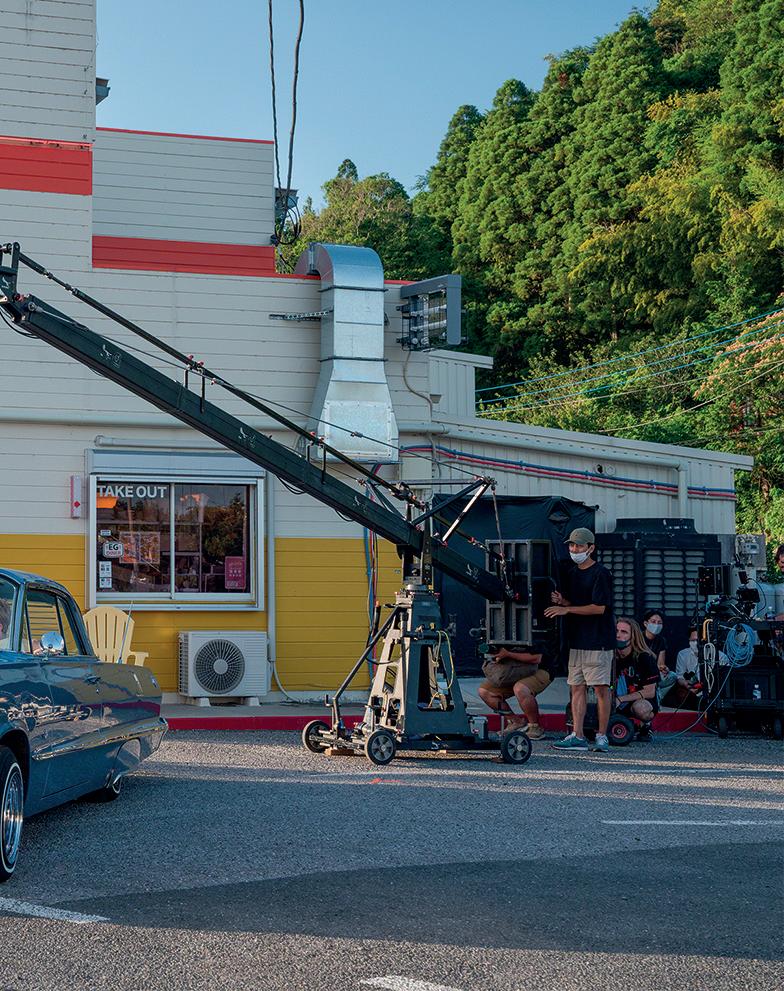
And on this occasion, we cannot finish the camera part without including the features of the mechanical part of the moving head.
With an E-frame, the range of optics is really wide. Although for smaller ones it is unnecessary, to properly handle the larger and heavier ones, the camera has two standard 15mm bars. Its mission is fundamentally of
mechanical support, since all the parameters of the optics would be handled by the remote control. But it also opens the possibility of using optics without own servos using these supports for all types of standard 15mm accessories.
As for its angles of movement, they are within the same ranges that can be found in most PTZ cameras: -170º/+170º of horizontal rotation, -30º/+195º of vertical tilt in normal position, inverting the vertical values if mounted in an inverted position. On either axis the speed of rotation ranges from a fairly fast 60º/s to a very slow and precise speed of 0.02º/s. This means that a 90° turn could be completed between 1.5 seconds and 75 minutes!
Between these extremes, we have a scale of 50 speed levels to adjust the movement.
If appropriate, there is the possibility of establishing limits to the angles of movement to facilitate the operator’s task and also that the operating ranges move within the limits of
the installation or project in which we are working.
From both an RM-IP500 and the control application itself, we have 100 framing presets at our fingertips to store position and zoom.
And not only this, as in most of these types of cameras, but also the speed at which each movement is desired can be saved, regardless of the value set for general use.
With the firmware version 1.0 that we have had the opportunity to test, the “trace memory” option that remembers all the movements and intermediate steps to go from one frame to another is not yet available, but according to Sony sources, it is expected to be one of the improvements for the next update foreseen within a few months, although still pending an official release date.
Regarding the RM-IP500 control unit already mentioned, it will be necessary to make a couple of small changes to the units already in service: on the one hand, update
their firmware to version 2.20 in order to have all the new functions; and on the other hand, overlay the new template with the new and correct assignment of functions to the buttons that are being updated. In the new models these innovations will already be implemented from factory.
From the IR remote control supplied with the camera, the basic setting can be controlled, including the positioning and balancing auto-calibration, with the only limitation of having access to just 3 preset positions.
In addition to setting the speed of movement, the result achieved by activating the start and stop smoothing of the movements is very pleasant.
According to information provided by Sony, the largest optical combination recommended for use in this body without mobility limitations is FE 70-200mm f/2.8 GM OSS II, along with the FE 2x focal duplicator. Although there is a mechanical locking system
that would allow the use of larger optics, this would be achieved at the cost of losing its ability to move.
And of course, it’s also time to talk about control. In terms of positioning,
you the well-known RMIP500 remote control from Sony can be used, which offers all the possibilities in terms of movement and some options for image control, but the option

that has been clearly more interesting to us is the new app developed for this camera.
It is a Web App that offers us a fully featured interface, with the controls that we
expect to find in a camera and image remote control, those for movement and position memories of a PTZ control and also a monitor that allows us to see the image and the menu on top at will.
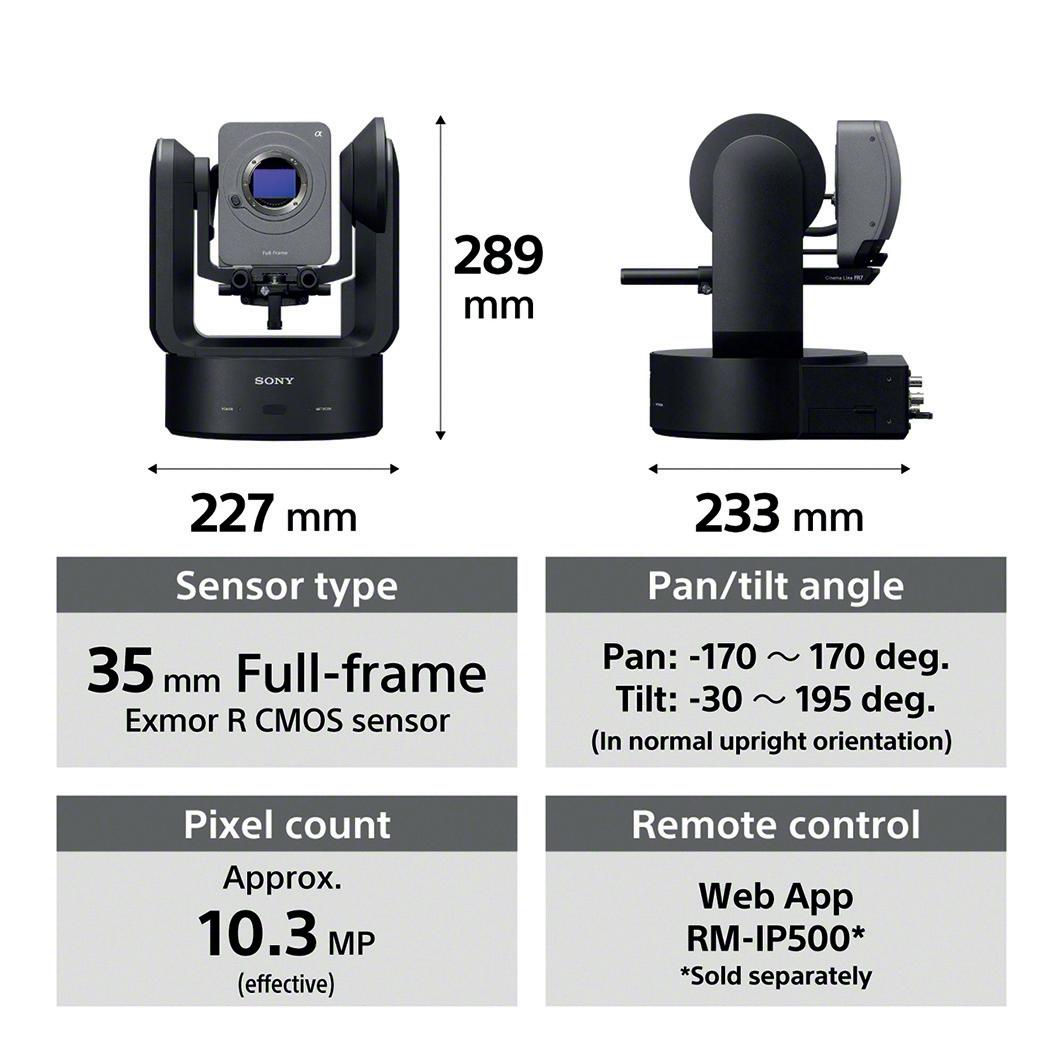
Since this video monitoring is done via IP video, the
potential delay will be conditional to the network linking the camera and the control device. Through remote monitoring on an Ethernet local network, with direct connection between both computers on the same switch, image delay is imperceptible.
Now, if we intend to have remote control from low bandwidth locations or huge physical distances, we will need to do our field tests to be sure, as performance will depend more on the network and on its multiple intermediate systems
Most interestingly, the camera is accessed via any internet browser from any operating system, including iOS and Android. In this way, no specific hardware is needed, and access can be gained from a laptop, a tablet or even a mobile phone.
It is not necessary to have access to the Internet since the camera generates its own access, or it is possible to achieve access by creating an isolated network with our own router, thus attaining maximum security as it is not possible to gain access from outside our network. The connection is achieved by directly reading the QR code printed on the inner cover of the memory cards, or by accessing a web address with a series of parameters, one of them being the camera’s serial number. Naturally, it will then have to be validated by means of a username and a password.
The system allows access to the same camera itself from multiple devices simultaneously to facilitate distributed control and vice
versa, controlling multiple cameras from a single device.
We have seen that the computer allows saving an admin profile and up to 9 user profiles, although we have not had the opportunity to personally test the scope or possibilities of these profiles.
The interface offers three main sections than can be selected on the top: Live, with the live signal and the video monitor from which we control the camera and positioning functions; Playback, which contains all the functions related to the playback of the contents recorded on the memory cards; and Settings, where we find all the settings for configuring the camera.
The same top bar shows the name given to the camera, which is key if we operate several cameras from a single interface; the on/off switch; and access to notifications, status information and a useful lock control to prevent accidental actions.
On the Live panel, built, as it is logical, around the viewfinder, we find on one side the presets, position memories represented by an icon of the image take, where we adjust the custom speed parameter if desired. In the viewfinder we will see the information available on the HDMI output, with overlapping menus or not depending on the setup assigned.
In addition to futher information on status outside the viewfinder itself and a possible green or red frame consistent with the tally status if we are using this functionality.
As for information displayed on the viewfinder, we will only give one piece of data: 35 distinct sections are thoroughly described in the user manual.
Fortunately enough, it can be configured, and we can decide what to display and what not.
Below the viewfinder is the panel with basic configuration information such as FPS, ISO/gain, shutter, Iris, ND, WB, etc... and a couple of options to enable/disable the camera
information displayed on the image viewfinder and the tracking AF. Below this, there is still room for another panel with all the customizable functions for assignable buttons. Finally, already on the right side of the interface, we find the large red start/ stop recording button. The camera’s control panel has tabs to access different parameters such as AF, audio or streaming among others, with two sliders that control the assigned
functions: speed, zoom, iris, etc. The interesting thing is that, although there are only two, simply by displaying the name the change of function is instantaneous, thus making it easy to gather in a small space the most important operating functions.
Finally, at the bottom, there is a panel with two tabs: the first for the PTZ control with all the functions associated with the operation of the positioning system; although before use this
requires us to install the optics and launch the position auto calibration. And the graphic interface, whose purpose is to display the menu buttons, cursors, back and OK, thus allowing us to access and manage the internal menu of the camera functions as if we had it in our own hands.
Moving now on to the Playback dashboard, the features are reduced and simplified. We continue to have the large viewfinder that takes up the center

of the interface. Below it, the camera settings panel is replaced by the playback control panel. In this panel we find the Thumbnail button to have an icon-mode view of all the recorded content. And on the right-hand side we only have the interface to access the camera menu and functions related to the clips.
Finally, the settings panel allows us to access a series of functions that are very similar to those on the camera menu, many of them shared, but in a more graphic way. Including those related to motion functions. Any user accustomed to Sony menus, will be completely familiar with this.
While the camera’s own menu can be seen over the video signal, this only happens if this functionality is enabled in the HDMI output settings. But remember that even if the menu is not visible on the screen, it is still active and functional, so it would be possible to accidentally modify camera parameters. To prevent this, the lock
button will be of great use to us. And we will always be able to access the configuration parameters knowing what we touch through the settings menu.
This form of integrated/ distributed control from an application, by which from a single remote device you have access to all camera functionalities, combined with the possibility of having more than one device to be accessing the same camera, provides versatility of use beyond what we are used to, and even more so in a camera of this type.
So many strengths, but any weaknesses? We must say yes, of course. For example, it is not an ENG hand or shoulder camera. And should we ask for more, add gyroscopic stabilization compensations. But in an ENG damera, the pan-tiltzoom and grip are elements provided by operators.
In line with this idea, we miss the possibility of a direct power supply system with conventional camera batteries. Not for ENG, but just to be able to place it absolutely
autonomously nearly anywhere. While there are packs that perform this function and provide the necessary autonomous power and given that with a Wi-Fi network it is possible to carry out the remote control, it is not only something feasible, but we have already seen shootings using this way of working. Part two. Uses. If so far no one has developed a product like this, it would seem natural to ask: will it not be a new technological invention, something attractive but unnecessary? And we answer to ourselves by means of a set of questions from the points of view of different user profiles:
Can I have a ‘cinema’ image quality on a robotic head of a small size? Does the ability to operate the remote of the robotic head and RCP simultaneously from a computer, tablet or mobile make up for the time and work involved? and what about several cameras simultaneously? Would I like to have a full-frame
sensor in my PTZ camera?
Or change the optics of my PTZ for different uses?
Can I mix content from my PTZ camera with high-end cameras?

If we want to answer ‘yes’ to all these questions, this new invention -apart from being technological and attractive- will turn out more than necessary.
If we look at it from the point of view of a top-level film director, someone used to the traditional systems of cranes, hot heads and large cameras and with extremely high budgets, it
can be quite a hit to have new ways of telling stories, relying on completely innovative camera positions and angles.
If we look at it from the perspective of a producer, where profitability prevails, the discovery naturally emerges when the cost of a camera equipment, hot head, gimball, servosystems, remote controls, monitors, etc. is compared to that f such a fast and effective unit. It is also true that the camera can be limited by the scope of the optics available,
but in return allows to be mounted on a light crane to increase its versatility and potential.
We do not see it as the main camera in the production of the Olympics or at a large stadium with tens of thousands of spectators, but as an auxiliary piece of equipment at a very affordable cost in order to have ancillary cameras with remote operators in the most unsuspected places.
We think it can be the dream of many broadcasters, often
Insisting on what we have said so many times: there is no perfect tool, but the right tool. It is our responsibility to know what the market offers so that, within the allocated budget, we can choose the most appropriate equipment for each situation.
Starting from the very different visions from which any audiovisual creation can be tackled today, we are convinced that this new concept really provides novel creative and narrative possibilities in very diverse fields and very different production environments.
And it also already has a planned growth path: apart from the points already mentioned, such as the projections for the new firmware version, we will also find the possibility of color control with studio RCP and MSP for master setup, making it even more interesting for the broadcast environment.
So you can evaluate for yourselves, here are the links to a demo shooting https://www.youtube. com/watch?v=tDSpimutUPU and the official presentation video https://www.youtube.com/ watch?v=OKObteRkfVI.
Now, enjoy creating!
managing productions that require great flexibility in the assemblies and agility in the response. Thinking for example of reality shows, esports or in all those positions where it is necessary a camera capable of following the action, doing it while keeping the focus at the precise point, with the versatility of one or several remote operators each with their specific role and in spaces where large telephoto lenses are not necessary, this tool seems the ideal one.
In the same way that it still seems to us an excellent tool as the size or budget for productions decreases while trying not to compromise the quality of the final product; even being able to do a multicamera operation with a reduced amount of equipment. Even those professionals who have to take assignments without the possibility expand the human team, now have the possibility of making a multi-camera operation tremendously affordable.
Finally, if we look at it from the point of view of a regular user of PTZ cameras, our FR7 provides improved operation in every way and an image quality that had not yet be found in this product line. In this case, the only limitation would be that, due to the size of the sensor, the zoom range does not reach what can be found in other PTZ cameras equipped with small sensors. But the good side of this is that image quality is something that is far beyond what we dared to dream of until now.
Alejandro Martínez was born in Mexico City to a family of filmmakers and has set his own path as a director of photography. Nominated for the Goya Awards for his work in “Autómata” and having now more than 20 years of experience, this renowned director of photography told us about his impressions on the trade and what it was like to work on the production of “House of the Dragons”.
Who is Alejandro Martínez and how did he get in the world of filmmaking?
I started out as a cinematographer from a very young age because of my family. My grandfather was a very profuse director of photography in the golden age of Mexican cinema. He started very young, at the age of 20, and directed the photography of all kinds of films. He made around 250, from the wrestler genre to films with Luis Buñuel. My father was a bit more into advertising, but he was also on the sets for many years. Filmmaker uncles, brothers... I grew up on sets.
Because of my grandfather’s figure, I knew I wanted to be a photography director before I knew what it really meant and, in fact, I was gradually getting into it. I completed my studies
and treaded the whole path, from apprentice to cameraman, production assistant, operator, and then I went to the side of the electrics and I became head of electrics and then I started doing my own things. Those were my beginnings. It’s the family’s trade. We’ve been doing this for 100 years, it’s in family’s DNA. Some of us have been able to choose, others not so much, but we are all there. You said that you have gone through different positions, from work on the set to positions of greater responsibility in filmmaking. Do you think that such experience has helped you to undertake a specific project?
Yes. I’m also a film teacher for the Mexican school, the Cinema Training Center and I always tell my students that

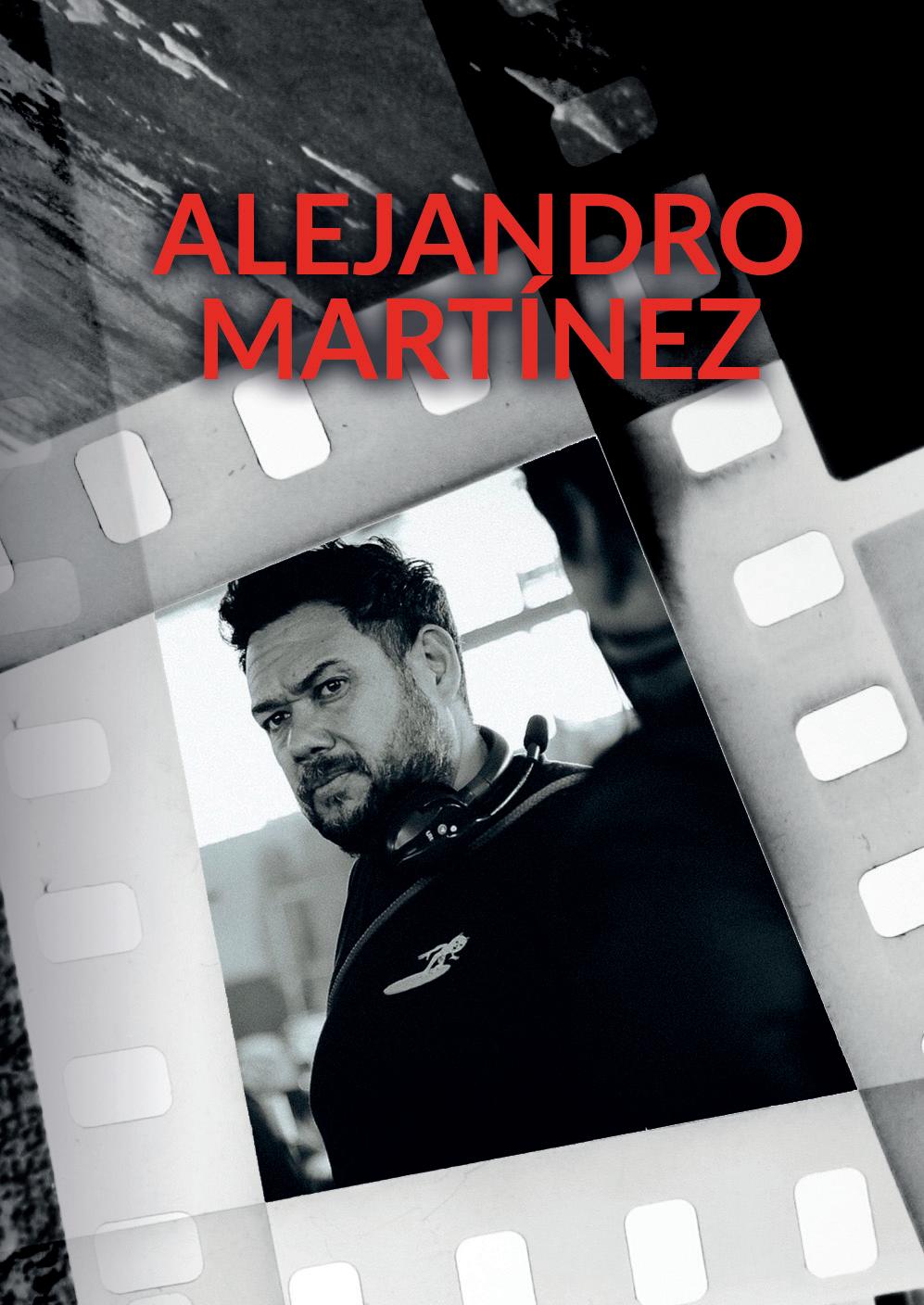
it’s not necessary to go through all these positions to be a good director of photography, but for me it was very important to do so. Living on the different sides taught me what the work of others means, how much things cost or what each individual requires to do a different job and then be able to ask for it. Asking for a light, a camera in a certain position, how the cameras themselves work... knowing how to do it, in my opinion, gives you extra experience and knowledge. What is the downside? It takes time. One may not
want to or not be interested in investing that time, and I understand that too, but for me there was no other option and I appreciate that it was that way, because I think I have a more global view of the things happening on a set.

Is it an usual path among other photography directors or film professionals?
It was in former times, there was no other choice. I’m from an analog generation and it wasn’t until my sixth or seventh film that
we started working in digital. It was necessary to have a wealth of very particular knowledge about how the cameras were operated, how the lights were handled, what the discipline on the set was, the positions were kind of very specific. There was no other way, you had to start from the bottom. You just couldn’t go around with your camera and start shooting because there was no access to cameras.
Nowadays I don’t think it’s necessary any longer. You can grab your camera, get
rolling and carry out your projects. You have many resources at your fingertips, and by doing things you can gain experience. But as I say, it was important to me. I don’t know if I would do it differently now, but that’s what happened to me, and I think it really helped me a lot.
My recommendation, when asked, is to go through other positions and go step by step, even if it takes a bit more effort, but the experience is going to be very different, the craft is going to be different and even the mastery of the profession is going to be faster. The experience of working with other people, seeing other points of view and, ultimately, doubting those points of view or developing one’s own is very important.
Considering what you are saying about access to technology, do you think it is easier to make it to photography director nowadays as compared to former times?
The technical part is definitely easier. Working
with a digital camera, the sensitivity of the sensors or the immediate benefit of seeing what happens on a monitor, that part is easier.
I don’t mean to disparage anyone by saying this, but technical knowledge is lesser nowadays. When things were photochemical and we didn’t have the technology we have today, it was like acting somewhat blindly. What made you able see through it all was knowledge. For example, seeing how a negative was being exposed was pure knowledge. Now it’s the monitor that tells you if exposure is correct. It’s different. Discipline on the set is also different, although in this case I wouldn’t say whether things easier or more difficult. The profession of cinematographer, being the tool that tells a story visually is neither easier nor more difficult, it is just the same.
This profession is on the one hand an art and on the other hand a craft and I think the art side of it will always be the same. As for the craft, it’s about how you embrace your knowledge,
how you behave on a set, how you handle it, how you become an expert at it… that has definitely changed. Now for example, with the Fallout project, I’m shooting this series in 35 mm, and it means going back to a certain discipline, a certain knowledge, order and a control of your elements, because nobody’s going to tell you that what you’re doing is fine until three days later.
Talking to Pablo Rosso, an Argentinean director of photography, he told us that like you, he began working in analogue and also that the way of composing an image for cinema was based on the view, from the eyes, from the scene, without looking at how it was displayed on a monitor. That gave him his very own professional quality when working by looking a a scene, interpreting what could happen. Is this something common among those of you who have worked in analogue?
That’s literally what happened. Imagine today, in a digital set, that when you start shooting you turn off all the monitors. There are the cameras, the lights, but we’re not going to see anything in digital. In this case we possess a more solid knowledge. Knowing what a film emulsion gives you, how it works, what happens to whites, blacks, how temperature impacts on color when exposing that film or what can be done to it. It’s basically working in the dark.
That used to be the traditional magic from a director of photography.
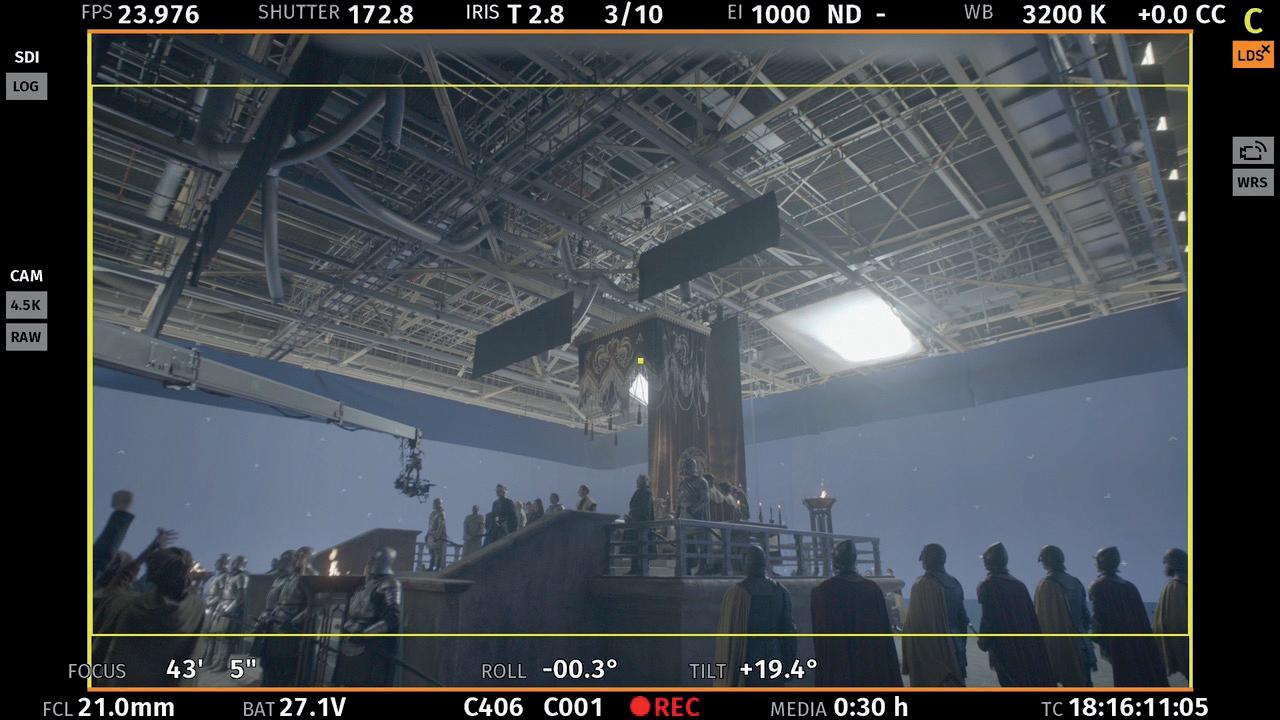
It was that, so to speak, “magical person who knew how all this was being interpreted in a negative”. Nowadays, having monitors to assist, it is much easier for everyone to see if something works or not. Today’s photographers at school want classes and are willing to experiment in analog, but they get to the set and everything is digital, so the rules of the game have changed a lot. I think
those of us who did analog know a little more about the photographic process, although the filmmaking process has still remained the same.
In spite of coming from a filmmaking family, my father focused more on advertising, so I knew advertising sets. That was at the age of 14 or 15.
How was your progression, where did you start and how did you get involved in larger productions?
My summer jobs were as trainee in advertising sets. From there I started to grow. I studied a degree in Communication Sciences, then I studied cinematography. I took specific courses and at the beginning of my career as a photo director I dedicated myself to advertising, since they were the contacts that I had. That was my way of being on set and making progress. It was about four or five years before gaining access to the movie industry.
My work as an advertiser connected me to very interesting film directors, including one of my great friends and among my favorite directors in Madrid, Gabe Ibañez. That’s how
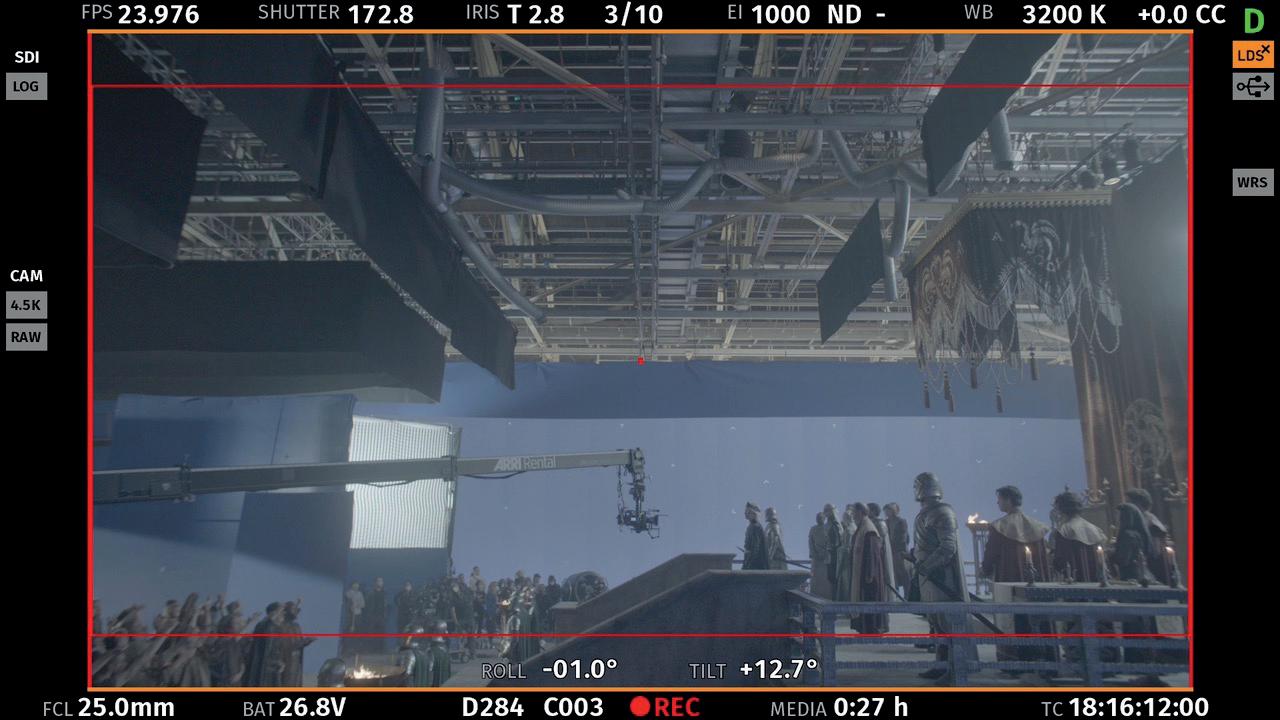
I started in the world of cinema. First in Mexico, I made horror movies, like in 2004 or 2005, and I did a couple of productions with Filmax in Spain. Afterwards,
I made a couple of American films, also horror films. All this in traditional film, there wasn’t digital yet. After several films, mostly
horror, I finally took part in a Spanish film called ‘Hierro’. Hierro was the second digital film made in Europe at that time. We shot with the first Red camera, the Red One. It was the first digital camera as such, and it would take 24 digital frames per second. I remember that the texture of “Hierro” was very interesting. Very soon afterwards did we realize that this was the future. And then I shot another movie in film titled “Memories of my
Melancholy Whores”, an adaptation from Gabriel García Márquez, but from “Hierro” onwards a radical change was felt. With the release of Red One, the industry was transformed. I continued to engage in advertising, so I interspersed advertising and cinema for many years, but I was already doing everything in digital. I made a movie called “Painless” in Barcelona and then, in 2015, I made “Automáta” with Gabe Ibañez. It was after this film that I decided, together with my family and my agents, to get into the world of television.
Television was beginning to be what it is now. Obviously, there were very famous series like “The Sopranos” or “Game of Thrones”, which was already beginning, but the platform frenzy had not started yet. We decided that it was a path that had to be tried because otherwise we would be left behind.
Was it that clear at the time?
You could see that something was starting to
become interesting. Writers and directors began to make a move and go for streaming. What was not foreseen back in 2015 was that the tradicional cinema would have such a sharp drop, which had a lot to do with the pandemic, but it was already seen coming that the ‘middle class’ of movie making was disappearing, that either gigantic projects would be carried out, with many studio-related decisionsto be made; or small projects where there was a very marked authorship, but little money left for them. That’s when we decided to get into TV.
We started doing pilots, first smaller, then bigger, then actual episodes. This was a long journey and several stages along the way. I remember when my agents told me I had to get into all this and I didn’t want to, but then I thought that if I ended up doing something like Game of Thrones it would be fine, and I jumped in. It was a journey that involved doing increasingly interesting things and also not getting comfortable,
because on television it is easy to fall into niches. If for example, I do a series that has seven seasons I would have work guaranteed, but it was exactly what I didn’t want. It has been a matter of many decisions in choosing what to do or not, about projects that you think are going to be a great success and then they don’t go that far: there has been a little bit of luck in decision-making, but basically this is how it was going until a project that I did three years ago. This project was “The Alienist”, where Juan Carlos Medina, with whom I had worked in Spain, invited me to do a couple of episodes. It was there, when I got into higher-budget television, where you can have a little more freedom on certain things like the creative level. After this, we have been able to do very interesting projects and we hope to continue like this.
We talked about the fact that at that time the world of television was really thriving. Do you think that those average budgets in movie making
and all that creative flow moved to television?
I think so, although this is a bit of a general idea, because there are still projects of all kinds, but yes. Nowadays, postpandemic, if you want to go to the movies it is hard to choose a movie, especially if you’re not a fan of Marvel or the horror genre. Talent has moved, writers, directors and for
photo directors began to be more attractive.
Nowadays, you can’t name a photo director, from a generation other than Roger Deakins, who hasn’t made television. People like Emmanuel Lubezki or many photographers have gone for this, because this is where we see talent, budgets and good projects.
The power game in studios has changed a lot. Perhaps, today, you are not talking so
much about Universal but rather of Netflix, Amazón or HBO, each with their niches, their work proposals. I’m not saying this is better, it is just the way it is. For me, concerning the offers I receive, the most interesting ones are for TV. It’s a different scheme, whether it’s episodes, a pilot or the whole series, but the best stories and the money for production design are now on TV.

It is commonplace to see that in the series, the work model to create episodes at a photography level, has been distributed between several professionals. What advantages or drawbacks does this bring?
It has both advantages and drawbacks. A series can be distributed in many ways. For example, making a series with a single director of photography and several directors is complicated. If that series has ten episodes, you don’t have time to prepare it by yourself. In addition, there are many things that are not known: there are scripts that are not yet written, the series usually start without having all the chapters written and to prepare a series of ten chapters, which is like preparing an eight-hour film, with a single team you would need eight months to have everything ready.
Studios prefer that directors have some control over certain episodes or over certain fragments, and

it is a more convenient and practical way of working.
To do this, they require different photographers, that each director has that creative contribution with a person with whom they can be with all the time.
These formats are inherited from traditional TV, but they are also a bit inevitable, because TV can have all the money in the world, but what it doesn’t have is time.
If you shoot ten 50-minute epsiodes you have to shoot them in 6 months, you can’t shoot them in 2 years like in a movie. It is a new way of working which, when compared to movies, is different in many things; it is better in some and not so good in others, but if you do not compare it with cinema and compare it with TV as it had been up to now, it is much more efficient and much better.
Artistically or creatively better? From my point of view, this is not the case. The way of making cinema is a purely creative process where one takes the time one has to take. Time is the great luxury of cinema. This, on television, is replaced by
other things such as having more than one director of photography do a project. It has also come to the common denominator of establishing rules, giving information so that the film feels like a visual unit, all this with a certain freedom. I can say that House of Dragons is the project where I have had the most creative freedom in my whole career, there was not a single person who told me what to do or how to do it.
One thing I like is that in the end the process is like
making a movie. Some decisions, like about sets or a character’s attitudes, may be made by someone else, but there are a lot of decisions that are made in a more traditional way. I talk a lot with the other photo directors, I reach agreements with them, since we do not want the program to be different in each episode. For me, creative unity or visual unity comes from inertia or decisions made at the beginning rather than from what is done in our daily routines. If you decide that
the film is going to be shot with a certain camera or with certain lenses or the choice of lights you take, that inertia that leads to a visual unit actually occurs. Therefore, in the end the projects end up looking similar and that is what works, being able to have units, working on the same page, while one works the other shoots. It’s the only way to do these big projects within such a tight time frame.
Speaking of House of the Dragon, when you joined
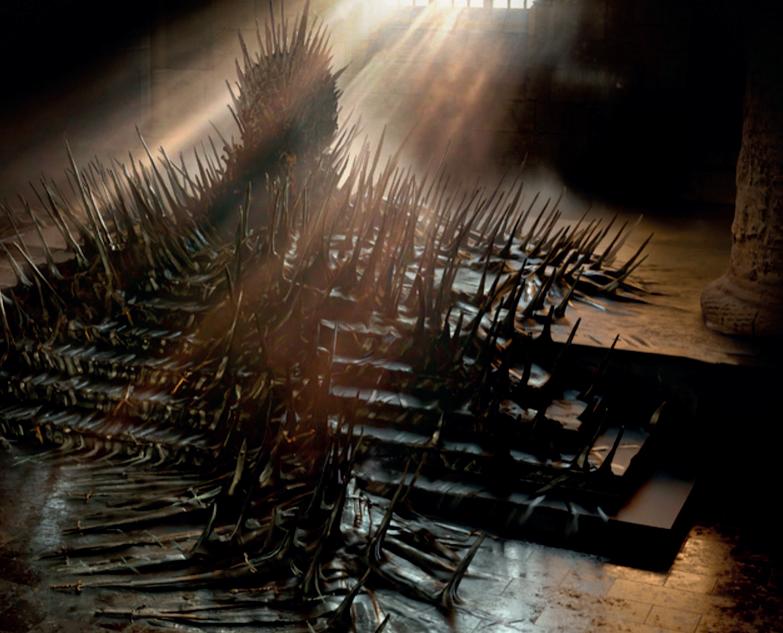
the project, what stage was the production in? Were you able to give your point of view on the visual aspect in preproduction or did you adapt to an aspect that was already established?
It was a truly interesting project. I landed on Dragons thanks to a director I had worked with before, Clare Kilner, who is the director I am now with in New York. She wanted me to join the project to complete three episodes of the series. Once all the logistics with HBO was arranged, which runs under an intense screening process, this was achieved.
Dragons’ showrunners wanted us to be there during the whole process. Basically, the project began to be prepared with one of the showrunners, Miguel Sapochnik and his photo director Fabian Wagner. They were going to shoot first, but they wanted us all, so we were three photo directors doing nine chapters and then another photo director, who joined three months later, to do one. We arrived at the time
in which the sets were being built, when everything was strating, and we had a lot of freedom, like being able to make all kinds of decisions about how the sets should go or the size of the windows. It was a really

nice process because we were able to collaborate on everything. Being there from the beginning helped a lot because there was a very intense collaboration between all of us. Fabian is a great person and he
helped us a lot. He had already done episodes in “Game of Thrones” and helped us understand the whole universe.
Everyone asks me how limited I was, and it is one
of the projects in which I have had the most freedom in my entire career. No one ever told me what to do or how to do it. Keep in mind that there are many conceptual limitations: It is a medieval era in which,
for example, you can only illuminate with moon, sun or fire. That’s limiting at the outset, but as I said before, it gives a visual unit to everything.
To develop this first season of House of the Dragon, what technical equipment has been used?
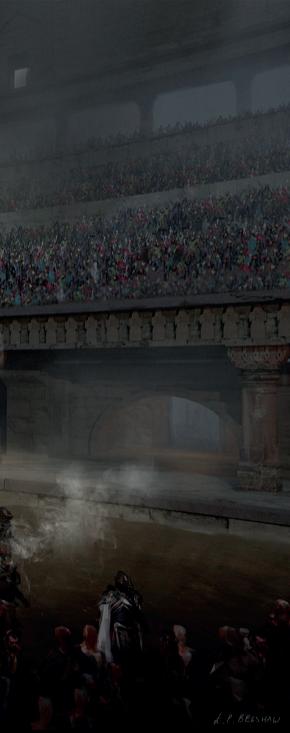
Dragons was shot in digital, with Arri cameras. We combined 65 mm Alexas and LF Alexas. The 65 mm were for more postcardlike, more impresive postcard-like takes. It was shot with a non-traditional optics, but nothing really special. They were DNA Prime lenses and the equipment was pretty straightforward, nothing out of the ordinary. The luxury was to shoot those takes in 65 mm, but no special process was used.
What was the biggest technical challenge you have faced at shootings this season? How was it been resolved?
For me there were two
great challenges. One was how to light up these giant sets. They were huge and it was a big challenge because you had to illuminate them while bearing in mind a lot of things, like the permanence of that light, since the set could not be lighted at the desired time, but you had to leave a basis for what would follow. But the truth is that I had a superb team, I can’t say that I solved that challenge myself because without the help of the people it would not have been possible. The team that worked on that series is top notch. They are not only experienced but also willing to help you at all times. Our electrics team was very good and it was also a huge team. Whenever you asked for things, it meant having it ready in a few hours. Also, there was plenty of time to light up and then check everything out. The preparation process was long. How did you make it? It is achieved by seeing it, going to the paper, designing it, talking to the production designer or
director about the needs of each scene and then talking to the technicians, suggesting to try one thing or another.
A series like Dragons has a distinctive seal in regard to how it is illuminated, from how light enters through windows to differences in color temperatures. But for me, the great value of that series is the human value. The team working on it is spectacular. That’s what makes the difference about whether projects this big are complicated or not. The key to lighting up those big sets was the people I had.
The second big challenge was my introduction to something I hadn’t done in my life, which were the LED volumes. At one of the Warner Studios forums, a volume set was built and it was a challenge because we realized that this is a new technology in which no one really is an expert. Everyone has is more or less familiar, there are people who have worked with it before, but we are all learning. It was quite an
experience because I think we all learned, and we were also able to push the more technical people towards a different point of view.
They told us that something could not be done, but we provided that creative vein of encouraging them to try, so and I think they themselves learned a lot from us. There were people who had made the volumes in “The Mandalorian”, people who knew more about this technology and we also took them to places where they were not so comfortable, but which in the end worked out well. We questioned things, pushed the technology to the limit, and it was good, because there was no reluctance to the new, but a very nice collaboration between the whole team.
Regarding percentages, not much, about 20%. I had to do like five sets in the volume. Really cool things were accomplished. Each
one made like three or four sets and this is a toy for wealthy people, but if you make the most of it, with the right reasons and properly done, it works amazing.
Do you think this technology is here to stay. Is it today’s great revolution?
I think so. Cheaper versions are required, but it’s the best way to solve a lot of things. I hope it stays. I think the hardest part is figuring out how to do it, making it cheaper, which will be a matter of time because technology tends to get cheaper, but above all it is a matter of knowing how to use it. After that experience I feel like a lot of people will want to use the cheap version or use it for things that don’t make sense. It has to be a well thoughtout, careful process. If done that way, it works very well.
It’s today’s great revolution. There are things that happen to the next level, others that don’t, and volume is one of the big
investments that we have now. It is our duty as an industry to know how to take advantage of it, use it well and make it more accessible. Otherwise, it will happen as with 3D: If it becomes inaccessible and expensive it will disappear. Likewise, this is a very basic technology, it is a projection and projections exist since movies are movies. But as I say, it is something that, if the industry is clever enough, should be able to preserve and it will help us for many years to come.
Can you tell us something about Fallout, the project you are working on now?
What I can tell you is what is already known, even if you don’t think I know much more. It is the adaptation of the game Fallout, which is now turning 25. We are shooting in New York, although it is a series that has been shot in
several locations, from Namibia in Africa to Utah or Los Angeles. It is lead by Jonathan Nolan, who has done ‘West World’ or ‘The Peripheral’ and is the same group of people from ‘West World’. I’m going to do two chapters and I think it’s going to look really cool. From what I have seen and what I have been told, I think it is a series not only for fans of the game, but in general it is going to like very much. If you know the game, you know it has very interesting visual vibes. That aesthetic of the 50s, the Happy America of that time, is being conveyed into the series and the scripts are very good.
Regarding the technical section, what equipment is being used?
It is being shot in 35 mm with Arri cameras, anamorphic lenses and a very traditional look, which is not usual today. ITt0s
being treated like an old movie, and when you see the result, it makes perfect sense. Negative scanning will be done, but it’s being shot as if we were shooting a movie from 20 years ago. Nowadays, working in this way in a series like this is very interesting.
Would LED volumes fit well with a technology like this?
Precisely so, volumes are being made and no one is complaining, no one has said that it cannot be done. Obviously the chroma clippings are a little more complicated, but also once you know the rules of the game things work out. People are happy with the format and light volumes are being used. It is a great experiment, and this must be one of the first series ever to make the light volumes technology blend well with the analog side. We’ll see what happens.
Catherine Goldschmidt is a film professional born in the United States. There she completed her studies and made her first short films. These jobs, many and continuous, made her grow to become the cinematographer she is today.
House of the Dragon is the sequel to one of the most globally successful and popularly recognized series of recent years: Game of Thrones Together with her fellow cinematographers on the series Fabian Wagner ASC BSC, Pepe Avila del Pino, and Alejandro Martinez, Catherine has given light to the distinctive atmospheres of this iconic saga. We talked to her to learn about her experience being part of the teams that have given life to one of the greatest television products of recent times. She shared with us her thoughts about the current technological landscape and what she has learned from the technological challenges encountered.


Who is Catherine Goldshmidt and how did she enter into the world of cinematography?
I learned about the job of a cinematographer when I was at university. I think I was completely unaware of it until then, but I had always been interested in film. I liked it so much that I worked in a video store during high school and as a projectionist during college, both 16mm and 35mm films.
Because I was so obviously interested and involved with film, a fellow classmate assumed that I could do a good job as a camera assistant. They asked me if I wanted to assist them shooting on a short film on 16mm. I agreed, and this was my first on- set experience. I have to say that I totally fell in love with the process.
After that, I went on to study film academically at university. Being a Film Studies major, I read a lot, analyzed, theorized and wrote a lot of papers,
but I didn’t do that much filmmaking. Most of my time was spent just thinking and talking about how other people made films, and that, I think, made me want to make them even more.
I graduated from college and decided to move to Los Angeles and quickly started working as a camera assistant. Many of the cinematographers I was working for at the time told me that if I wanted to shoot, I shouldn’t get stuck being a camera assistant for too long. I enrolled at the American Film Institute (AFI) where I did a master’s degree in cinematography. After two years of working as a camera assistant, I had shot enough short films and stuff on the weekends to build a reel and make an application. To my surprise, I was accepted!
as an audience member, and this still informs my choices today about the kinds of projects I do, and also how I approach the work. The language of film and visual storytelling is really the same whether you’re talking about someone else’s finished film or one you’re yet to make, and I started learning this language at university.
the time you spent analyzing the films of others help you to do a better job
I think so, yes. I developed my own taste and sensibility for the kinds of films I liked
My first job after AFI was a paid internship sponsored by the Academy of Television Arts and Sciences in Los Angeles. I applied specifically as a cinematography student who wanted to start shadowing a cinematographer. They paired me with Alan Caso ASC who was at the time working on a TV show in San Francisco. After two years as a film student, I found myself on a multimillion dollar show where I had no responsibility other than being on set with the cinematographer, asking questions and learning by
observation. The truth is: it was a front-row seat to a large-scale TV production.
After that, I shot my first feature Northeast on Super 16mm in NYC, and then moved back to Los Angeles and continued working freelance as a DP. Initially, I was still assisting and operating as well, until I
could support myself just being a DP. I was working a lot during this time on documentaries and indie features, and then I moved to England, where some years later I started working in television. Looking back, I can see how my first internship experience in TV really helped me make that transition with confidence.

Lately there has been a tendency to say that the proliferation of television series has transformed the film industry to the point that films of an intermediate budget level are no longer being made. This stage seems to have been replaced by television series. Do you agree with that idea?
From my point of view, that sounds accurate. The feature film scripts I get sent these days usually have budgets of around 15-30 million- similar to the reported budget for the House of the Dragon episode I shot. I don’t seem to be sent films that have budgets between 5 and 10 million, for whatever reason.
I grew up loving movies and television was something I didn’t take seriously. When I was awarded the TV internship, I had to change my tune. That was around the time when AMC was producing “Mad Men” and HBO was producing high quality shows as well like 6
Feet Under and Big Love. It was really the beginning of “prestige” TV.
With the advent of streaming and in the wake of the pandemic, TV shows have exploded all over the world. People don’t go to the movies anymore the way they used to, people stay at home watching TV. That has happened to me too, my habits have changed and now I watch a lot of TV.
This is probably why two major television
productions have now been released this year: House of the Dragon and The Lord of the Rings: The Rings of Power. They are huge productions for the small screen. The concept of the small screen has also clearly changed. An audience can access what they want to see through many options, for example: a film will be released on streaming, and at the same time, in the theatres. This blurring of the lines between avenues of distribution means a relaxing of the previous

rules for how a film should be shot versus a TV show, for example. We’re now in the age of cinematic, blockbuster television.
When did you join the House of the Dragon project?
I started in July 2021. Together with my director, Geeta Patel, we shot one episode.
Regarding multiple management teams, which model brings more advantages:
a single director of photography or different professionals making decisions?
In the case of House of the Dragon, it would have been logistically impossible for a single cinematographer to handle the entire project. This show was shot with two crews working simultaneously, and so the work gets done twice as fast. The entire schedule is cross-blocked, so that in theory all the episodes are being shot concurrently and you’re working alongside all the other DP/Director pairs. Because you don’t shoot every day, you can be prepping while other people are shooting.
Does it affect the graphic look and feel?
In fact, it does. And that’s really wonderful. It’s the same sets, the same actors, the same production design, and the same colorist who grades the whole show. All of us cinematographers shoot with the same cameras, the same lenses and the
same technical equipment. However, the experienced viewer may notice the different sensibilities and tastes of each team responsible for creative decisions.
In any case, we cinematographers always try not to draw attention to what we’re doing. We have to make sure that our work goes unnoticed for the most part, and works in favor of the story.
Did you have the capacity to make creative decisions during House of the Dragon?
Yes. I was given the ability to make creative decisions about my episode, and I would have been pretty miserable if it had been otherwise! On the sets that were already built, Geeta and I were very interested in finding new ways to shoot them. The Art Department very kindly were able to fly walls away that hadn’t been flown before, for example, so we could find new angles.
Because our episode takes place 6 years after the previous episode, we were encouraged to make some changes to the look and feel of familiar environments. For example, when Rhaenyra returns to the Red Keep, the script says she can barely recognize it. So, in both the production design and the lighting we made new choices that would show the Red Keep under Alicent’s rule as more stark, austere and cold.
What camera equipment did you use to shoot the episode?
The A-Camera was the ARRI Alexa 65. The B, C and D Cameras were the ARRI Alexa Mini LF. The lenses were ARRI DNA lenses- both for 65 and LF.
What has been the biggest challenge you have encountered in the production of House of the Dragon?
Actually, the technological challenge that the entire DOP team had to overcome was the integration of our
techniques with the LED volumes. But the truth is that I didn’t have to deal with it in our episode. Episode eight is where the characters come back together after being split apart. We didn’t have to shoot big battles or dragons flying, we had to shoot people expressing their emotions on the camera… We overcame this challenge by working hard in preproduction. We were able to prepare the technique so that it was adapted to each emotional beat of the script in the best possible way.
The two most challenging scenes in our episode were probably the Throne Room scene where Vaemond gets be-headed, and the Family Dinner Scene, where Viserys takes off his mask. Both scenes involved almost all the principal characters, and there was both a lot of dialogue in addition to some action. More importantly than this, though, there were some critical emotional turning points for our characters that we had to track. Shooting these scenes with four cameras was both a
blessing and a curse. On the one hand, you can do fewer takes overall, but on the other- it’s four times as difficult to light and set everything up such that it works for all the cameras. Getting four good shots at once is definitely a challenge, and something I had never done before.
Do you think virtual production will be the next big technological revolution in your work?
People are definitely using it, many studios are building LED volumes, and they are researching ways to take advantage of it, etc. It’s something I’m sure will keep improving as people find new ways of using and pushing the technology.
From a cinematographer’s point of view, the good news is that if you’re involved in the process early enough, you have a say in how the environment will be lit. Then, when you’re in production, you can use the volume itself as an interactive lighting tool. I loved this because you have a set that is literally built with light, and you learn
how to manipulate this to your advantage.
For the actors it’s also good, of course, because they can see what’s going on in the environment and can all re-act to the same things at the same time.
Personally, though, I don’t think it will ever replace shooting on location altogether. So many filmmakers I know, myself included, get inspired by what a real location can

bring unexpectedly to the table. Those “happy accidents” you get on location are basically non-existent in VP, where everything has to be planned.

So what do you think will be the next big technical step?
Personally, I’m excited about the new ARRI Alexa 35. It’s not the same
technical breakthrough that creating a camera in 10K would have been, but actually it’s been a major improvement. Netflix has had this rule that you always have to shoot in 4K, and a lot of ARRI cameras didn’t technically satisfy this requirement. With the Alexa 35, you can shoot 4K with a Super 35mm sensor, which lets you go back to shooting with a lot of vintage glass
that couldn’t cover Large Format (previously the only Arri Cameras that were “true” 4K were Large Format.)
This might not seem like a huge technological advancement, but the new sensor in the camera does have more latitude and for me, I can clearly see the advantages and what this camera lets me do that I couldn’t do before.
The technological renewal plans of an audiovisual entity such as RTVE mark the development of the industry in an entire country and are tantamount to the latest cutting-edge innovations implemented by European broadcasters. The IP transition moves towards non-hybridization, digitization of content is one of the most important areas of action, whereas UHD and HDR in mobile units, artificial intelligence (AI) or 5G are nearly a reality.
We offer the technological plans for the present and future of RTVE from the hands of their main architects: Pere Vila, director of Technological Strategy, RTVE; Jesús García Romero, director of the Technical Area of TVE; Alejandro Manuel Vega, head of Digital Transformation and Product Manager, RTVE Play; and Francisco José Collado, deputy director of Support Engineering for Studios and Mobile Units, TVE. The conference was moderated by Luis Sanz and was offered by the TM Broadcast magazine as part of the BITAM Show 2022 audiovisual fair.
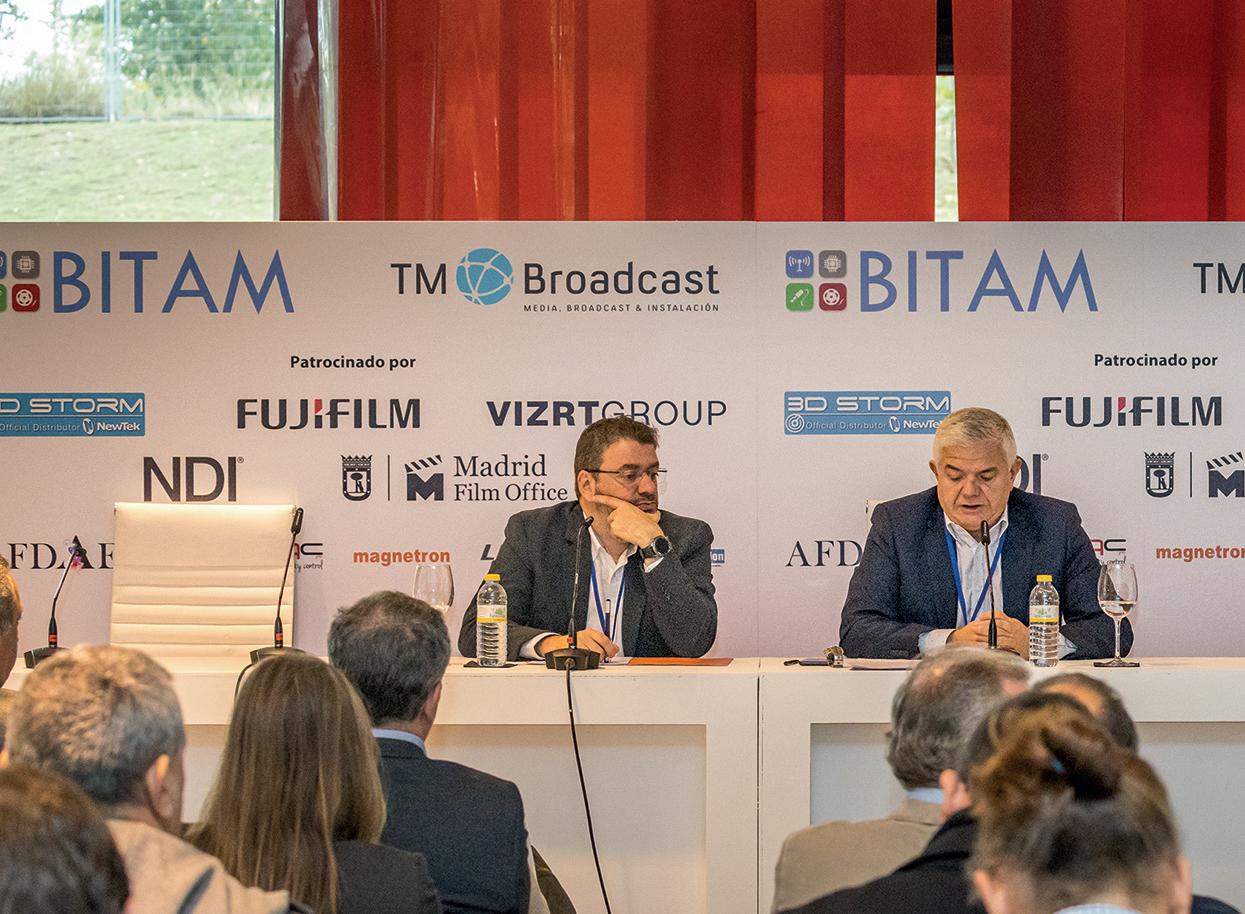
by Pere
Vila, director
of Technological
Innovation in the field of UHD
RTVE has been a pioneer in Spain and Europe in the 4K production sector. With companies such as Sony or Cellnex, we carried out the first productions and broadcasts in 2015. That first step gave rise to an extensive collaboration that was materialized in a partnership called UHD
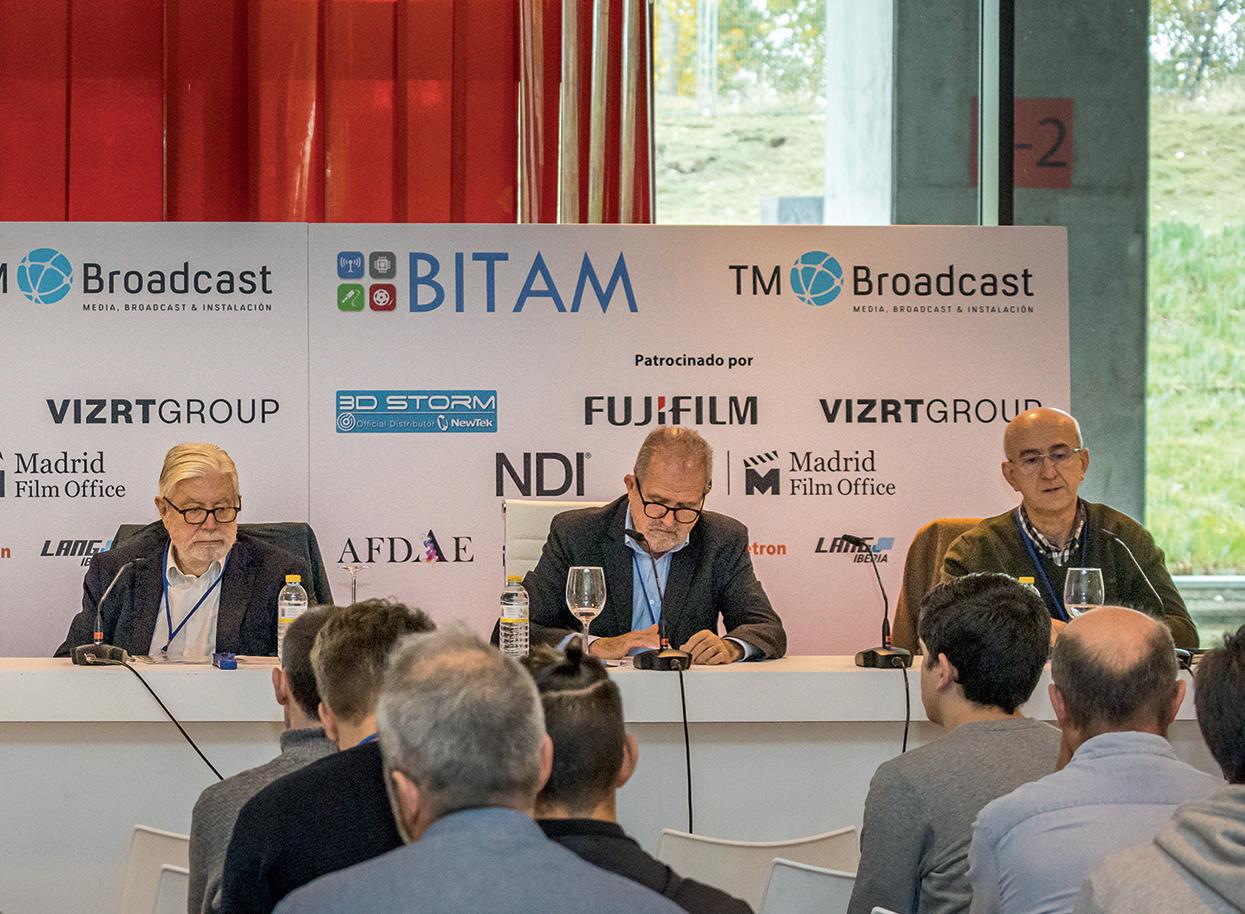
Spain. RTVE, together with 40 other Spanish companies, participates on
a non-profit basis in the goal of making UHD part of everyday life.
This partnership is divided into five working groups: recruitment, post-production, coding, broadcasting and receivers.
The combined effort is beginning to bear its first fruits: RTVE has announced that it will broadcast 19 matches of the Qatar World Cup in 4K in collaboration with Cellnex, Sapec and Dolby; companies with which we have been working.
RTVE will continue to be a member of this partnership in order to develop this technology. In fact, we have announced new work camps for year 2023. We’ll investigate the exchange packaging options. The goal is not to have to make different copies depending on the final platform. Another of our main lines of action for 2023 will be to develop the integration between 4K and 5G.
Innovation in the field of 5G
We have also been driving the use of 5G linked to production for some time. We have worked in the areas of connection, production, broadcasting and production in 4K. Our collaboration is also

supported by universities: the Polytechnic of Valencia and the Polytechnic of Madrid.
In this field we want to meet several expectations:
The first is to have a permanently connected camera. Nowasays, when an operator is shooting, the relevant content is recorded on the device. The natural thing would be that when a journalist was shooting the material could be shared directly with the editorial staff. With 5G we are about to achieve this. It will be possible to make a stand-alone 5G connection -we did the first one a couple of years agowhen operators are able
to ensure slicing. The goal of connected cameras is precisely not to have to do bonding.
The second field of action is 5G cloud production. A couple of years ago we collaborated with a company called Watchity. With two cameras, we uploaded the signals to the cloud and did the mixing there. More resently, we have made productions with a Sony and TVU mixer in the cloud. We have also made stand-alone 5G broadcasts with CastillaLa Mancha Telecom at the Almagro International Theatre Festival. What we have achieved is the ability to make a production on this technology.
The third element where we have to put the focus on is broadcasting. We were pioneers on an occasion in which -with the help of Rohde Schwarz and Cellnex- we used the signals of Canal 24H, Radio 5 and Radio 1 to package them in a specific format on a 5G structure within the context of the Barcelona Mobile World Congress. In the recent edition we had Qualcomm receivers to collect these signals. Our intention is to encourage the introduction of public service channels into 5G.
Last, another area we want to focus on is the integration of 4K and 5G. Together with Castilla-La Mancha Telecom, and in the context of the Almagro Theatre Festival, we made a 5G 4K production. This development is here to meet a specific need. If you want to make a 4K production nowadays, you have to rent a specific mobile unit. This costs a fortune. Thanks to tests like this, we showed that in a simple production consisting of three cameras, technology allows for the option of introducing a 4K mixer in the cloud and making a production in this
format on the latest cellular networks available.
Innovation in the field of artificial intelligence
RTVE is promoting innovations in the field of automatic metadata. All efforts combined, we produce more than 200 hours of content. All this content should go to the archives, which already include more than a million pieces. The goal is to get everything on it be readily available. We have created a chair with the University of Zaragoza to carry out this task on a semi-automated fashion. Alongside this tool, we also encourage the addition of a monitoring solution for documentalists.
Another AI solution we are working on is a pre-alert system for journalists. We collaborated with University Carlos III of Madrid to generate the ability to show to specific journalists information on their specific topics in an automated, customized way. We did it through Twitter listenings and the services of a company called Dataminr.
We are also promoting automatic creation of news from structured data. Years
ago, we called for bids and an awarded a contract for experimentation in this area. We did it in women’s football and generated complete news and not just teletypes. We had full articles with headlined, leads, text, photographs, etc. In addition, we created three texts from each game: one for the local team, another for the visitor and another in a neutral tone. We have now launched another similar project in the context of the 2023 municipal elections. The idea is to offer an article as detailed as in the previous case with a review on electoral information in municipalities with less than 1,000 inhabitants. On this occasion, we have come up with an addition: the voices of the main in-house anchors created by artificial intelligence. To achieve this, they have been narrating news for six hours and the system has captured their prosody in detail.
As this technology has progressed over time, we could also work even on unstructured data. We are developing a project -still in the design phase- that will consist of creating an AI tool specialized in a topic. The
core idea is that AI identifies a series of categories and extracts information from databases or unstructured information by filling in the fields automatically.
With these tools, we intend to create a new profile: an exojournalist. We do not want to replace the profile but add tools that make professionals grow.
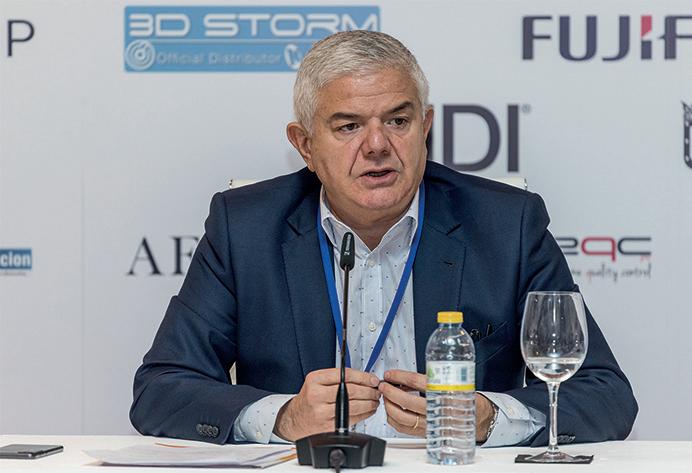
After the presentation made by our colleague Pere Vila on the promising capabilities of artificial intelligence, I am here to talk about human intelligence and value the work, effort and talent of our engineering teams, our integrators and our manufacturers. Thanks to them we have taken the big step towards IP.
The journey has met difficulties that, of course, were foreseen in our plans. We’ve solved them together. We achieved this thanks to a joint collaboration, technology exposed to interoperability
tests, and its adaptation to NMOS.
We had old studios in SD at our Barcelona production center (Sant Cugat). Our plans were to upgrade them to HD, but as the studios were to be opened in 2021, we wanted them equipped with cuttingedge technology. And then we saw the possibility of implementing IP.
We have already renewed four studios, two for news and two for general programs. The technology is already working to full satisfaction. The next step is to migrate continuity to IP. Once we achive this, we will
convert three HD studies into IP and we will renew the digital newsroom, where the feeding will also become IP. Having continuity set up, we would be in a position to deliver our signal not in SDI but in 2022-6 with integrated audio and video, not by separate channels. The last step will be to turn off the SDI router. This would be the roadmap for Sant Cugat.
Simultaneously we have to undertake these renovations in Prado del Rey and Torrespaña, as we have SDI matrices and multi-screens that are reaching the limits of
their capacities. As we did in Barcelona, we have to calculate our movements really well because the goal is to carry out the renovation without stopping production.
In 2023, we want to insert an IP routing layer while maintaining the current SDI matrix as a service for the studios. We want to do this by connecting all the deliveries from the studios and carrying out an interconnection of the production center and the nodal center.
The future outcome of this plan would be another IP routing in Torrespaña. The idea is that we attain a dark fiber connection between two IP routers so as not to need specific signal transport nodes. We would be dealing with a spine-lift communication or similar.
The goal of this development is to open up new scenarios and also make the most of softwaredefined hardware. This means that at present, for this IP migration in Prado del Rey we will need a cloud of gateways for the conversion between SDI and IP. However, this
investment can still be of use. Those gateways can be converted to multi-screens in the future, solving another of the challenges we have in our roadmap.
As the final stage of transformation into IP in the 2110 protocol, we are designing the renovation of a Torrespaña studio to make it IP without hybridization. In principle, this studio will be an IP island in an SDI world. However, when we reach Torrespaña with IP routing we will end the gateways that communicate it with the outside world.
Plans for implementation of the Augmented Reality technology
Recently, we have made a decision to replace relative positioning systems with absolute positioning systems. We have integrated reflectors and sensors inside the cameras or in their robotic heads.
The last general election was a crucial test for our augmented reality system. Since that occasion in which we achieved a total of zero failures, the Telediario (daily TV news) features on-stage augmented reality in nearly every singled program.
The future development is the implementation of virtual reality machines based on Unreal at a Prado del Rey studio. Our goal in this case is to generate virtual scenarios based on this graphical engine. We are also going to introduce in this studio extended reality technology on LED screens arranged in such a way that even two camera shots can be simultaneously displayed on the same screen.
Intention and characteristics of the new 4Kmobile unit
For years we had been intending to renovate our mobile unit fleet. In the specific case of this mobile unit, our intention in its design was to be able to work in 4K and HD, either simultaneously or not, work with any sound format as required and work in HDR and SDR.
by Francisco José Collado, deputy director of Support Engineering for Studios and Mobile Units
This unit has a capacity of up to twelve cameras. All of them are capable of producing both 4K and HD. They run on SDI 12G technology. We thought about designing it on IP but decided against it for several reasons. The first of these is that we would only be able to use it remotely from Barcelona. Another reason is that SDI maintenance and operation remain simpler for our staff. We also needed this unit to be part of a larger production. Therefore, it is ready to be interconnected with others through the distributed matrix.
The video mixer on this unit can work in both HD and 4K. Productions can also be made in 4K and HD. Content may be broadcast in HD and, at the same time, be produced in UHD. Through the same production, the two formats are produced simultaneously.
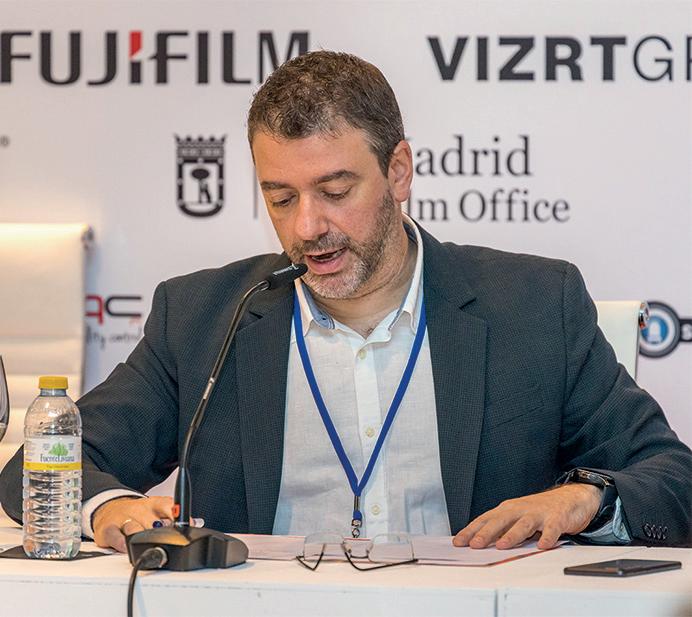
The 4K mobile unit is also ready to work in HDR and SDR, as well as to work in both formats simultaneously. For our part, it would be necessary to define the workflows, which are not that clear for capture and image control.
We’ve also added a slow motion capability to the recording and some of the cameras.
Regarding sound, it has a very powerful system that is capable of hosting large productions and all the sound formats that exist nowadays: surround and immersive audio.
Although the unit is not intended to work remotely, it is however capable of connecting via a VPN with production centers to remotely control computers. This is intended for secondary or alternative productions. A clear example of this capability would be for sports events where the main signal of the competition is available and, at the same time, other signals that generate other contents that bolster the event and that are published on social networks or on the corporation’s interactive platforms.
IP transmission in H265
Recently, the corporation has revamped its wireless transmission system, widely known as backpacks The goal has been to generate a high capacity so that TVE
can quickly cover any event happening in the Spanish territory.
To achieve this, we have implemented a wireless IP transmission and reception system that uses cellular network connection technology up to 5G. In addition, it can also be connected via WiFi and fiber networks via bonding.

The network on which we are relying is a distributed network, as is already commonplace in TVE. Network nodes have different hierarchies. The first rage is: information units; then and on top of
them: territorial centers; and, finally, the four production centers of RTVE with the one at Torrespaña as the core of signal management.
Each information unit has at least one backpack and the entire system is interconnected with each other. Each receiver houses a connection of up to four backpacks so as to avoid losing connections in case of a technical failure. Thanks to the system, Torrespaña can also be connected to each of the backpacks. In this way, the backpacks transmit to the specific territorial center
and, at the same time, to Torrespaña. On the other hand, at the production centers we have deployed solutions that offer us the possibility of integrating the backpack system with the newsroom system. Thus, we get the files to be ingested directly into the news system.
In 2010, RTVE pioneered the launch of a service that would enable consumption of its content on demand. It was once called “RTVE A la carta” (RTVE a la carte). However, in 2018 this service needed to evolve. The aim was to turn this service into a content delivery platform. In 2021, taking advantage of the Olympics, we launched the current “RTVE Play”. At the launch we won the approval of the European Next Generation programme. Thanks to this support we now manage 20,000,000 euros to improve the platform. The Secretary of
State has outlined what milestones and goals we need to achieve. There are two basic ones: the platform must be open to citizen participation in the hundreds of ways that there are available, and it must be a platform capable of harboring the entire audiovisual market, both national and European.

The core of the project is the user. Part of this condition is that we are about to launch a tender for a CRM that allows us to manage and interact with them. Another focus to this is customization. However, we have a handicap here: we cannot force users to register to enjoy the content and only in that way can the most efficient customization capabilities be achieved. Today there are around two million registered users, and the goal is to multiply that number by ten. Only then will we offer a really good customization service.
Another line of action is the opening of business models. The new audiovisual law in the digital environment will allow us to monetize in digital environments. Our
Commercial department is already aware of the generation and implementation of FAST channels.
What are we going to do with 20 million euros?
Integrating third-party content is one of the most important milestones. Our first move in this area will be the integration of the Canal ARTE, a channel focused on culture in which European public TVs participate. The aim is to integrate the contents in a completely transparent way for users. This condition results in technical challenges for us because third-party
integration models can be really varied in addition to being different depending on whether we distribute content ourselves or we are a channel through which others distribute content. Technological development in this respect is ambitious.
Another step we have already taken is the complete migration of “RTVE Play” to a public cloud. It has been done over the past summer and has given us many headaches. The main one has been the large volume of media assets that we manage. But we’ve overcome it and the platform is stable now.
The next step is one of the most important internally. We are going to change the content manager (CMS). This is one of the areas that will have the largest budget, almost 10%. We are now busy with the design of the migration, but the closing date has been already agreed. It will be Easter 2023.
Another important part of this item is related to the semantic interoperability of the web. Our goal is that the semantic search should be enhanced, and for this, we must change the ontology. Our big handicap is that the maturity of ontological technology in Spanish is not as advanced as in English. We worked

with the different university departments to progress in this area.
The design of the front-end has been commissioned to one of the best design firms in Spain. They have in charge of important projects such as “Landscape of Light”, they have worked with the City Council of Madrid and also with different ministries. They will be responsible for both image identity and the development of usability and image in web environments.
Another important part of the budget is taken by 155 functionalities such as user experience, consumption of content, as well as identity and registration, design of usability, accessibility, customization, participation, contribution or distribution of content.
All of these plans already have a closing date set. We will introduce the revamped “RTVE Play” platform in the last quarter of 2023.
One of the Broadcast Breakfast Day at the BITAM Show 2022 resulted in an interesting debate on the evolution of broadcasting in the coming years and the different workflows that are already being implemented.

Sergio
- José María Casaos, Technical Director, Telemadrid.
- Jesús García Romero, Director of the Technical Department, TVE.
- Suso Carrillo, NDI Marketing Lead at Vizrt Group.
- Sergio Ruiz, KAM South West Europe.
- Moderator: Yeray Alfageme, Business Development Manager at Optiva Media and EPAM company.
Yeray Alfageme, Business Development Manager at Optiva Media and EPAM company and a regular contributor to the magazine, began this session by suggesting to Telemadrid and RTVE to explain what cloud system adoptions they have carried out.

The example of Telemadrid
“The cloud is right now in a great state of technological maturity.” With these words, José María Casaos, technical director of Telemadrid, opened the discussion on this topic.
In the case of Telemadrid, the first thing that José María pointed out is that behind any project or initiative, whether of digital or more traditional transformation, they not only seek to implement it but also the reason for it, what value that movement brings.

The natural trend, to date, is to have all the applications in the cloud and the technical director of Telemadrid told us that they have carried out a process of migration of management applications to a SaaS model. On the other hand, he clarified that they have their own internal clouds, where for example they have the PAM, the digital production system, or the on-premises hardware.
Regarding the rest of the implementations, José María said that Telemadrid is in the process of transforming its entire production center into IP: “In this case to 2110, although NDI protocols or other IP
protocols are also in our infrastructure.” Why make this migration? Because of all the advantages it offers in scalability, flexibility or inclusion of new tools that help improve our daily work, as it has been the case with RTVE. “I want to
publicly thank Jesús and all his staff, because they have been pioneers. We were watching their studios in San Cugat and now we are immersed in this transformation process “, said appreciatively José María.
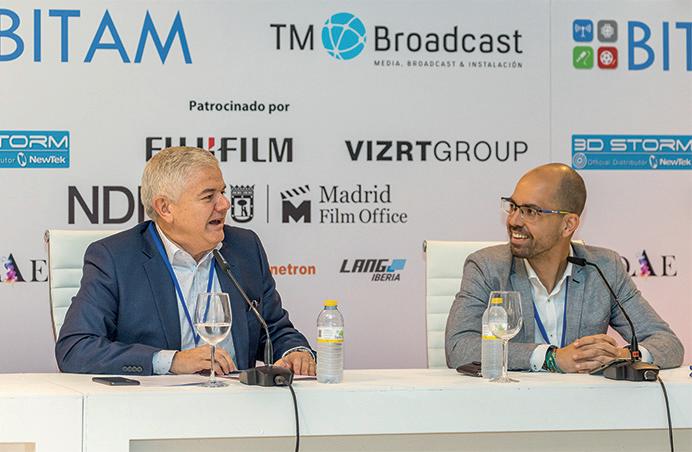
As Yeray reflects, it is very interesting to understand what the state of maturity is for the adoption and why it occurs in a certain way. To continue delving into the topic and taking into account the previous breakfast, in which RTVE talked about all the innovations that they have underway, Yeray asked Jesús García Romero, director of the Technical Area of TVE, what reasons have led them to the implementation of cloud solutions.
At first, Jesús reflected that for RTVE the main thing was to unify all digital media “especially in the area of digital editorial office”. Taking into account the territorial extension of its headquarters, accessibility to all the contents stored
by any editorial team was complicated. Regarding this, Jesús explained that the way for any media to be available has been to
end up in “a single digital editorial office based on Avid, which is not a public cloud, but a form of private cloud.” Now the accessibility “is absolute”, both regarding the contents of each editorial office and for the historical archive of Televisión Española.
On the other hand, he explained that they also work with two clouds that are public. One for their customers, where they can collect the content they have requested or
purchased: “Through Aspera, they are put on a public cloud and accessed by means of a URL.” And they also work with another public cloud to receive all the content provided to them by the majors.
To exemplify the use of the public cloud, Jesús made reference to the Qatar World Cup, where they intend to generate the entire production chain through this system.
From the manufacturers’ point of view
But what is the current demand to manufacturers in regard to this solution?
Sergio Ruiz, KAM South
West Europe, stated emphatically that it is “hghly variable” because each consumer will have different needs.
“There are times when best is an enemy of good.” Sergio, referred to Voltaire’s famous phrase to raise the question of to what extent cloud deployment is desirable or not. For them, the main thing is to question such convenience of the cloud and listen to what the customer needs.

“Are you still innovating in tools that facilitate this type of cloud adoption or is it all pretty much done?” With this question, Yeray, gave the word to Suso Carrillo, NDI Marketing Lead at Vizrt Group. For Suso, the tools are already there, but “it is a path which we are going to tread hand in hand with both manufacturers and users, who are the ones who are setting the pace.”
One of the points he raised is the presence of three large groups of cloud users. Those who use the cloud for varying software, those who find the value of the cloud in its functionalities, and those who find that
value in the economic side of it.
If we talk about cloud security, has it been a problem or has it been taken into account when making deployments into the public cloud? What security measures are in place?
For Jesús there is something very clear:
the security of the cloud because can’t be fully ensured because “sooner or later we all get hacked or will be hacked”. One of the problems that it poses in public television is the lack of professional digital profiles specializing on the subject. Likewise, some of the security measures they propose are: in terms of contracting, companies must have the standard ISO 21001 and adhere to or comply
with recommendation R143. They are working on the restriction of access, on the control of the ports of entry, they have surveillance waves in place to control what is happening in the network and therefore are able to filter by origin. All these security systems are a mix between what the cloud provider recommends and internal measures, Jesús explained.
José María agreed with every word from Jesús
and added: “security has three legs”. The first two are hardware and software, but the third is also very important: users.
In Telemadrid they are carrying out what they call “awareness plans”, whose aim is to educate and train people in security matters.
“It’s very important to know that security starts with ourselves.” These words were endorsed by all the speakers.
Suso agreed with the idea of education. To which Sergio added: “education, and we have to agree on the procedures and protocols that falls outside the EUR recommendations.
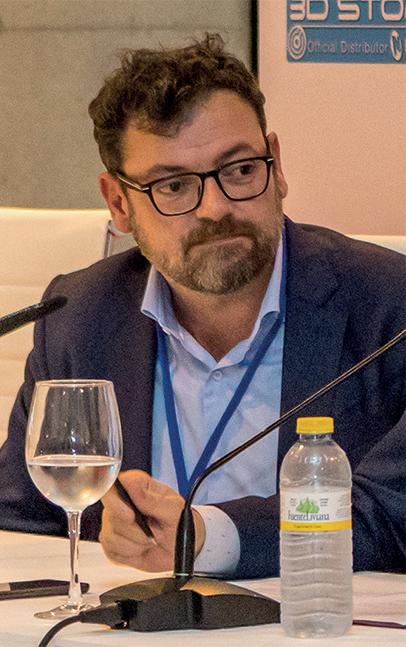
We have a product safety department that is dedicated exclusively to complying with EUR recommendations, along with other internal ones that we have in place.”
Regarding the hindrances that can be found when
deciding to implement these work systems, Jesús stated three different issues: on the one hand, the financial side, since perhaps the IP system is still too expensive as compared to what the traditional SDI structure was. A second hindrance would be that “the IP market is somewhat more rigid than the broadcast market”. By this he meant that the broadcast market is much more flexible, and the IP market imposes a regulation that is highly standardized. And on the other hand, as a public body, they must take into account the investment, because as Jesús explained, the equipment they have is “used to the maximum” and investments are not made in anything that is not necessary.
In contrast, one advantage stands out: sustainability. In his view, migration to IP contributes to “much more sustainable production and broadcast production infrastructures”.
Finally, he mentioned that they even considered that the adoption of
these systems would be complicated for the human factor. However, the entire team has welcomed it with “desire and enthusiasm”, although that extra point of being “digital natives” may be missing.
In relation to this last reflection, Yeray suggested that it could be considered as a positive challenge, because “although it can be regarded as a hindrance because people have to be reformed or updated, they are willing to do it”, which years ago was not seen in the same way. “We broadcast technicians are like legionnaires, we do what needs to be done,” Jesús commented in a humorous note, which prompted the laughter of those present.
As a result of this, Sergio reaffirmed the idea about end-user satisfaction when ia change is made into this type of workflows: “When we migrate a digital editorial office and put together HTML tools or modernize a digital editorial office, people come to thank you, to say: “you have improved our lives a little”, so that
adoption of technology for end users, which is something we do a lot of research on, is working just great.”
To conclude this block, Suso commented that “the future will not be for a single standard” and the willingness to learn about the virtues of the different protocols are enormous.
Do new digital environments have an impact on content production? For José María it depends on the strategy being pursued by each TV, but audiovisual production nourishes the digital area in a very high percentage. Some have decided to boost social media or open a new social network, others have headed towards the search for new audiences and in the case of Telemadrid, “the reasons are multiple”. But in the end the truth is that the development of digital systems “is tremendous.”
From his position, Sergio added that the fundamental thing is to understand how to help businesses by automating workflows. “A problem for all broadcasters is how to maintain the station’s branding throughout such long tail of mass production, because these workflows are really complex,” he added to close the issue.
José María pointed out that although the FAST Channels seem like a novelty, it is their natural way of distribution: “DTT is a FAST channel that works great,” he added in a more relaxed tone.
For Suso, the creation of the FAST Channels is an answer to two questions: on the one hand, the fact that OTTs have realized that they are losing audience because of their functionality in terms of having to choose the
content. “There will come a time when you have responsibilities, you will slouch on the couch in your home and maybe you won’t feel like being active. I don’t feel like searching for anything and then I go to the linear channel. “ And secondly, it opens up other avenues for monetization.
But if the speakers agreed on one thing, it was that this is no invention, just “another type of linear television.” Where FAST Channels do have the advantage is in artificial intelligence, Suso added.
On this subject, Sergio took the opportunity to lay on the table some of the interesting concepts on which Vizrt is working. With Flowics they are developing the “render on device” concept. As another example, with a Movistar+ studio, they are working on a real-time volumetric video integration pilot through Telefónica’s 5G network. “Imagine the potential integrations with the metaverse, multiverse. Will this then have some
business potential? It depends more on you than on us, we are here to help you and hopefully we will do as many crazy things as possible.”
To conclude the discussion, a section was devoted on the metaverse and what is expected of workflows in a perhaps not so distant future.
Jesús said that in terms of protocols everything will improve, and, from his vision of a public broadcaster, he thinks that there is still a lot to analyze in the model between Capex and Opex in regard to the cloud. Obout the metaverse, he believes that for companies, in terms of projection, it can have potential. In fact, RTVE is already thinking about what to do in this area.
José María reflected that a “new audiovisual language is being created that is
changing workflows”, to which they must adapt. Output can be multiple, be it metaverse, FAST Channels, DTT or any other innovation, but that new audiovisual language which “has a beutiful preproduction” has its pros and cons, although it’s what really changes the workflows.
Sergio concluded by stating that it is not possible to know what will happen in a few years with the metaverse or with new innovations, and therefore they must prepare the tools to accommodate those future needs.
And finally, Suso closed this last block noting that the standards will coexist in the future with each other and added: “I think we are experiencing an absolutely exciting time. There is a lot of creativity everywhere, a lot of desire to try new things. I think the adoption of IP is unstoppable. Of course, we are in one of the most beautiful times we have ever lived.”
New types of media content and the surging number of major live streamed events are driving a renaissance in media technology innovation, with new standards, formats, and resolutions evolving rapidly. One of the most prominent developments is around Ultra High Definition (UHD) with High Dynamic Range (HDR), which is on its way to becoming the mainstream viewing option for picture quality in streaming for valuable content.
UHD is not ‘just’ an upgrade of HD resolution: it’s the standard for content delivery and user experience that consumers now expect in their purchasing decisions and viewing preferences. Before speculating about the future of the UHD-based streaming ecosystem, it can be illuminating to refer to how streaming resolutions have evolved over the last decade and how
By Tony Jones, Principal Technologist, MediaKind
consumer expectations have continually changed in response to technology advances.
It used to be the case that device screen size roughly equated to consumer satisfaction with the viewing experience, while picture quality was closer to an adjunct than the main selling point. This is no longer the case. TVs are now sold and categorized by their resolution capacity, i.e., ‘HD TV’, ‘4K TV’ and ‘8K TV’. The arrival of 4K TVs in the early 2010s was the decisive point where picture quality moved from the marketing chorus line and was placed center stage. The combination of UHD, HDR used at both the content and display end of a media workflow makes the key step in the viewing experience.
The march forward of technology continually paves the way for higher expectations among consumers. It seems that no matter how far picture quality improves, even at the level of UHD technology, the mass market is never very far behind. This puts pressure on broadcasters, as a wave of new expectations closes in on the streaming market. It also raises the question of when we should expect consumers to embrace UHD as their new standard, and whether subscribers are ready to pay for higher resolution subscriptions given the current cost of
living crisis. Netflix recently tested these waters with its tiered subscription
offering based on video quality. Although consumer baseline expectations are currently anchored around HD quality, this could change quickly over the next couple of years.

It’s worth going deeper into what those billions of football fans can expect from UHD - for both its
technical specifications and the resulting experience.
From a consumer perspective, UHD means immersion and pristine picture. UHD’s requirement for progressive scans at 50Hz+ delivers clear and crisp picture and motion quality - even for fast-moving sports action - making fans feel transported and immersed into the action on-screen.
UHD also offers better conversion to other frame rates: progressive
at 2160p50 converts with fewer artifacts to 2160p59.94 for international feeds that need different frame rates, and single-production UHD can be used to derive better conventional HD outputs. Combined with High Dynamic Range (HDR) broadcasters can present colors on the screen as they should be: the effect of a low-contrast or washedout ‘filter’ that used to come between fans and the game will be a thing of the past.
UHD delivers the fullest and richest experience that most sports fans will have ever encountered and may in turn act as a catalyst for wider adoption of UHD across the board.
What I’ve just outlined is the product of a successful UHD broadcast. But it’s only fair to caveat that exciting preview by outlining some of the challenges broadcasters face in making that prospect a reality.
Technical and financial requirements pose a legitimate problem for broadcasters; many simply
do not have the same resources that some of the global powerhouses have at their disposal. However, some complementary technologies can be used to close that gap in resources. It’s here, where the connection between UHD and HDR and large screens is particularly strong. For high quality, valuable content such as the World Cup, consumers have every reason to watch on larger TV’s rather than smart phones or tablets. UHD and HDR streaming is not feasible on a phone, not least due to the size of screen needed to generate such a high-resolution picture. These types of events also tend to be best experienced in social viewing situations on big TV screens, be that in a living room or a sports bar.
All UHD connected TV manufacturers support High Efficiency Video Coding (HEVC), making connected TV’s a key driver for the adoption of HEVC and UHD among other formats. This trend allows TV operators to move away from QAM and multicast
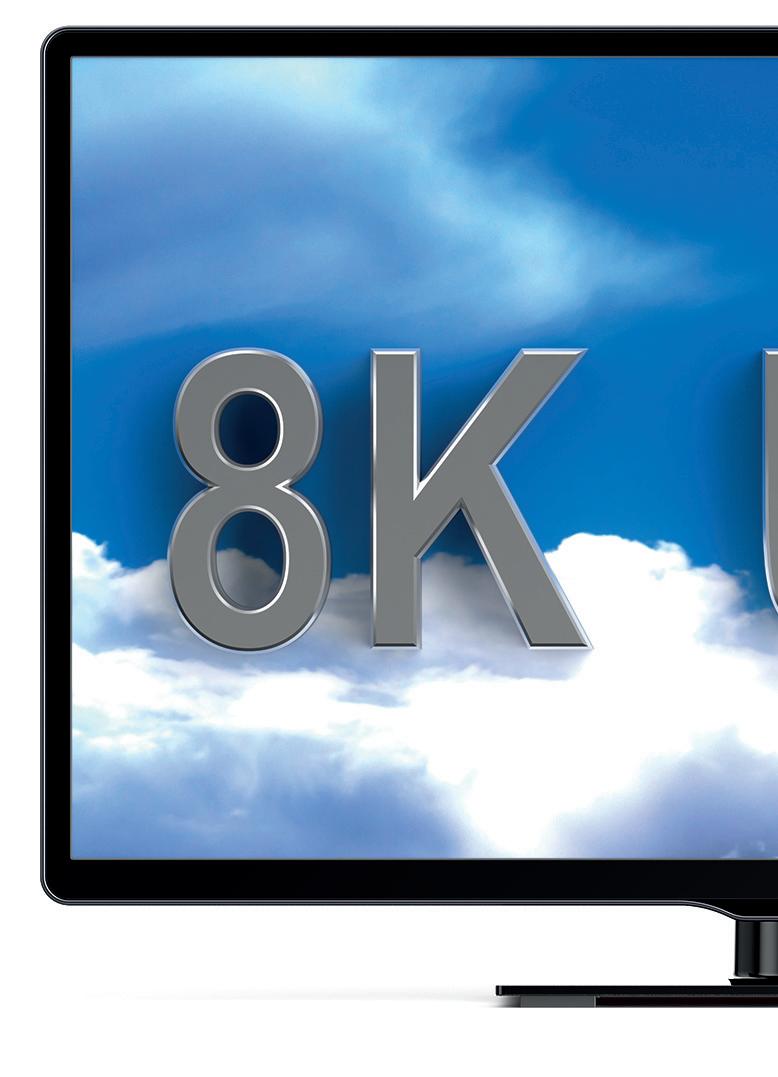
IPTV into the streaming world and is an important evolution in UHD viewing. One of the biggest barriers in delivering UHD over streaming for Pay TV is that operators must deliver each user their own unique stream, multiplying network traffic. By moving away from AVC encoded video to HEVC video, that transition to unicast streaming becomes
a lot less bandwidthdemanding.
As workflows for channel creation are updated, it makes sense to consider whether that offers an opportunity to move those workflows onto
cloud infrastructure. Cloud offers, among other things, high levels of efficiency and cost savings through automation of the lifecycle and configuration of content flows. These savings add up and can make UHD financially viable sooner for a wider range of broadcasters. There are still more tools which can help close the technical and
financial gaps to achieving UHD. VVC (Versatile Video Coding) is currently the highest standard of coding efficiency for producing UHD/HDR content. These tools may prove indispensable for broadcasters who aspire to adopt UHD, but there is an additional factor to consider for those who have ambitions beyond

simply keeping up with their competitors. Investing in efficiency optimization, with the tools outlined above, is also a way to future-proof against the challenges of the streaming ecosystem. It all comes down to the preparation.
If there’s a general principle to take away from this, it’s that we must pay attention to consumer behavior to plan for the future. Not every innovation is guaranteed to take off - but no broadcaster wants to be left behind when the next big thing takes hold of the market. This means that unless you happen to be a mass-scale broadcaster, the way to prepare is by thoroughly investigating the available tools to leverage maximum efficiency and flexibility for both scale and agility in workflows. In other words, your next steps will be sharpening your axe in preparation, not only for UHD but as part of a long-term strategy to accommodate changing technology and consumer expectations.
LiveU is a pioneer in IP signal transmission. Its innovation allowed breaking the biggest barriers associated with the broadcast world: time and cost. Its contribution, management and distribution systems offer end-to-end services with the highest quality, efficiency and effectiveness, and with minimal technical deployment. The achievement is very significant, but LiveU is continually working towards new innovations. What is the future of LiveU? How will it make use of technologies such as 5G or the cloud? How do they guarantee broadcasting? Here is LiveU’s present and future.

The company has been in existence for over 15 years, what has been the evolution of your technology during this time?
It was 16 years ago we began our journey, bringing IP bonding to the world. This is a technology that has truly disrupted the market. By this we mean that it has changed the way people think and work. It removed the constraints of fibre and satellite, introducing previously unimaginable flexibility and mobility at cost-effective price points, all based on our patented and award-winning LiveU Reliable Transport (LRT™) technology. Since then, we’ve continued to
evolve our market-leading position and now the whole industry is going through an IP revolution. Today, we’re offering end-to-end cloud-based solutions for live video production, from contribution and production to distribution.
This is a difficult question to answer as, without wishing to sound too clichéd, all our customers are important to us. Each one is unique, with differing requirements.
As our product and service portfolio has grown over the years, especially recently, this is even more the case now. We’re not here to dictate solutions to our customers; we’re here to understand precisely what they want to achieve and then we advise how best to do that and what they require from us. This is from one-person streaming operations to well-known Tier 1 broadcasters and sports rights holders around the world. Broadcasters like CBS, Fox Sports, ITV and Sky as well as working with NASA TV and other leading organizations. That’s just a tiny sample. We also work with many innovative other customers in diverse sectors such as emergency services, entertainment, education and telemedicine.
We have been involved in major elections around the world, including the US Presidential Elections and UK General Elections, and all the top international sports events, such as the Summer and Winter Games and world football tournaments.
For the world football tournament in Qatar, we are seeing the largest deployment ever with an over 100% increase in units since 2018. Hundreds of LiveU 5G/4G field units are being used by global broadcasters for 4K/HD quality live coverage of the tournament. LiveU’s cloudbased services are playing a key role in the production workflows, notably the use of LiveU Matrix for IP video distribution of live feeds to global takers. LiveU’s crew is on-site to support customers and engage with the technical aspects directly involved in the broadcast of the games. LiveU is also transmitting from the fan zones, enabling creative fan
engagement for millions of sports fans all over the world. LiveU’s service hub in central Doha is providing round-the-clock support and rental units with unlimited data plans, together with LiveU’s local partner, Resolution Hire. We are also providing on-site local support in multiple languages and across all competition venues.
During the Summer Games in Tokyo, we brought all the excitement live daily from Tokyo to viewers around the world. The Tokyo Games saw a 400% increase in LiveU deployment compared to Rio 2016, reflecting the growing trust and reliance on our solutions for highquality, reliable and costeffective live broadcasts, replacing traditional satellite and fibre methods for main event coverage as well as interviews and behind-thescenes.
LiveU’s end-to-end solutions were used throughout Tokyo by hundreds of news and sports broadcasters. Over 1,300 units were used,
delivering 19,000 live sessions from the different sporting events to 50 countries worldwide and 50,000 hours of continuous live broadcasts. In action for the first time at a major international sporting event was LiveU’s LU800 multicamera field unit, using NTT DOCOMO’s 5G, with its multi-camera capabilities providing dynamic coverage from multiple angles. Another first was the adoption of our LiveU Matrix IP cloud video management solution for cost-effective distribution of live feeds to broadcasters back home over the public internet. LiveU ran more than 30 channels of distribution to almost 100 stations across the world in the Matrix platform that were all dedicated to the Games. Businesswise, LiveU’s main focus is professional broadcast, what other verticals can the company explore?
This is a good question. Clearly our technology has a role to play outside live streaming
What are the largest projects you have been involved in?
by media companies, sports organisations and professional broadcast use.
Premium quality, live video is a constantly growing, highly effective method of communication across wide range of verticals. Telemedicine is a great example where the live streaming of medical work –surgical procedures spring to mind – helps educate other medical professionals around the world.
Another good example is emergency services use, including search and rescue in remote locations. Earlier this year Pegasus Aviación, based in Spain and operating across the country, Portugal, Italy, Chile and Uruguay, turned to us to help its firefighting services, using our IP bonding solutions to provide live streamed images and internet coverage from difficult environments where connectivity is scarce. It’s currently using a large number of LiveU’s LU300 compact field units in its helicopters to enhance its imaging services in Chile and Spain. These can be
controlled by Pegasus Aviación through LiveU’s cloud-based management system, LiveU Central. It also uses LiveU’s DataBridge technology to access high-speed internet while the aircraft are in flight.
Having begun by transforming the newsgathering space –becoming the dominant way news images are transmitted from the field, not least because of the portability and mobility of our field units – the last few years have seen us begin the same journey across the world of sports broadcasting and live sports productions. We are now far advanced along this path, as is clear to see. This has been a strategic objective of ours because the value proposition is obvious, either bringing the possibilities of live video to sports for which it was previously too complex and expensive, right up to Tier 1 rights holders and event organisers. As these sports organisations and
LiveU Volleyball World.
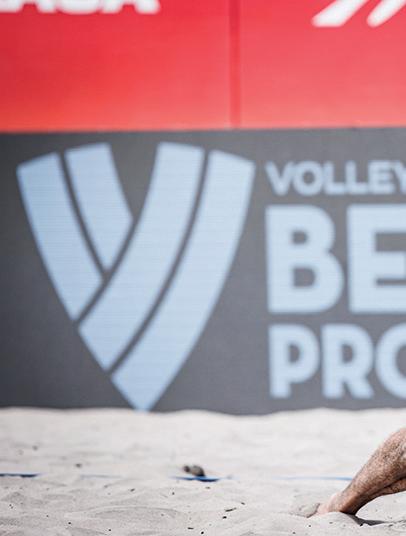
broadcasters of all shapes and sizes look to satisfy the ever-increasing demand from fans for content, content that truly engages those fans, so they need to increase the amount of content they either create themselves or purchase. As a good example, the world is seeing a rise in the number of specific sport OTT services – FIFA+ is a good example – where fans have access to both live tournaments and old matches.
In addition, we’re now beginning to see wider growth in live content –news and sports – on a variety of OTT platforms as the world continues to turn to online delivery. And we are seeing these platforms move from being solely
can LiveU target to expand the business?
about content acquisition to being about production, too.
Experts say that the future of broadcast production, and all stages of the production chain, will be based in the cloud. What future do backpacks have in such an environment?
It’s absolutely clear that the world is moving to the cloud and has been for quite some time. We have long since moved past the cloud simply being used as a datacentre. But there are some things, certainly currently, that cannot move to the cloud because of physical requirements and our field units absolutely fit into that category, as, of course, do cameras/
drones etc. Of course, the feeds from these units can be received by cloud servers with that content then able to enter a whole chain of possibilities. We are constantly evolving the capabilities of our field units – the multi-cam LU800 and LU300S, our powerful, small form-factor native 5G unit launched in 2022 – which are prime examples of this. We never stand still. We see the future of our field units and our rackmount encoders as being a constant evolution of what we are already doing as part of an end-to-end cloud-based production workflow. Our latest offerings include our LiveU Ingest solution for automatic recording and story metadata tagging of live video, and LiveU Air Control, serving as a single collaboration solution to get remote guests on-air and live feeds into the system in broadcast-quality.

The cloud is very much our present and future and we are now living in a world
where real-time processes can be handled in the cloud, from feed reception through editing, and other processes, to distribution. Having established multiple partnerships with other powerful industry players – including Avid, Blackbird, Grass Valley and Vizrt, with all these still highly active collaborations – in 2022 we have taken the next step and acquired cloudbased video production provider easylive.io. This is central to our strategy, with easylive.io’s all-in-one live streaming production studio now being seamlessly integrated into LiveU’s end-to-end cloudbased workflow for live contribution, management, orchestration, ingest and distribution.
The move will provide remote and collaborative tools for cloud-based and hybrid productions, enabling customers to operate and scale up, while still reducing equipment and production costs, quickly and easily from anywhere including video switching, audio mixing, adding graphics, localising content and bringing on guests.
The cloud is also about distribution and our work with Volleyball World, creators of an integrated ecosystem connecting all volleyball stakeholders (fans, athletes, corporate partners) together through both digital and live events, has turned to us to bring cost-effective coverage of its global beach volleyball tournaments to viewers around the world across 2022.
LiveU is providing Volleyball World with a fully managed, end-to-end IP distribution service using LiveU Matrix and LiveU multi-cam LU800 field units. LiveU is supporting multiple tournaments across 2022. LiveU Matrix is our nextgen cloud video solution allowing users to share and receive high-quality, low-
latency live feeds with, and from, broadcasters and other stakeholders around the globe – inside or outside their organisation.
Remote production is a core element in the DNA of your products, but how has your company changed in the wake of the pandemic?
Yes, correct, remote production (REMI) is absolutely at the heart of what we do; our products are fundamentally suited to this approach. With LiveU, customers can reduce costs and produce reliable highquality live events from a centralised studio control room instead of on-site production and/or satellite trucks. It allows people to think and work differently,
further enhancing the dynamic nature of a production and further extending the reach of what’s possible to capture.
We had already worked with customers on remote production projects prior to the pandemic but, as with the whole industry, the pandemic was absolutely the mother of invention (or use, really) as it removed hesitancy simply because there were often no alternatives. This applies to remote production and remote working more generally.
We have continued to enhance or remote production workflow, increasing the capabilities of our technologies – like our Tally Light system, IP Pipe, which provide realtime remote control over a wide variety of networkbased equipment, Audio Connect for real-time communication during production and Video Return, which allows crews to see what’s live on air.
Remote production is, again, very much the future.
How does LiveU ensure security and reliability in transmission?

This is quite a simple question to answer, although the technology itself is far from that. Underpinning what we do, and as mentioned earlier on in this article, is our patented and award-winning LiveU Reliable Transport (LRT™) technology. This is the video and audio protocol developed by us. It’s not only a point to point, low latency, high resiliency protocol, but it was built to accommodate the special properties of cellular and LTE networks.
Most importantly, it was built from its inception to support bonding of many connections. LRT™ is the power behind all LiveU devices and software, used extensively for video transmission, contribution and backhaul, as well as worldwide video distribution over the public internet. So reliable is it that we’re seeing, and have done for the last few years, our technology being used for redundancy, even on major events.
When a broadcaster has to cover a really important press conference, say a
president’s statement to a country in a state of emergency, broadcasters still rely on cable networks, so why hasn’t backpack production become the standard?
Being honest, we don’t agree with the premise of this question! It’s no longer our experience with our customers and hasn’t been for some years. Our technology is used by news organisations and broadcasters around the world precisely for these purposes, including covering major global news events such as press conferences with political leaders, and more. LiveU units are seen in great quantity at every event!
As an example, in the region, during the pandemic, Samuel Martins, President of the Centre for the Government Electronic Network (CEGER) in Portugal, explained, “LiveU Solo has been a fundamental technology in allowing the Portuguese government to be able to communicate to the whole country the work that is being carried out to combat the COVID-19 pandemic. The Prime Minister’s
main communications via the government’s official Twitter feed have been made possible by LiveU. Other important information about the COVID-19 situation, such as communications from the Ministry of Home Affairs, Finance and the Economy, have been achieved using this technology. With the communication this LiveU technology allows it has been possible to avoid having too many people (especially journalists) in the same space. Journalists follow up remotely to ask their questions.”
LiveU solutions are also used as backup for main in many ongoing sporting events, providing a reliable and cost-effective solution. For example, ITV Sport, premier UK sports producer for the ITV network, turned to LiveU to provide an enhanced viewer experience at the 2019 Rugby World Cup (RWC) as well as a tertiary disaster recovery (DR) solution, backing up satellite and fibre feeds.
There is another layer to the backup, provided by LiveU. Many customers use LiveU units over LAN
and the cellular network as the backup. There are also examples of customers using LiveU units as a backup for their fibre network.
The 5G band is not yet globally deployed, but LiveU has already developed products compatible with this infrastructure. What is the purpose of this move?
The move between LTE generations is often talked about in terms of revolution and while the ultimate benefits are clear to see and will be revolutionary – far higher bandwidth and lower latency – in reality, the actual move between generations is more evolution. This is what happened with 2G to 3G and again with 3G to 4G. And it is happening now with 5G.
We’ve been extensively engaged in the ongoing development and deployment of 5G around the world for over five years now. We’ve been working at an EU level on a wide variety of trials, including network slicing, to ensure that
we not only understand the detailed technical situations and capabilities, but we also develop a great understanding of the potential applications.
We’ve carried out successful commercial trials with leading cellular providers, including AT&T, T-Mobile, NTT DOCOMO, Vodafone with Sky Italia and Korea Telecom (KT), to name a few. We’ve also worked with Sky Deutschland/ Telefónica on a test using our LU-Smart smartphone technology to stream a handball match and also a second trial with a 2. Bundesliga match using the LU800 with the Vodafone network for next-gen sports production.
There are many more examples. This has enabled to us create 5G-native technologies – the LU800 and LU300S are prime examples, though, of course, they also work with previous LTE generations. It is an essential part of what we do that we understand the drivers behind network developments, what it means for our R&D and what it means for our customers. We need to be ready ahead of time – as
we are with 5G – so as and when deployments occur around the world, our customers can take advantage. We do the work so that our customers don’t have to. They, by and large, aren’t concerned with whether it’s 4G or 5G, they simply want to capture the content where they want, when they want, and leave the technical background details to us.
Everything is great advantages in 5G and, according to renowned professionals, the technology is already ready. However, it has not yet become a standard, what does it take to get to this point?
If you mean that 5G networks aren’t standardised around the world then yes, this is correct. There are variations in spectrum use/frequency and other factors. Indeed, it’s been true to say, so far, many rollouts are based on 4G technology in the back end, not true 5G. But this is and will change. The pandemic undoubtedly slowed the rollout of 5G networks but this is also changing now. There have always been
differences around the world when it comes to mobile network topologies and standards and we have to ensure our technology is compatible wherever it’s used. 5G is here and is here to stay, of course. But we have shown in the trails in which we have taken part that bonding is still essential when it comes to maximising the reliability of 5G use. 5G does come with it limitations, indoor use being a prime example and bonding provides the solution.
Within the topic of 5G, LiveU is an expert in transmission technology and, precisely, one of the technologies needed for 5G to be implemented as a standard is the receiving technology. Is LiveU working on a solution in this regard?
It depends what you mean by “receiving technology”. In terms of IP bonding workflows, yes, of course we have that technology in place (see above). If you’re talking about consumer reception of services – TV services, for example – via 5G devices, that’s not a world in which we operate. We are a contribution and content processing technology with IP (cloud) distribution solutions alongside.
Innovation is another of LiveU’s defining factors. How many resources does the company devote to this aspect?
You’re right, innovation has always one of our defining factors with the company committed to deliver cutting-edge technology and solutions. For example, LiveU was the first company to launch its native 5G production-level field unit with multi-cam capabilities. The product was launched in the middle of the pandemic (June 2020), and successfully rolled out while our teams were largely working remotely.
In addition, as we mentioned above, LiveU
is extensively engaged in the ongoing development and deployment of 5G solutions around the world. We’re at the forefront of 5G-based field production with our successful live 5G broadcasts, alongside leading cellular providers. We’re active participants in five EU 5G Infrastructure Public Private Partnership (PPP) projects, funded by Horizon 2020: 5G-SOLUTIONS (#856691), 5G-TOURS (#856950), 5G-RECORDS (#957102), COPA EUROPE (#957059) and 5G-Xcast (#761498).
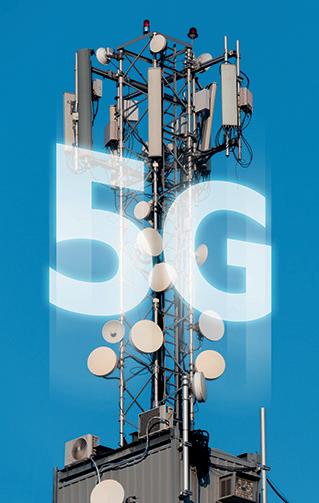
Based on our experiences from both public and private 5G partnerships, we have gained a unique insight into the role IP bonding plays, ensuring our customers reap the benefits of 5G
What are LiveU’s next steps at the technological level?
We will continue to broaden our end-to-end offering from contribution to management, production and distribution based on on-prem, cloud and hybrid workflows with flexible business models which can be tailored for customers’ needs.
